- The Midwest
- Reading Lists


The 10 Best Books on Walt Disney
Essential books on walt disney.

There are numerous books on Walt Disney, and it comes with good reason, he was an American animator, film producer, and entrepreneur. As a pioneer of the animation industry, Disney introduced several developments in the production of cartoons, and as a film producer, he holds the record for most Academy Awards earned and nominations by an individual, having won 22 Oscars from 59 nominations.
“All the adversity I’ve had in my life, all my troubles and obstacles, have strengthened me…You may not realize it when it happens, but a kick in the teeth may be the best thing in the world for you,” he remarked.
In order to get to the bottom of what inspired one of history’s most consequential figures, we’ve compiled a list of the 10 best books on Walt Disney.
Walt Disney: The Triumph of the American Imagination by Neal Gabler

Walt Disney was a true visionary whose desire for escape, iron determination, and obsessive perfectionism transformed animation from a novelty to an art form, first with Mickey Mouse and then with his feature films – most notably Snow White, Fantasia, and Bambi . In his superb biography, Neal Gabler shows us how, over the course of two decades, Disney revolutionized the entertainment industry. In a way that was unprecedented and later widely imitated, he built a synergistic empire that combined film, television, theme parks, music, book publishing, and merchandise. Walt Disney is a revelation of both the work and the man – of both the remarkable accomplishment and the hidden life.
Disney’s Land by Richard Snow

One day in the early 1950s, Walt Disney stood looking over 240 acres of farmland in Anaheim, California, and imagined building a park where people “could live among Mickey Mouse and Snow White in a world still powered by steam and fire for a day or a week or (if the visitor is slightly mad) forever.” Despite his wealth and fame, exactly no one wanted Disney to build such a park. Not his brother Roy, who ran the company’s finances; not the bankers; and not his wife, Lillian. Amusement parks at that time, such as Coney Island, were a generally despised business, sagging and sordid remnants of bygone days. Disney was told that he would only be heading toward financial ruin.
But Walt persevered, initially financing the park against his own life insurance policy and later with sponsorship from ABC and the sale of thousands and thousands of Davy Crockett coonskin caps. Disney assembled a talented team of engineers, architects, artists, animators, landscapers, and even a retired admiral to transform his ideas into a soaring yet soothing wonderland of a park. The catch was that they had only a year and a day in which to build it.
On July 17, 1955, Disneyland opened its gates…and the first day was a disaster. Disney was nearly suicidal with grief that he had failed on a grand scale. But the curious masses kept coming, and the rest is entertainment history. Eight hundred million visitors have flocked to the park since then.
Walt Disney: An American Original by Bob Thomas

Walt Disney is an American hero. From Mickey Mouse to Disneyland, he changed the face of American culture. His is a success story like no other: a man who developed animated film into an art form and made a massive contribution to the folklore of the world.
After years of research, respected Hollywood biographer Bob Thomas produced a definitive biography of the man behind the legend of Disney: the unschooled cartoonist from Kansas City who when bankrupt on his first movie venture and developed into the genius who produced unmatched works of animation, and ultimately was the creative spirit of an international entertainment empire that has enchanted generations.
Buying Disney’s World by Aaron H. Goldberg

In November of 1965, after numerous months of speculation surrounding a mystery industry that had been purchasing large amounts of land in central Florida, Walt Disney finally put an end to the rumors. He announced to the public his grandiose plans for the thousands of acres he had secretly purchased.
For the eighteen months prior to the announcement, Walt entrusted a small group of men to covertly make these purchases. Next, they were tasked with drafting a legislative act to submit to the state of Florida that would allow Disney to wield nearly absolute legal control over the property under a quasi-government municipality.
As told through the personal notes and files from the key figures involved in the project, Buying Disney’s World details the story of how Walt Disney World came to be, like you’ve never heard before.
From conception to construction and everything in between – including how a parcel of land within Disney’s Fort Wilderness Resort was acquired during a high-stakes poker game – explore how the company most famous for creating Mickey Mouse acquired central Florida’s swamps, orange groves, and cow pastures to build a Disney fiefdom and a Magic Kingdom.
The Imagineering Story by Leslie Iwerks

The highly acclaimed and rated Disney+ documentary series, The Imagineering Story , becomes a book that greatly expands the award-winning filmmaker Leslie Iwerks’ narrative of the fascinating history of Walt Disney Imagineering. The entire legacy of WDI is covered from day one through future projects with never-before-seen access and insights from people both on the inside and on the outside.
So many stories and details were left on the cutting room floor – this book allows an expanded exploration of the magic of Imagineering. So many insider stories are featured. Sculptor Blaine Gibson’s wife used to kick him under the table at restaurants for staring at interesting-looking people seated nearby, and he’d even find himself studying faces during Sunday morning worship.
“You mean some of these characters might have features that are based on people you went to church with?” Marty Sklar once asked Gibson of the Imagineer’s sculpts for Pirates of the Caribbean. “He finally admitted to me that that was true.”
Walt’s Disneyland by Marcy Smothers

Walt Disney’s personal imprint remains firmly intact at Disneyland. Walt’s Disneyland allows guests to walk around Disneyland identifying the attractions and landmarks Walt championed, touching what he touched, and seeing his original Magic Kingdom through his eyes. Walt’s Disneyland is organized land by land, clockwise, beginning with Main Street, U.S.A. then on to Adventureland, Frontierland, New Orleans Square, Fantasyland, and Tomorrowland.
Walt’s Apprentice by Dick Nunis

Walt’s Apprentice: Keeping the Disney Dream Alive is the memoir of Disney Legend Dick Nunis. It is a warm personal reminiscence of learning directly from Walt Disney for 12 years, followed by more than 30 years devoted to championing his vision and standards as the Disney empire grew.
The story covers Disney’s highlights, including the 1960 Winter Olympics, 1964-1965 New York World’s Fair, and the development and opening of Disneyland, Walt Disney World, Epcot, Tokyo Disneyland, and Disneyland Paris.
Unlike other Disney books, this story is told from the perspective of operations rather than Imagineering. It touches on decisions that defined the guest experience and Disney’s reputation for quality in areas ranging from capacity and people-moving, training, delivering a consistent “good show,” food service, and more.
The Disney Story by Aaron H. Goldberg

Welcome to The Disney Story , this gem among books on Walt Disney provides a decade-by-decade account of the man, the mouse, and the theme parks. From Mickey Mouse’s debut at the Colony Theatre in November 1928 to the opening of Shanghai Disneyland in 2016 – and everything in between.
The Walt Disney Film Archives by Daniel Kothenschulte

One of the most creative minds of the 20th century, Walt Disney created a unique and unrivaled imaginative universe. Like scarcely any other classics of cinema, his astonishing collection of animated cartoons revolutionized storytelling on screen and enchant to this day across geographies and generations.
This expansively illustrated publication on Disney animation gathers hundreds of images as well as essays by Disney experts, taking us to the beating heart of the studio’s “Golden Age of Animation.” We trace Disney’s complete animation journey from the silent film era, through his first full-length feature Snow White and the Seven Dwarfs (1937) and Fantasia (1940), right up to his last masterpieces Winnie the Pooh and the Honey Tree (1966) and The Jungle Book (1967).
With extensive research conducted through the historical collections of the Walt Disney Company, as well as private collections, editor Daniel Kothenschulte curates some of the most precious concept paintings and storyboards to reveal just how these animation triumphs came to life. Masterful cel setups provide highly detailed illustrations of famous film scenes while rare pictures taken by Disney photographers bring a privileged insider’s view to the studio’s creative process.
The Gospel According to Disney by Mark I. Pinsky

Religion journalist Mark Pinsky explores the role that the animated features of Walt Disney played on the moral and spiritual development of generations of children. Pinsky explores thirty-one of the most popular Disney films, as well as recent developments such as the 1990s boycott of Disney by the Southern Baptist Convention and the role that Michael Eisner and Jeffrey Katzenberg played in the resurgence of the company since the mid-1980s.
The Walt Disney World that Never Was by Christopher E. Smith

On an alternate earth, Walt Disney World guests are taking in the thrills of Thunder Mesa, braving the Beastly Kingdom, marveling at Villains Mountain, and staying the night at Disney’s Persian Resort. Want to join them? This is your guidebook to the theme park that Disney never built.
In this unique, extensively researched book, Christopher Smith discusses the many attractions, shows, and resorts that were planned for Walt Disney World, from opening day to the present day, but that exist only in the minds of Imagineers.
You’ll find old “favorites” such as Thunder Mesa and Beastly Kingdom, as well as those lost to the pixie dust of time, like Dick Tracy’s Crime Stoppers, the Enchanted Snow Palace, and Buffalo Junction. Smith looks at the politics and internal struggles behind the decision to shelve each concept, and imagines what guests might have experienced.
If you enjoyed this guide to essential books on Walt Disney, check out our list of The 5 Best Books on Steven Spielberg !
- Skip to main content
- Skip to primary sidebar
- Skip to footer
MousePlanet - your resource for all things Disney
The Best Walt Disney Biographies
June 25, 2008 by Wade Sampson
I recently added to my Walt Disney biography collection with an autographed copy of the just-released paperback edition of The Animated Man: A Life of Walt Disney by Michael Barrier. It’s a bargain for less than $15 at Amazon ( link ).
Barrier has always been one of my heroes and was the inspiration for me to start writing articles on animation history many decades ago when his legendary Funnyworld magazine was being published. The paperback edition is a special treat because he has made corrections and additions to the previously published hardback edition (that is also in my permanent library).
However, there weren’t that many corrections and additions to be made because Barrier has a reputation for accuracy. Despite the hype surrounding other recent Disney biographies, some folks forget that Barrier began his interviews and research in 1969, almost 40 years ago, and had full access to the Disney Archives, as well as to people who worked with Walt who had long since passed on to their great reward when others decided to begin work on their Walt biographies.
However, readers need to be warned that Barrier has a well-deserved reputation for being highly opinionated and those opinions are sprinkled throughout the text along with never-before revealed information. Also, Barrier most interested in Walt’s work in animation (hence the title of the book) so those wanting fresh insights into Disneyland or other projects that fascinated Walt may be disappointed that they are not given greater attention.
If you are a fan of Walt Disney and want information that you know you can trust, then I definitely recommend you add this book to your collection and visit Mike’s always fascinating Web site at MichaelBarrier.com ( link ), where he continues to unearth treasures of Disney history. This recommendation comes from a guy who has dozens of Walt Disney biographies in his personal library from foreign editions to unpublished versions (and trust me, they deserve to be unpublished) to children’s biographies.
There are two other Walt biographies that you will also want to make sure you have in your library. In 1955, Saturday Evening Post magazine approached Walt about telling the story of his life in a series of installments that would be “told to” staff writer Pete Martin who had done the same type of thing with other celebrities from Bing Crosby to Arthur Godfrey.
Walt wasn’t interested but realized that it would be a way to help his daughter Diane and her husband Ron Miller get enough money to buy a house if the series was formatted as if his daughter was telling the story of her dad’s life.
“Throughout that summer, Pete, Dad and I met in a poolside room at my parents’ home,” Diane Disney Miller. “Dad told the story of his life, occasionally interrupted by Pete, and Pete got it all on tape. Although my father had given many interviews and was always willing and eager to talk about his life, this exercise presented an opportunity for him to offer the whole narrative—a story he loved to tell. I was at times spellbound. It was a precious experience for me and we did, eventually, buy our first home.”
Beginning with the November 17, 1956 edition, the “Saturday Evening Post” began an eight-part series titled My Dad, Walt Disney by Diane Disney Miller as told to Pete Martin. She gives Martin full credit for shaping that raw interview material into such an entertaining series that with some editing it was issued by Henry Holt and Company in 1957 as the first book biography of Walt titled The Story of Walt Disney by Diane Disney Miller.
For $5 you could buy a copy at Disneyland in the mid-1950s autographed by both Walt and Diane. (I also have the British and German editions in my library since they have different photos or photos cropped differently and a copy of the 1959 DELL paperback reprint.)
Fortunately, for the 50th anniversary of Disneyland in 2005, Disney Editions released a reprint (ISBN 0-7868-5562-2) that unfortunately was not well publicized and appears to have gone quickly out of print. Try to locate a copy because it also includes End Notes by Dave Smith of the Disney Archives that corrects and enlarges on some of the information since Martin took Walt’s information at face value and Walt was not always correct on titles or chronology.
The original edition of The Story of Walt Disney was out of print by the 1960s and the Disney Company decided that, with Walt’s death, there was a need for an official updated biography, especially since an “unofficial” and often critical biography titled The Disney Version by entertainment writer Richard Schickel appeared in 1968.
Card Walker, then president of the Disney Company, encountered Associated Press entertainment writer Bob Thomas at a UCLA cocktail party where the two men had gone to school and realized that Thomas was the perfect person for the job.
In 1973, Thomas was invited to lunch with a few Disney executives at the Disney Studio. They told him that two other writers had tried their hand at writing the official biography but both of the attempts had proven unsatisfactory.
Walker represented the Studio and Ron Miller, who was then vice president of production, represented the Disney family and told Thomas that “You will have complete freedom to write Walt’s story as you see it.” (Out of respect for the family in the final draft, Thomas left out the fact that Sharon Disney was adopted although that information now appears in the current edition.)
At the time, Thomas had written biographies of entertainment figures like Harry Cohn, David O. Selznick, and Walter Winchell. However, this was the first time that Thomas would have full access to family members, letters, and official documents as well as others who might have refused to be interviewed if it were not an officially sanctioned project.
In the late 1950s, Thomas had written The Art of Animation book under Walt’s supervision to promote the upcoming film, “Sleeping Beauty.” It was the first book to identify and showcase a picture of the famous Nine Old Men, as well as giving credit to a number of other Disney artists who had worked in obscurity for decades. This original edition is much treasured by both animators and Disney historians. Later, revised editions in the 1990s are missing much of the fascinating technical information and illustrations of the original edition as well as the detailed information on “Sleeping Beauty.”
In 1965, Thomas was approached by a publisher who wanted a biography of Walt Disney geared for children. While Thomas felt he would have to write the book based on file material, he soon discovered that Walt despite being busy with numerous projects was excited to participate and allowed Thomas to interview him at length four times during the writing of the book.
“He seemed eager to sum up the lessons he had learned as a boy and tell young people how he applied them in his later life,” Thomas remembered in later years.
The book Walt Disney: Magician of the Movies was released in 1966 from Grosset and Dunlap as part of its “Pioneer Books” series of children’s biographies. It was the first children’s biography of Walt and the first new biography of Walt in a decade.
For the biography that the Disney Studio wanted done, Thomas insisted on being a free agent and requested that his book not be labeled an official company biography.
For An American Original , Thomas called upon his own acquaintance with Walt. Walt had driven Thomas in a car through the ditches that would become Disneyland’s Jungle Cruise while Walt described what would be happening along the banks. Thomas remembers being enthralled with Walt’s vision. He also had the many interviews he had done with Walt over the years, including the four for the children’s biography.
In addition, he pulled from the Pete Martin interviews, as well as new interviews with people who had known Walt personally including Walt’s nurse, Hazel George, who had been a confidante of Walt’s.
Sadly, for those of us who would like to study those interviews for greater insight into Walt, only about 15 of those interviews were ever recorded and transcribed. Thomas only took reporter notes on many of the others who he talked with about Walt. Fortunately, the interviews that survive will be reprinted in upcoming editions of the “Walt’s People” book series. In addition, Thomas used notes from story conferences and organizational meetings for reference.
“Garson Kanin once told me that all my books deal with power. Thalberg, Cohn, Selznick, Hughes—all had tremendous power of a kind that is virtually nonexistent today. Disney, too. Some see him as a political conservative, some see him as a benefactor of mankind, some as a benevolent despot, some as the tyrant of the studio. The truth is somewhere in between as it most often is,” said Thomas when the book was first published in 1976.
“Each life is different; each subject requires a different approach,” he said. “Cohn—his life was outrageous. I had to use an almost documentary approach. His audacity had to be offset by a more straightforward view. Thalberg was not as exciting, but the dynastic elements of his family intrigued me. With Walt, his daughter Diane told me that he once said he pitied his biographers because he had lived such a dull life. I found myself going into the creative aspects of his life to try to explain where his creativity came from, how it worked.”
In some ways, Thomas’s book was a response to Richard Schickel’s book The Disney Version .
“I wanted to do an independent, objective book. I don’t consider it an assault. In many respects, I gave Disney high marks. In any event, it is always good to have a second biography,” stated Schickel when Thomas’ book was released.
Maintaining a demanding schedule of writing four articles and two columns a week for the Associated Press, Thomas wrote the Walt biography on weekends and vacations. Instead of working with index files as he had done when compiling his previous books, he adopted the same method of storyboarding material that Walt himself used for animated cartoons. Thomas wrote three drafts and that was unusual compared to his previous books.
Author Ray Bradbury reviewed Thomas’s book for the Los Angeles Times in January 1977:
“And here’s a new book by Bob Thomas which tries to explain the mystery of a man who looked like a Kiwanis chairman, who became Charlemagne and Merlin and St. George, who killed a dragon to make it live forever. I don’t, of course, for a moment believe that Uncle Walt can be explained. Bob Thomas makes the best weather report he can on a man whose ups and downs would drive a billion barometers paranoid.
“Thomas knew Disney when he was alive, has written two other books on Walt and his arts and ideas, and this time out has talked with members of the Disney family as well as most of the animators, producers, directors and personal secretarial staff out at the studio. The result is a calm and complete analysis of a free spirit who failed again and again and again in order to succeed.
It’s all here in Bob Thomas’s book. The bouquets and the bombs…..If I have any carps at all it is simply that Bob Thomas’ book isn’t long enough, especially in those sections which describe the idea confetti tossing at WED and the resultant fallout into architecture and joys at Disneyland and Disney World.”
Decades later in 1998, Thomas wrote a companion book from Roy O. Disney’s perspective: Building a Company: Roy O. Disney and the Creation of an Entertainment Empire . I don’t feel it as a strong a book and I don’t feel it gives as much insight into the underrated Roy as I wanted.
I think the fact that Bob Thomas’ biography of Walt has remained in print for more than 30 years is an even better recommendation than I could ever give it. It is the first Disney biography I suggest to people who want to know more about Walt. If you are interested in other biographies about Walt or just books about Disney history or Disney animation, then you should be frequently visiting Didier Ghez’s outstanding Ulitmate Disney Book Network Web site ( link ).
MousePlanet is your independent consumer guide to Disney travel and vacations, covering Disneyland, Walt Disney World and the Disney Cruise Line. Look to MousePlanet for daily news, weekly theme park updates, and detailed travel and resort guides for your favorite Disney destinations. As with any endeavor of this size and complexity, we couldn't hope to succeed without the assistance of our readers. We encourage you to submit news, updates and feedback from your Disney travels.
- About MousePlanet
- Privacy Policy
MousePlanet is not associated in any official way with the Walt Disney Company, its subsidiaries. or its affiliates. The official Disney site is available at www.disney.com . This MousePlanet Web site provides independent news articles, commentary, editorials, reviews. and guides about the Walt Disney Co. All information on this site is subject to change. Please contact destinations in advance to confirm the most up-to-date information.
- Entertainment
26 Books Every True Disney Fan Should Have in Their Collection
Updated on 4/20/2020 at 7:10 PM
:upscale()/2020/02/20/723/n/1922283/695af1bf5e4eb2453b1d33.63192355_.jpg)
If you always know where to find the best Disney snacks (the correct answer is the Disneyland churro carts) and you would never mistake Goofy for Pluto, you may be obsessed with Disney . And, if you are always looking for ways to add just a little more Disney magic to your everyday life, we found the books that you are going to want to read.
Whether you're into the stunning costumes , the ahead-of-its-time animation, or the man himself, Walt Disney, these books will give you a glimpse through the looking glass into the history, the art, and the magic of Disney. Take a look, because you are going to want to add all of these to your collection.
— Additional reporting by Lauren Harano
:upscale()/2020/02/21/885/n/1922283/42c8be8295de8756_81NM735KkyL.jpg)
The Ride of a Lifetime: Lessons Learned From 15 Years as CEO of the Walt Disney Company
Robert Iger became CEO of The Walt Disney Company in 2005, right when the company was facing some of its biggest challenges yet. With rapidly changing technology and competition more fierce than ever, Iger's leadership, dedication, and optimism got Disney to where it is today. The Ride of a Lifetime: Lessons Learned From 15 Years as CEO of the Walt Disney Company tells the story of how Iger reinvented one of the most celebrated companies in the world, all while doing so with courage and curiosity.
:upscale()/2020/02/21/895/n/1922283/e4d750705e503d9b134815.87834363__.jpg)
Walt Disney’s Disneyland
With a gorgeous visual history of the park, Walt Disney's Disneyland is filled with pictures from private archives and historical collections that document every step that it took to get the park built. From the concept to the launch, Walt Disney's Disneyland tells the tale of the happiest place on Earth.
:upscale()/2020/02/21/895/n/1922283/ac5ad1e35e503dca591f22.13495478_8a4b7c921d12.jpeg)
The Disney Story: Chronicling the Man, the Mouse, and the Parks
With a decade-by-decade look into Walt and the parks, The Disney Story: Chronicling the Man, the Mouse, and the Parks tells all. From some of the company's most memorable moments to lesser-known facts, this book is filled with everything true fans have wanted to know.
:upscale()/2020/02/21/884/n/1922283/97b0bc305e5039f104dc64.40273606_the-unoffici.jpg)
The Unofficial Guide to Walt Disney World 2020
If you're looking for a comprehensive planning guide for your next Disney trip, look no further than The Unofficial Guide to Walt Disney World 2020 . With insider information on the hotels, restaurants, and attractions, this book ensures you don't waste a minute (or dollar!) while you're at the park.
:upscale()/2020/02/21/896/n/1922283/8ef6f98a5e503df2cbb7a8.73398510_bog102120LAR.jpg)
Be Our Guest: Perfecting the Art of Customer Service
The revised and updated edition of Be Our Guest: Perfecting the Art of Customer Service informs readers on how to exceed expectations in the realm of customer service — something Disney has been doing for decades. With concepts and ideas not found in the traditional workplace, the company has soared to new heights in the industry. See how they did it here.
:upscale()/2020/02/21/899/n/1922283/3b0663918f7a1388_81q8P4LjH6L.jpg)
Creating Magic: 10 Common Sense Leadership Strategies From a Life at Disney
Lee Cockerell, former executive vice president of operations for Walt Disney World, shares the lessons he learned about leadership and decision-making in Creating Magic: 10 Common Sense Leadership Strategies from a Life at Disney . From training employees to recognizing that great ideas come from all levels of a company, Cockerell's time at Disney taught him the leadership skills of a lifetime.
:upscale()/2019/09/17/112/n/40600665/fcd877af5d818b4f1f1815.48658234_15538544264.jpg)
The Illusion of Life: Disney Animation
The Illusion of Life: Disney Animation offers a comprehensive history into the world of Disney animation. If you are into animation (or have an aspiring animator in your life), this is a must read.
:upscale()/2019/09/17/112/n/40600665/6807ba085d818b514b5400.73656701_Disney-Villains.jpg)
Disney Villains: Delightfully Evil
Have you always identified a little more with the Evil Queen than Snow White? Disney Villains: Delightfully Evil celebrates all things wicked in the world of Disney, including their (evil) origins and how they were brought to life.
:upscale()/2019/09/17/112/n/40600665/d396e3325d818b5207c021.68161203_7741055951135.jpeg)
Walt Disney Imagineering: A Behind the Dreams Look at Making More Magic Real
Walt Disney Imagineering: A Behind the Dreams Look at Making More Magic Real gives readers a chance to see how Disney Imagineers bring the world of fantasy to life. You'll find drawings, conceptual models, and insider stories that reveal how Disney attractions are taken from concept to reality.
:upscale()/2019/09/17/112/n/40600665/86cf60355d818b4f8c4879.39219116_to044568968_1.jpg)
Walt Disney's Mickey Mouse — The Ultimate History
They say it all started with a mouse, right? Walt Disney's Mickey Mouse — The Ultimate History takes you through Mickey's 90-year evolution, from the earliest sketches to the fun-loving mouse we know today.
:upscale()/2020/02/21/861/n/1922283/e5bd17675e503244cdb9f4.78363341_secretStorie.jpg)
Extra Secret Stories of Walt Disney World: Extra Things You Never Knew You Never Knew
Attractions that never saw the light of day. Rumors that have been spread so far and wide that most Disney fans never question whether or not they are actually true (no, Cinderella Castle cannot be disassembled in the event of a hurricane). Jim Korkis addresses these and other secrets you've never been told about Walt Disney World in Extra Secret Stories of Walt Disney World: Extra Things You Never Knew You Never Knew . If you like his work, check out his earlier books like Secret Stories of Walt Disney World and Other Secret Stories of Walt Disney World .
:upscale()/2019/09/04/111/n/40600665/6a9e7e5abab847af_71tqzAW0WGL.jpg)
Eat Like Walt: The Wonderful World of Disney Food
Yes, you can dine on burgers and ice cream cones when you visit Disney, but true foodies know the culinary delights of the Disney parks go far beyond such basic fare. Eat Like Walt: The Wonderful World of Disney Food brings to life the wonderful world of dining at Disney.
:upscale()/2020/02/21/846/n/1922283/2a98c9e85e502d154456e6.45725763_Screen_Shot_.png)
Ink & Paint: The Women of Walt Disney's Animation
Women have long worked behind the scenes in many industries, but Ink & Paint: The Women of Walt Disney's Animation celebrates the extensive role women played in Disney's animated films from the very beginning. With never-before-seen photographs and artwork, this well-researched and aesthetically appealing book is an instant coffee table classic.
:upscale()/2019/09/04/111/n/40600665/af85c3c342ad2764_1484737687.jpg)
Travels with Walt Disney: A Photographic Voyage Around the World
Somehow among all of his hard work, Walt Disney found time to travel the world (which most certainly had a direct impact on said work). Travels with Walt Disney: A Photographic Voyage Around the World is a mostly visual account of his wanderings, accompanied by anecdotes and recollections from Walt and those who were lucky enough to interact with him on his travels.
:upscale()/2019/09/04/111/n/40600665/847424c4bb682abc_1368020488.jpg)
Magic Journey: My Fantastical Walt Disney Imagineering Career
Being an Imagineer seems like a dream job and, let's face it, it probably is. Magic Journey: My Fantastical Walt Disney Imagineering Career takes you behind the scenes with 40-year Disney Imagineering veteran Kevin Rafferty. Kevin was involved in many of Disney's most memorable attractions, as well as Mickey and Minnie's Runaway Railway .
:upscale()/2019/09/04/111/n/40600665/00451faad661a946_1321045192130-1.jpeg)
One Day At Disney: Meet the People Who Make the Magic Across the Globe
Disney Cast Members truly make magic for those whose lives they touch. From performers to veterinarians, One Day At Disney: Meet the People Who Make the Magic Across the Globe shows you what an ordinary (or not-so-ordinary) day in the life of a Disney Cast Member is really like.
:upscale()/2020/02/21/848/n/1922283/a8500bcd5e502dac43dd90.82247363_Screen_Shot_.png)
Cleaning the Kingdom: Insider Tales of Keeping Walt's Dream Spotless
Disneyland isn't just The Happiest Place on Earth, it's also the cleanest. Cleaning the Kingdom: Insider Tales of Keeping Walt's Dream Spotless , the memoir of two longtime members of the Disneyland custodial team, will show you exactly how they got it done.
:upscale()/2020/02/21/866/n/1922283/8ec433915e5033c908b286.41592476_1.jpg)
Maps of the Disney Parks: Charting 60 Years from California to Shanghai
If you love collecting maps at the Disney parks (they make great souvenirs), you'll want to pick up a copy of Maps of the Disney Parks: Charting 60 Years from California to Shanghai . Some reviewers were disappointed that there weren't more images of those collectible maps, but the concept art and maps that are included will take you on a cartographer's journey through Disney history.
:upscale()/2020/02/21/852/n/1922283/07189cd95e502f34bf28f0.68537435_Screen_Shot_.png)
Hidden Mickeys: A Field Guide to Walt Disney World's Best Kept Secrets
If you are your family's certified Disney expert, the 2020 version of Hidden Mickeys: A Field Guide to Walt Disney World's Best Kept Secrets will bump your knowledge to the next level. They'll be beyond impressed when you point out the hundreds of Hidden Mickeys found throughout the Disney parks.
:upscale()/2019/09/04/111/n/40600665/f6f8c7d4c67f0cd3_71zjgL-R1vL.jpg)
How to Be Like Walt: Capturing the Disney Magic Every Day of Your Life
If, like so many others, you have always been fascinated by Walt Disney, How to Be Like Walt: Capturing the Disney Magic Every Day of Your Life will give you a glimpse into the imagination, talent, and business savvy that helped Walt bring to life the world of Disney we know today. The lessons in this book can help to add a little extra magic to even your everyday life.
:upscale()/2020/02/21/866/n/1922283/f51b106a7719fc15_91Obloe51PL.jpg)
I Am Walt Disney
I Am Walt Disney is a kid-friendly biography that tells the story of the man behind their favorite mouse. Young readers will love learning about Walt's life — from his childhood in Marceline, Missouri, to the development of Disneyland and beyond.
:upscale()/2019/09/04/111/n/40600665/73105c41ca398a8f_1484755758.jpg)
Marc Davis in His Own Words: Imagineering the Disney Theme Parks
Marc Davis in His Own Words: Imagineering the Disney Theme Parks tells the story of Disney legend Marc Davis. Marc began as an animator and went on to play an integral role in some of Disney's most popular attractions. Featuring never-before-seen works from the Imagineering archives and based on hours of interviews with Marc himself, this book is a must for any Disney history buff.
:upscale()/2019/09/04/111/n/40600665/d006f224ddb4c871_81crz016W0L.jpg)
Yesterday's Tomorrow: Disney's Magical Mid-Century
With the opening of Disneyland in 1955 and numerous theatrical releases, the 1940s and 1950s were an important time in Disney history. Yesterday's Tomorrow: Disney's Magical Mid-Century demonstrates just how far-reaching Disney's style was in America's postwar era and still is today.
:upscale()/2019/09/04/111/n/40600665/972d529e41698fd4_71CDrciHNdL.jpg)
The Art of Disney Costuming: Heroes, Villains, and Spaces Between
Costumes help to tell a character's story, but some costumes have their own stories to tell. The Art of Disney Costuming: Heroes, Villains, and Spaces Between shares the tales behind some of Disney's most iconic ensembles. There's even a full case study on the many iterations of Cinderella's ballgown, if you're into that sort of thing (we're pretty sure you are).
:upscale()/2019/09/04/111/n/40600665/2485eb9f49cd63fd_1368023126.jpg)
Travels With Figment On the Road in Search of Disney Dreams
Before his passing in 2017, Marty Sklar spent more than 50 years with The Walt Disney Company, making many notable achievements along the way. Travels With Figment On the Road in Search of Disney Dreams is Marty's first-person account of his acclaimed Disney career.
:upscale()/2019/09/17/112/n/40600665/40cdf51b5d818b50dc6d10.88944085_Screen_Shot_2019-09-17_at_9.33.06_PM.png)
The Disneyland Railroad: A Complete History in Words and Pictures
No trip to Disneyland is complete without a tour around the park aboard the Disneyland Railroad. The Disneyland Railroad: A Complete History in Words and Pictures provides an in-depth education on the happiest locomotive on Earth.
/2019/11/25/784/n/1922283/99159e364f97ae65_PS19_11_22_BM_Pinterest_Collage_Entertainment_DisneyBooks.jpg)
- Book Roundup
Disney100 Books to Read In Celebration of the Anniversary
by Amanda Pemberton | Jun 19, 2023 | Magic at Home , The Walt Disney Company , Walt Disney World Events
Celebrate Disney100 from home with six books that take a look at the storied history of the Walt Disney Company.
This year marks the centennial anniversary of the Walt Disney Company’s founding , and with their 100 Years of Wonder celebration now well underway, Disney has been releasing a great deal of merchandise to commemorate the occasion. Included in this lineup are several new books being released. Celebrate the magic of Disney’s 100 years of storytelling by adding one (or several) of these books to your collection. Here’s what’s already out and what’s expected to hit shelves later this year:
[metaslider id=”96331″]
Disney100 Books to Read
The official walt disney quote book , by staff of the walt disney archives, walt e. disney.
Photo Courtesy of Amazon
Included in this official quote book are not only some of Walt Disney’s best-known quotes but many others that you have probably never heard before! These quotes have been pulled from a variety of sources, and each is filled with invaluable knowledge from Walt’s experiences in making movies, shows, developing Disneyland, and life in general.
The Story of Disney: 100 Years of Wonder
By bruce c. steele, john baxter, staff of the walt disney archives.
The Story of Disney: 100 Years of Wonder is the official companion book to the touring exhibition by the Walt Disney Archives and SC Exhibitions. This book dives deep into the history of the Walt Disney Company, looking at its past 100 years, as well as its present and future endeavors. Accompanied by rare photographs and concept art, this is a perfect coffee table book to commemorate such a milestone for Disney!
Walt Disney: An American Original
By bob thomas.
Walt Disney: An American Original by Bob Thomas was originally published in 1976 but remains in print due to its balance and accuracy of information, making it one of the best biographies about Walt Disney. This reprinted commemorative edition tells the life story of Walt Disney and includes rare photographs to complement the text. This is a book every aspiring Disney historian is going to want to add to their collections (if they haven’t done so already)!
Art of Coloring: Disney 100 Years of Wonder
By staff of the walt disney archive.
Feel like tapping into your artistic side instead of reading? Then this adult coloring book may just be what you’re looking for! Part of the Art of Coloring series, this coloring book holds a collection of illustrations curated by the staff of the Walt Disney Archives. Add your own dash of color to theme park concept art, posters, maps, movie art, characters, icons, and more!
Disney A to Z: The Official Encyclopedia, Sixth Edition
By dave smith and steven vaginin (out september 26th, 2023).
You may be familiar with the book Disney A to Z , which was initially written back in 1996 by former Disney Archivist and Disney Legend Dave Smith. With help from co-author Steven Vagnini, this encyclopedia has been revised and updated once more, containing even more Disney knowledge! There are over 9,000 entries and 200 images within this encyclopedia, covering information on all Disney theme park attractions, restaurants, shows, films, characters, actors, songs, animators, and more!
People Behind the Disney Parks: Stories of Those Honored with a Window on Main Street, U.S.A.
By chuck snyder (out september 26th, 2023).
Have you ever taken a stroll down Main Street, U.S.A., and noticed the shop names in the windows? These names may seem like fictionalized shop names, but they are actually the names of real people who have helped design and build Disney theme parks around the world! People Behind the Disney Parks is a book dedicated to the history behind the Main Street U.S.A. Windows.
From artists, actors, business leaders, Imagineers, songwriters, and more, this book contains biographies about each of these extraordinary individuals, highlighting their special contributions made to the company. There are also rare Disney theme park concept art and photographs woven throughout.
Whether you’re a historian, artist, pop culture enthusiast, or avid Disney reader, each book is filled with great Disney content and a good dose of pixie dust, making these books must-haves for your collection. What better way to celebrate 100 years of storytelling than through the pages of a good book?
[metaslider id=”49039″]
Latest Posts
6 Incredibly Expensive Extras at Disney World That Are Worth the Price
How orange bird and figment became as big as mickey mouse, how did scar get his scar in the lion king scar’s backstory revealed, d23 expo 2024: dates, tickets, and schedule, 2025 walt disney world marathon weekend themes revealed, taylor swift’s eras tour movie streaming exclusively on disney+, posts by amanda pemberton, authored by amanda pemberton.
Enjoy FREE SHIPPING on orders over $100. Dismiss

13 Books About Walt Disney and the Disney Parks
Alex Luppens-Dale
Alex Luppens-Dale won the “Enthusiastic Reader Award” all four years of high school. She is a graduate of Sarah Lawrence College and received her MFA in Creative Writing from The New School. Her favorite genres are memoir, witches, and anything with cults. She lives in New Jersey. You can keep up with Alex's latest work at her website.
View All posts by Alex Luppens-Dale
I can enjoy the wonder I feel whenever I’m at Disney World while simultaneously being aware that Disney is a corporation that profits from my nostalgia. That is real. There have been plenty of high-profile issues, from theming a ride on Song of the South, a movie so racist they won’t even release on Disney+ in the United States, to the American history-themed park that never was.
With this list, I will take you beyond the annual guidebooks and into the history and lore that has kept me coming back (and spending more time on social media than is probably healthy). It feels like every white male senior executive at Disney has written a business book, which is not an area of interest for me, and the people who write books about Disney history are, frankly, not very diverse. In recent years, Disney has made more of an effort to highlight diverse voices in their licensed fiction, including books like Reflection by Elizabeth Lim and Almost There by Farrah Rochon, both part of their Twisted Tales series. There are many diverse creators who create content about Disney history online, too. Some of my favorites include PBAndJellyJenn on Instagram and BoundingWithTarri and TheHelenOfJoy on TikTok. There is also a documentary about Floyd Norman, Disney’s first Black animator.
Hopefully, there will be more diverse perspectives published on this topic soon. In the meantime, here are 13 books to learn about the lore and history of Disney in all its complicated truth.
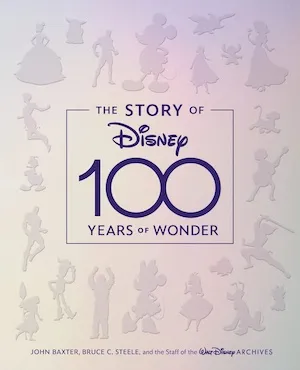
The Story of Disney: 100 Years of Wonder by John Baxter
There are a lot of coffee table books put out by The Walt Disney Company itself, but this one looks beautiful. Published in honor of the company’s 100 th anniversary in 2023, it showcases the history of the Disney company and includes concept art and photographs from Disney parks around the world. It was written as a companion to the currently-touring Disney100 exhibition .
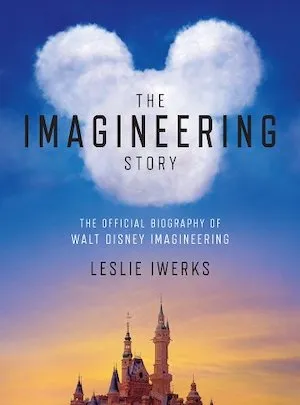
The Imagineering Story: The Official Biography of Walt Disney Imagineering by Leslie Iwerks
This book covers the early years of Walt Disney Imagineering and contains the stories and details that were cut for time in the Disney+ documentary by the same name. Readers will discover the firsthand stories of the people who originated the role of Imagineer as they were building some of the best-known Disney attractions. There is also a section covering future projects for those who prefer to look ahead.
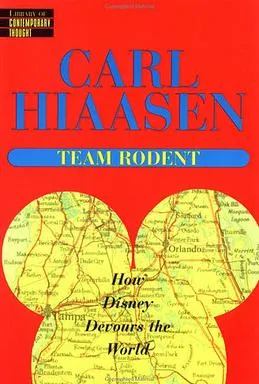
Team Rodent: How Disney Devours the World by Carl Hiaasen
Carl Hiaasen states that Disney is “so good at being good that it manifests an evil.” This is a view of the Disney machine from at Floridian who has witnessed firsthand the success of Disney World and the changes it has brought to Central Florida. It is important to remember that Disney is, of course, a company that will always act in its own best interest and has a vested interest in controlling its own press.
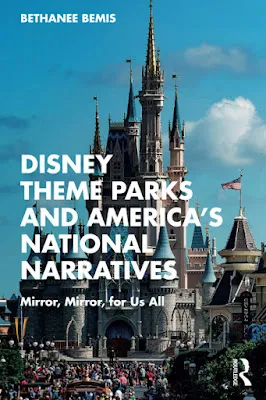
Disney Theme Parks and America’s National Narratives by Bethanee Bemis
This academic text was an instant purchase for me. Disney’s success is both an American story and a vehicle for exporting Americanness abroad. How much does nostalgia factor into the love for Disney and its parks? The book also explores how Disney has changed alongside with the American people.
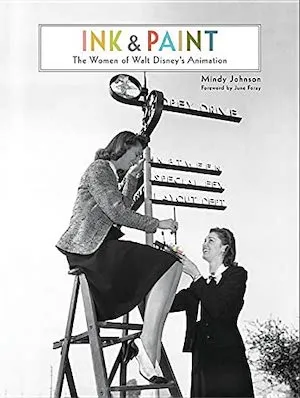
Ink & Paint: The Women of Walt Disney’s Animation by Mindy Johnson
A lot has been written about “Disney’s Nine Old Men,” the animators who created some of Disney’s most famous films. The book pulls back the curtain on the female artists who brought drawings to life. Disney established the first animation training school for women and, in that way, drew women into all disciplines of animation production.
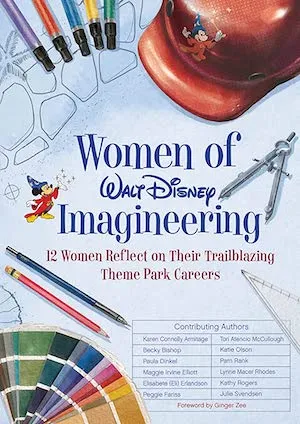
Women of Walt Disney Imagineering : 12 Careers, 12 Theme Parks, Countless Stories by Ginger Zee
This is a collection of stories from twelve women who worked in Imagineering for decades. They discuss the problems familiar to women in a male-dominated workplace and what it was like to work for Disney in a period of rapid expansion. This book is a fascinating read for anyone who has ever thought about working for Disney.
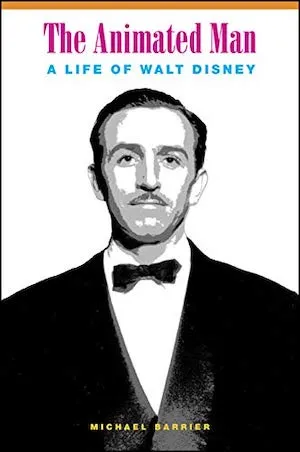
The Animated Man: A Life of Walt Disney by Michael Barrier
A biography of Walt Disney that takes the reader from his Midwestern beginnings to his place at the center of American culture, this is a pretty in-depth read. Interviews for the book began two years after Disney’s death and show the layers of a complicated figure. This book has been frequently referenced as a more balanced portrayal of Disney the man versus the figurehead created by, well, Disney.
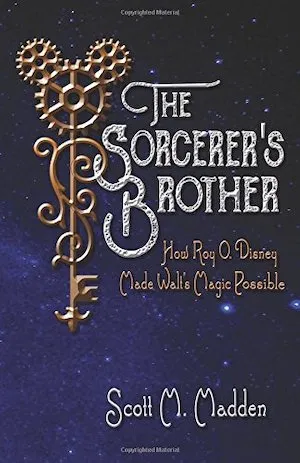
The Sorcerer’s Brother: How Roy O. Disney Made Walt’s Magic Possible by Scott M. Madden
The story of Walt Disney is inextricable from the story of his brother, Roy. From handling the finances of the nascent Disney company to building Walt Disney World after his brother’s death, the Disney story would be very different without Roy Disney. Read this one to learn about the Disney brother whose statue is also in the Magic Kingdom.
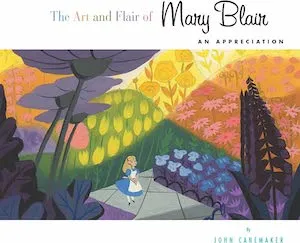
The Art and Flair of Mary Blair by John Canemaker and Mary Blair
Mary Blair was one of Disney’s best-known designers. You might know her artwork from It’s A Small World. This art book chronicles the work of an American artist who worked in décor, theme parks, advertising, print and more.
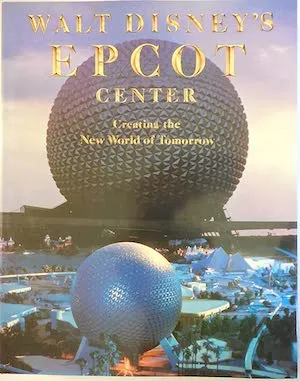
Walt Disney’s EPCOT Center: Creating the New World of Tomorrow by Richard R. Beard
This is another a coffee table book, but it’s about EPCOT, which is my favorite Disney park. EPCOT, which was originally intended as a community for people to live in, has lived many lives over in its 40 years. This book contains the original concept art for exhibits that ended up being very different on EPCOT’s opening day.
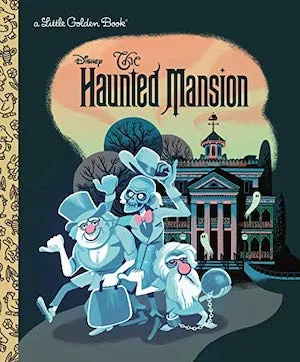
The Haunted Mansion by Lauren Clauss, illustrated by Glenn Brogan
This children’s book takes the littlest readers on a ride through Disney’s Haunted Mansion. The text of the book contains actual quotes from the ride’s script and would be great for preparing a nervous child for their first visit to the mansion (speaking as someone who was once that nervous child). The tiny Disney fan in my life is particularly obsessed with this book, but similar Little Golden Books are also available for Space Mountain , Jungle Cruise and It’s A Small World .
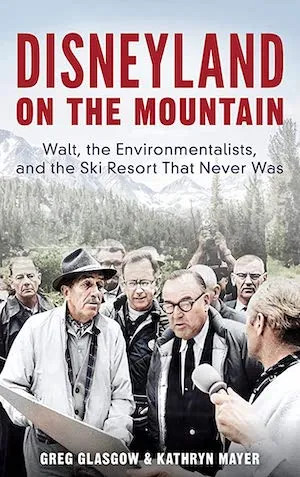
Disneyland on the Mountain: Walt, the Environmentalists, and the Ski Resort That Never Was by Greg Glasgow and Kathryn Mayer
In the 1960s, Disney was looking to build a ski resort in Mineral King, California. This project came into being right at the rise of the environmental movement and the conflict made it all the way to the Supreme Court. This is a fascinating depiction of how a group of activists fought the Mouse — and won.
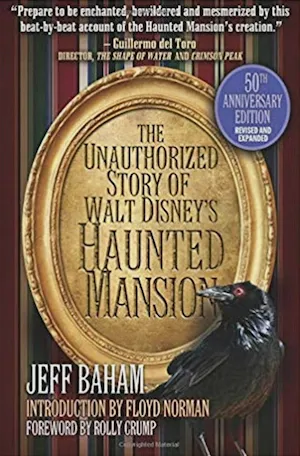
The Unauthorized Story of Walt Disney’s Haunted Mansion by Jeff Baham
This unapproved-by-Disney look at one of its most famous attractions features the central question about whether the ride was intended to be frightening or humorous. Bahm was able to interview several of the Imagineers who worked on the project. This is where you can read the stories behind some of the mansion’s most visible “residents” and the behind-the-scenes stories of the people who get to be there when the lights are on.
These books will hopefully shed some light on why so many people are interested in Walt Disney and his theme parks. I go to Disney World to take a break from the real world but it is still part of the real world…and I don’t just get to forget that when someone hands me a Mickey Bar.
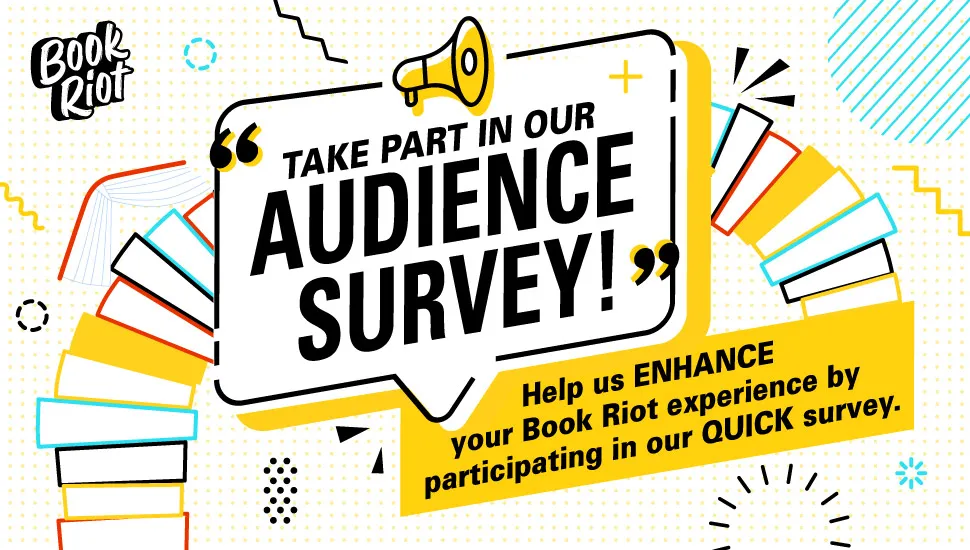
You Might Also Like


The Best Books About Walt Disney
If you're looking for the best books about Walt Disney, look no further! This list has everything from biographies to behind-the-scenes looks at his life and work.
Do you love Walt Disney? Then you need to read these books about the man behind the magic.
These fascinating reads offer insights and stories that are sure to entertain and educate. Whether you're looking for a biography or a coffee table book, I've got you covered.
Keep reading to learn more about the best books about Walt Disney! I know you'll love them just as much as I do.
How I Choose
You want to read a good book about Walt Disney, but there are so many to choose from.
It can be hard to determine which book is the best one to read about Walt Disney. There are so many books on the topic, and it's hard to know which one will be the most informative and enjoyable.
I've done the work for you and picked out the five best books about Walt Disney based on reviews from readers like you. These books offer a variety of perspectives on Walt Disney's life and legacy and will keep you entertained while you learn.
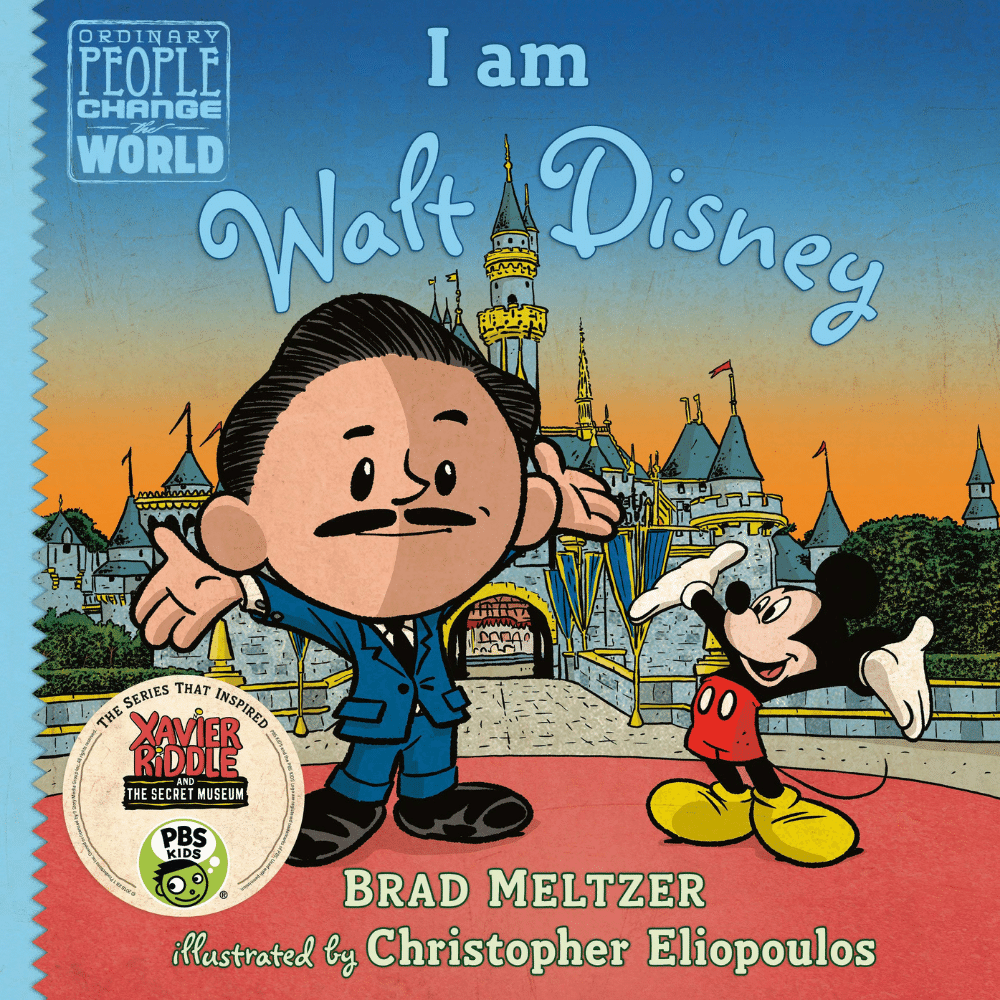
I Am Walt Disney
Why i love it.
I am Walt Disney by Brad Meltzer is a biography of the man who created the Disney character and the world of theme parks and movies. The book begins with Walt as a young boy living in Marceline, Missouri. Using colorful illustrations by Christopher Eliopoulos, this book takes readers on Walt's life journey, from his early years to his early successes. Throughout the story, readers will learn more about Walt's determination and his love of cartoons and movies.
A Disney fan will enjoy the Easter eggs in this book. Hidden Mickeys are everywhere. In-jokes about Meltzer's own family are sprinkled throughout. There are references to other Disney properties throughout the book, including the famous Disneyland Hotel. And if you have a child who loves Disney, you will enjoy the book's celebration of the Walt Disney brand and all that it stands for.
This book will make you want to celebrate the man behind the iconic Disney character! The book contains a timeline of events throughout the life of the character, photos, and comic-book-style illustrations. It also highlights childhood moments that shaped the hero. There are plenty of fun facts and virtues about the hero, as well as the people who helped him become what he is today.
What You Should Know
This biography is written in a condensed manner and skips a lot of material. It spends about a third of its pages on Disney's life before he came to fame. There are many anecdotes and stories about his early days as an animator, from delivering newspapers to his life in Kansas City. While Oswald is not mentioned in the book, the author does briefly touch on his early years and how he came to be associated with Disney and his animated features.
As with all Disney bios, this one is not a dry read. It's full of colorful illustrations, which capture the essence of Walt's early years. While he struggled to make a living in his early days, his love of animated movies and creativity led him to eventually become the man who made the Disney empire possible. I am Walt Disney by Brad Meltzer will be an exciting read for anyone who wants to learn about the life and career of the man who made our childhoods so special.
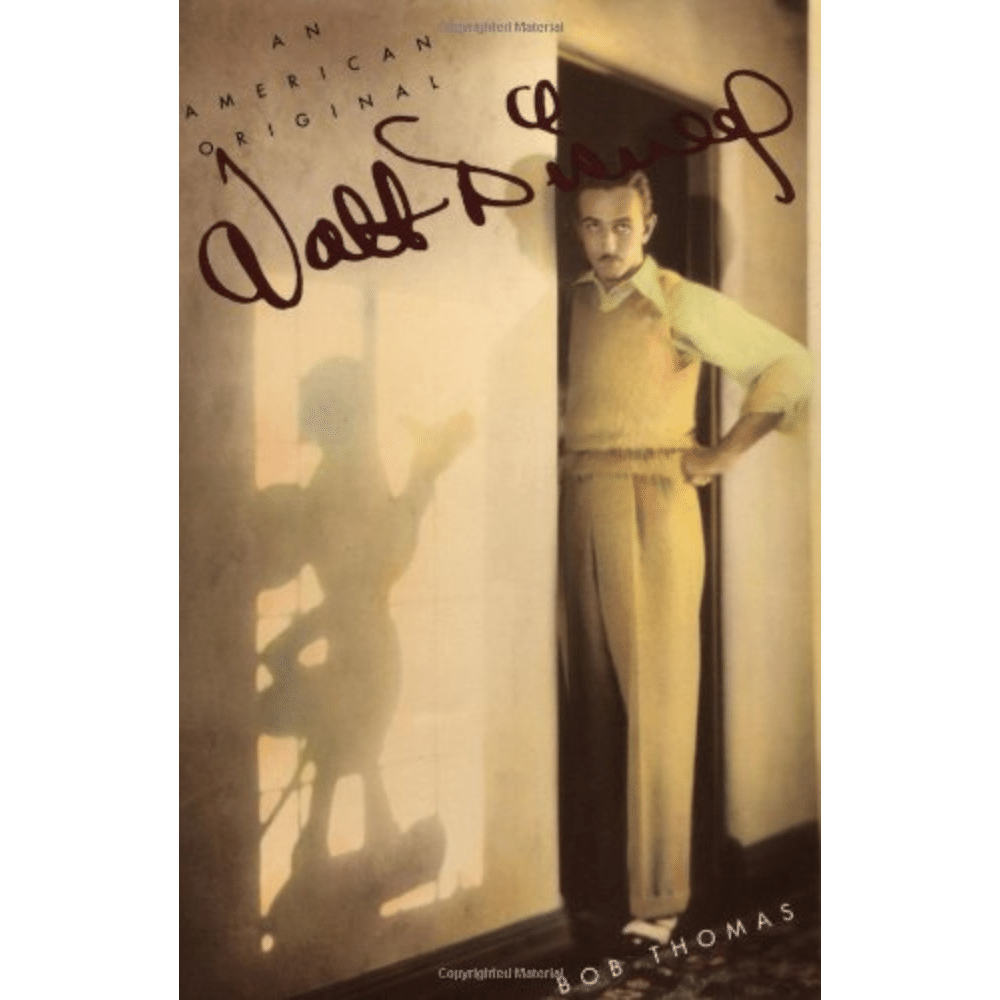
Walt Disney: An American Original
Why I Love Walt Disney: An American Original is a compelling and entertaining biography about the man who changed the face of cartoons and entertainment forever. Bob Thomas paints a compelling picture of Walt Disney, from his humble beginnings to the heartbreak and pitfalls of his life. We see his dwarves, his castle, his evil villains, and his triumph over all odds. As we follow the life of Walt Disney, we learn a lot about what drives this incredible man.
Although Bob Thomas' access to Walt Disney was unrestricted, he did cover controversial aspects, including labor relations and politics. Although Bob Thomas does not go into exaggerated details, the book is a valuable addition to any Disney fan's library. It's a wonderful book that will make any Disney fan want to read more.
The biography includes sections that are based on interviews and correspondence. The correspondence includes documents that tell show contract negotiations and notes Walt provided to artists working on his projects.
Bob Thomas' book is full of fascinating details about the man behind Disney's incredible success, from his early days as a small-town cartoonist to his bankruptcy and life insurance. Even though his life was full of ups and downs, his determination led to the creation of Disneyland and Mickey Mouse, two icons of American culture. In this biography, you'll learn about Walt Disney's personal and professional struggles and how his dreams were shaped by his environment.
This book begins with Walt Disney's early years when he was still a child. Walt's father was an extremely difficult man to please, so he learned early on that hard work was necessary to become a successful cartoonist. He also had to leave home to serve in the war effort, so he learned how to deal with adversity. Thomas uses primary and secondary sources to paint a clear picture of the man, with both the ups and downs of his life. As a Disney fan, you'll be thrilled to learn all about the man behind the legend! The book is inspiring, fascinating, and even uplifting!
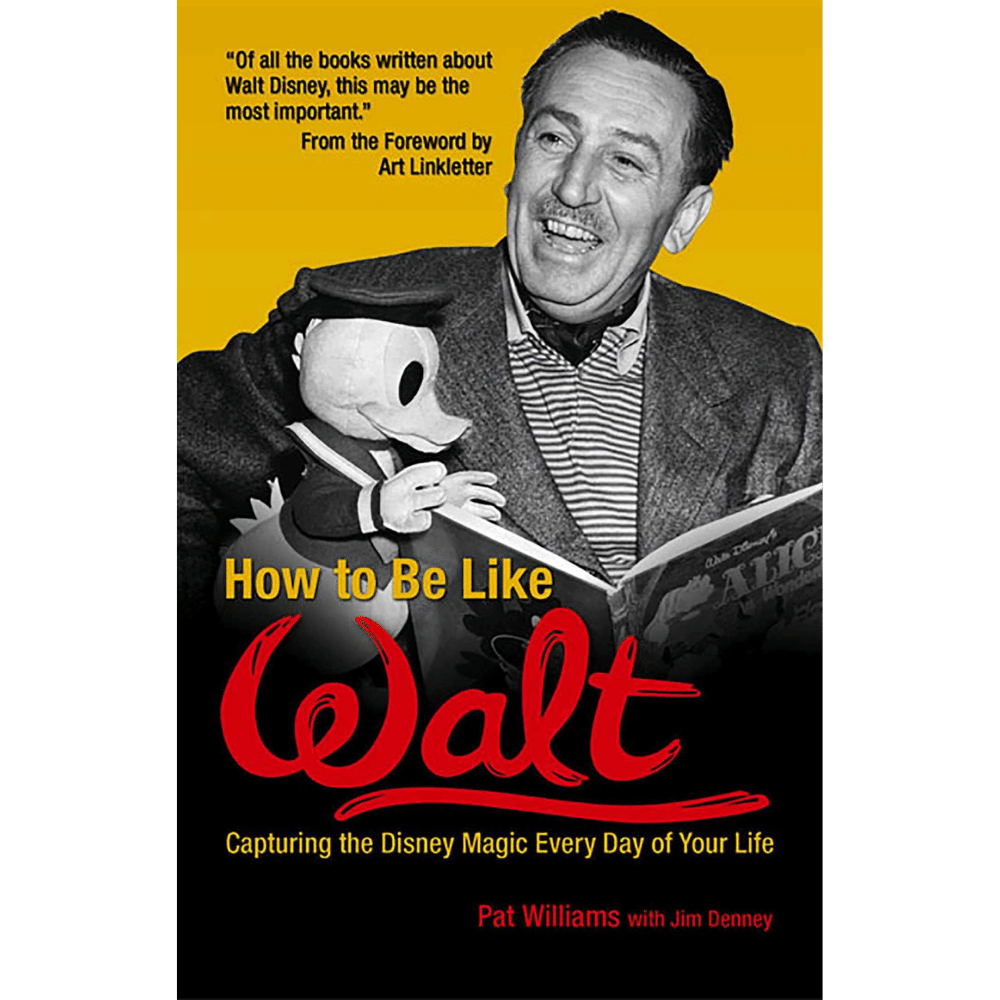
How to Be Like Walt: Capturing the Disney Magic Every Day of Your Life
The Orlando Magic's vice president and manager, Pat Williams, has given inspirational speeches at major companies and written more than 100 books. Pat Williams started with nothing and built his dream from the ground up. His personal experiences as a Disney fan and the struggle to start an NBA franchise also inform the book's lessons.
As children, Walt and Roy worked for their father without pay, and this forced them to work all day, including weekends. They would get up early to deliver the papers for the day and then prepare for the next day's deliveries after school. Walt and Roy often dreamt about the snowstorms they were forced to endure as children. This book teaches us how to live our lives as if we were Disney.
In "How to Be Like Walt", Pat Williams cites six characteristics of Disney's genius. In fact, Walt Disney is a humble man. Once, while building Pirates of the Caribbean at Disneyland, he spotted a Louisiana native. Then he asked him if there was something missing that was missing from the Caribbean island. The worker told him that he missed the sound of crickets. So, Disney had his sound engineers add the sound of crickets to the ride. This is just one example of how Walt Disney was always looking to improve his product.
A humble and kind person, Walt Disney is still remembered as one of the world's greatest creators. Walt Disney was willing to give up his time and money to help others, and he also acted as a good example to others. His example continues to inspire us today.
While many people believe that Disney was a "visionary" and a "creative genius," few people understand his unique vision. Disney was a pioneer in the movie business, and he encouraged experimentation and discovery among his staff. He also believed in quality at all costs, hiring only the best people, and directing the final outcome. Disney was able to have a keen sense of what would sell and what the public would like to see.
This book offers lessons to help readers live more fulfilled lives. The book is a great choice for anyone interested in learning more about the life and legacy of the great Walt Disney.
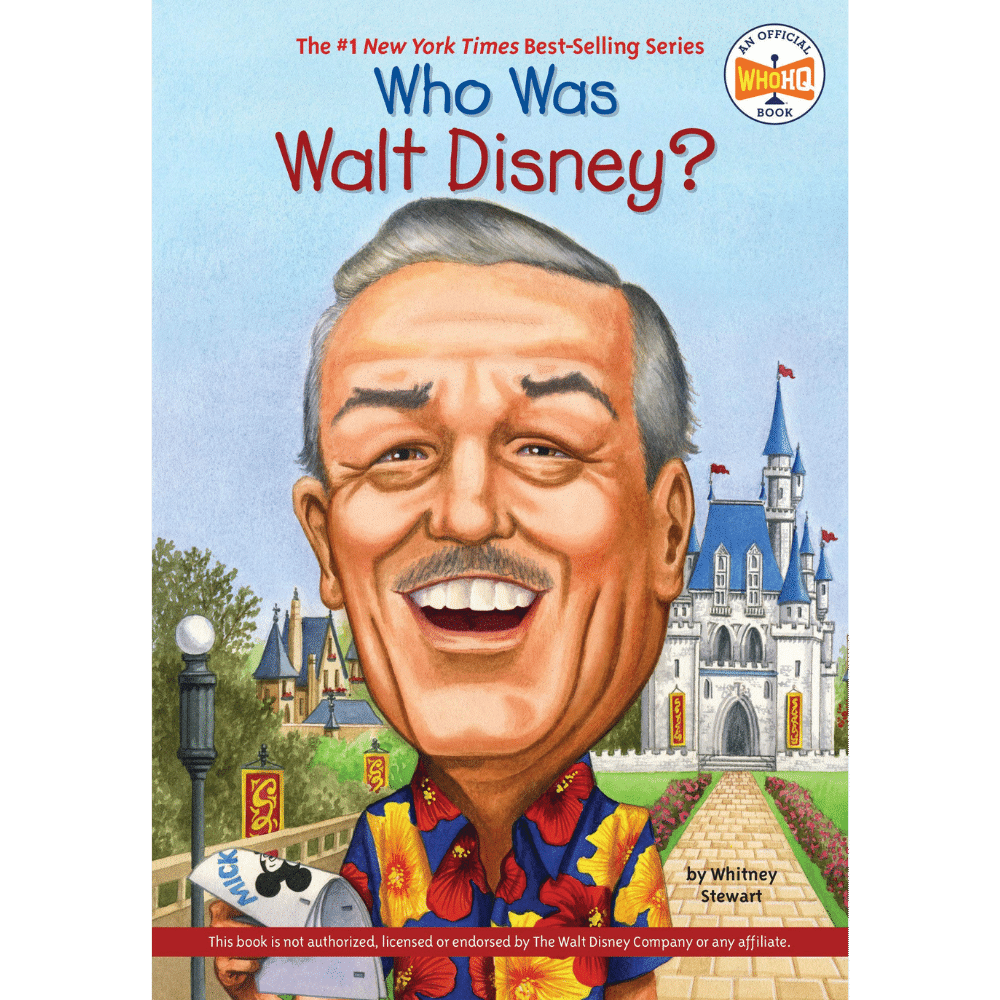
Who Was Walt Disney?
It's not surprising that Disney fans love to talk about the man behind the mouse. Walt started admiring President Abraham Lincoln at an early age. He decided to pay homage to the president on Lincoln's birthday. In fifth grade, he converted his father's derby into a stovepipe hat with cardboard, borrowed his father's church-deacon coat with a swallowtail, and added crepe hair to his chin and a wart on his cheek.
Walt and Lillian Disney shared a wonderful love story. The couple was longtime lovers, raising two daughters and founding the Disney Company. While Lillian worked behind the scenes and took care of the home, Walt was in the public eye. Lillian preferred Walt's public engagement. Their marriage was a happy one. Despite his personal life, Lillian was an excellent wife and father. While it's hard to imagine that Lillian Disney wished to marry someone who was so private, they had a happy marriage.
The Walt Disney Company went from a small animation studio to an industrial giant. This entrepreneur was concerned with details rather than the big picture, and his earliest works showcased human emotions. His fascination with the ancien regime inspired the theme parks he created. But as his career progressed, the Walt Disney Company grew into a force to be reckoned with. During this time, his films inspired the creation of more animated movies and a global corporation.
If you've ever wondered who Walt Disney was, this biography by Whitney Stewart is the book for you. The book follows Walt Disney from his early years to his adulthood and shares his struggles and triumphs along the way. Detailed timelines and historical events provide background information. A list of Disney movies is also included. The book makes for a fun read. Whether you love Walt Disney or not, you'll enjoy this biography.
This biography is not endorsed by the Walt Disney Company, but it does feature a wealth of black-and-white illustrations. You'll learn that Walt Disney was an independent artist who loved life in a small town. While he was famous for the creation of Mickey Mouse and Disney World, he also had a steady personal life. This book will give you a glimpse into the life of this fascinating man. Walt Disney was a man who believed in himself and had the courage to follow his dream.
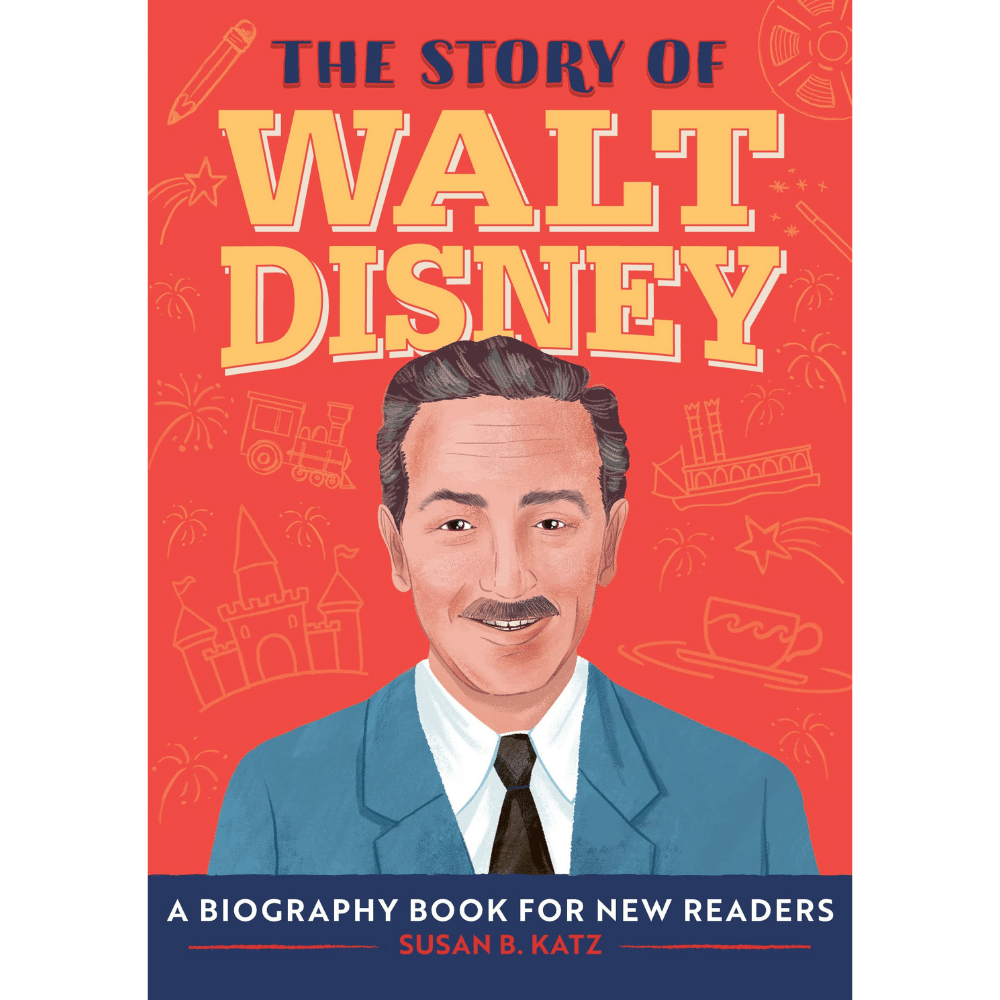
The Story of Walt Disney: A Biography Book for New Readers
As a young man, he had dreams of creating movies and making money from them. He studied animation and drew cartoons for his school papers. As an adult, he is still able to enjoy the fruits of his labor through his production company and theme parks.
Lilly was a flirt. Walt often spoke positively about her. He deferred to her authority in the house and even let her pick hotel rooms. Lilly Marie Bounds was born in Spalding, Idaho, on February 15, 1899. Until that point, she kept her age secret. She was three years older than Walt. This makes the story of their romance all the more compelling. However, the story is not without its ups and downs.
At the same time, Walt Disney was determined to be financially conservative but, at the same time, adventurous. He and Roy agreed to make live-action films. In 1954, they made the Oscar-winning film, Seal Island. Both were shot in England and featured actors such as Bobby Driscoll, Robert Newton, Ralph Truman, and Walter Fitzgerald. Walt Disney's live-action films followed the storyboard method.
He was an inattentive student who drew all the time. He eventually decided to join the army and was sent to France to drive an ambulance. However, he was turned down due to his age, so he forged his birth certificate. After the war, he joined the Red Cross, and a year later he was sent to France to work as a driver for the Red Cross.
As a child, Walt Disney loved to draw, and soon started creating memorable characters that we love today. He spent the next half of his life entertaining millions of people through his creations and even became a surrealist himself. He became famous for his films and is now the head of Disney and Disneyland. However, you don't have to be a Disney fan to appreciate the magic that he has created.
Walt Disney wasn't exactly a genius when he started his business. He had failed in two previous ventures, but he had faith in his dream implicitly and unquestionably. He packed his favorite can of chili and headed for Hollywood. Throughout his life, his legacy will continue to inspire millions of people around the world. Hopefully, you can see how Walt Disney's legacy lives on today.
Honorable Mentions
We all know that the best books about Walt Disney are his own memoirs, but what about the other great books out there? and there have been a lot of great books written about the man and his legacy. Here are some of my favorites that didn't quite make it to the top of my list but are still worth reading.
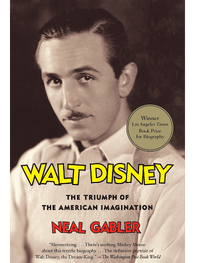
Walt Disney: The Triumph of the American Imagination
If you've ever wondered why Walt Disney became so famous, this book is the one to read. Written by Neal Gabler, this biography will teach you everything you've ever wanted to know about the man who made cartoons popular. It also gives you a better understanding of what Disney was really like, and why his creations are so beloved today. You'll also learn why Walt Disney was a great businessman and a great inspiration.
Walt Disney's life was not a happy one, but it certainly helped him create his own vision of a perfect utopia. He calculated everything to make his creations as stable as possible and as exciting as possible for his audience. As such, his efforts were rewarded with the success of his theme parks. But what exactly was Walt Disney like? Whether he was a visionary or a control freak, Gabler is an insightful writer about the man.
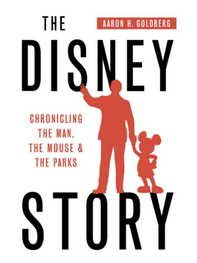
The Disney Story: Chronicling the Man, the Mouse and the Parks
The book is a delightful story of how Walt and his family became the foundation for Disney theme parks and its iconic characters like Mickey Mouse and Donald Duck. Fans of Disney movies will find much to enjoy here. Goldberg's witty and entertaining writing will draw readers in with the stories of Disney characters and big-screen adventures.
Goldberg has devoted a great deal of time to researching the history of the Disney Company and offers a distilled version of its rich history. It is a good choice for Disney history enthusiasts or those who want to gain a better appreciation of the company. The book includes a wealth of reprinted articles from various media outlets. For an even greater insight into Disney's history, Goldberg offers a site containing original scans of these articles.
Throughout the book, Goldberg covers the major events of each decade. Highlights include the birth of Diane Disney, the introduction of Technicolor into Disney animation, and the premiere of Snow White and the Seven Dwarfs. Goldberg has visited the Disney theme parks more times than he can remember. A must-read for any Disney fan.
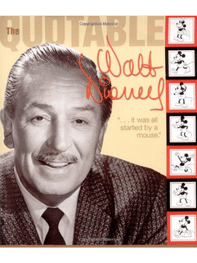
Quotable Walt Disney (Disney Editions Deluxe)
You've probably heard of "quotable Walt Disney" before, but what exactly does this book mean? Well, this book is an in-depth exploration of Walt Disney's life and dreams. In it, you'll find out what makes this visionary tick and learn about the philosophies that guided his life. It's a great read and will leave you awestruck.
This is a collection of quotes from the man who made Disney famous, from his earliest childhood to his most famous work. These inspiring words capture the genius of Walt Disney and reveal how he pushed through discouragement and even bankruptcy to achieve his dreams. A collection of these quotes, the book's design makes it a delightful gift. Whether you are looking for a gift for a friend or family member, this book will satisfy both needs.
Dave Smith is the co-founder of the Walt Disney Archives and has been its chief archivist for over forty years. He is a frequent speaker at Disney events and has even written introductions to various Disney books. Dave Smith started answering trivia questions for the Disney fan community in 1983 with a column that began in Disney Channel Magazine. The column was carried on through several publications, including Disney Insider and the D23 Web site, and has been expanded into a full-blown book. He has also written Disney Trivia from the Vault, co-authored the Ultimate Walt Disney Trivia Book 1, and compiled 29 years of his renowned "Ask Dave" column for fans and readers.
Whether you want to relive the magic of Disney's magic by reading The Quotable Walt Disney by Dave Smith, this book is a must-have for anyone interested in the history of the company. Dave Smith's background in history and the Walt Disney Archives have made him the definitive authority on Disney's history. So, whether you are a Disney fan or just a fan, this book will provide hours of enjoyment and educational value.
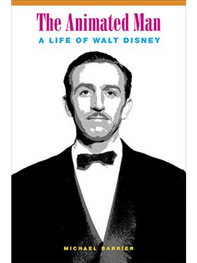
The Animated Man: A Life of Walt Disney
"The Animated Man" is an extraordinary biography of the man who transformed the world of entertainment. Not only did Disney create an enduring legacy for animated films, but he was also a creative force who changed the history of American business. Michael Barrier's biography offers a fascinating look at the man who changed the face of entertainment forever. This is a must-read for anyone who loves Disney!
This book is based on decades of research in the Disney studio archives and interviews with 150 former coworkers dating back to 1922. The resulting portrait of Walt Disney is a compelling one, combining his own recollections with those of others. While the creator of the most famous Disney films of all time was far from perfect, his innovative methods and dedication to his craft earned him worldwide recognition.
Among the many insights revealed by Michael Barrier in his biography is that Disney fought for the interests of his employees, often sacrificing his own financial security to pay their bills. Although he fought against the studio's sour relations, he was willing to sacrifice his personal wealth for the welfare of his employees, even when it meant sacrificing a good career. Ultimately, he was right about the importance of his team's sense of adventure and was willing to take large pay cuts and accept lesser positions to make sure that his employees could stay happy.
The Animated Man: A Life of the Disney Company by Michael Barrier shows the evolution of animation and the role of Disney Studios. The author focuses on the three little pigs, which are among the most influential cartoons ever made. The Three Little Pigs is a revolutionary film that paved the way for the creation of character animation. The book compares the work of Fred Moore and Norm Ferguson, who were responsible for the animation of the cartoons. Likewise, a short film called The Pied Piper shows how the studio artists created Piggy and Mouse.
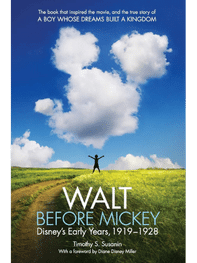
Walt before Mickey: Disney's Early Years, 1919–1928
If you are looking for an interesting biography of Walt Disney, you may want to read Walt Before Mickey Disney's Early Years, 1919-1928 by Timothy S. Susanin. Most Disney biographies start with the production of Steamboat Willie in 1928. This book covers Walt's life from this early period, as well as his early experiments with animation. The book begins with a brief overview of Disney's early years and includes a discussion of Walt's early successes and failures.
This biography reveals how Walt Disney struggled to create and produce animation for ten years before creating the iconic character. The author focuses on his reflections on these early years and examines the studios in which he worked, including the Kaycee and Laugh-O-gram, Disney Brothers, and several dozen of his colleagues. Despite his failures, he was a relentless worker.
A fascinating history of the life of the founder of Disney's famous characters. Before Mickey Mouse, Walt Disney had experience creating silent cartoons. In fact, he had created the first animated short, "Steamboat Willie," which screened at AMC Theaters Downtown Disney, the Cobb theater chain, and the Harkins and Logan theater chains. During this decade, the development of Mickey Mouse's character began.
There are a lot of questions that come up when you start reading about Walt Disney. I'm going to try and answer some of those frequently asked questions for you here, with a few recommendations of my own. So buckle up, because it's time to get started on this magical journey!
Why is Walt Disney so famous?
Walt Disney is famous because he was a pioneer in the field of animation. He also created some of the most iconic characters in American pop culture, including Mickey Mouse and Donald Duck. In addition, he was a successful businessman who built a global empire.
What made Walt Disney so successful?
Walt Disney was successful because he had a clear vision for his projects and he was willing to work hard to see them through. He was also a master of marketing and knew how to get people interested in his products.
What are some of the best books about Walt Disney?
Some of the best books about Walt Disney include The Animated Man: A Life of Walt Disney, Walt before Mickey: Disney's Early Years, 1919–1928, and Quotable Walt Disney.
What are some of the best movies about Walt Disney?
Some of the best movies about Walt Disney include Fantasia, Snow White, the Seven Dwarfs, and Mary Poppins.
Why did Walt Disney create Mickey Mouse?
Walt Disney created Mickey Mouse because he wanted to create a character that would be recognizable around the world. Mickey Mouse was an instant success and helped put Walt Disney on the map.
How did Walt Disney make his first movie?
Walt Disney made his first movie, Snow White and the Seven Dwarfs, by using a process called cel animation. This process involved drawing each frame of the film by hand and then painting them onto cells.
What was Walt Disney's first theme park?
Walt Disney's first theme park was Disneyland in Anaheim.

How much money did Walt Disney leave behind for his heirs?
Walt Disney left behind an estimated $100 million for his heirs. However, much of this money was tied up in the company, and it was not easy for them to access it.
How did Walt Disney die?
Walt Disney died of lung cancer on December 15, 1966. He was cremated and his ashes were interred at the family plot in Los Angeles.
When is Walt Disney's birthday?
Walt Disney's birthday is December fifth.
What was the last movie that Walt Disney worked on before he died?
The last movie that Walt Disney worked on before he died was The Jungle Book. He passed away before it was completed, but his team was able to finish it using his storyboards and notes.
What is the name of Walt Disney's first film?
Walt Disney's first film was Snow White and the Seven Dwarfs.
What was the first thing that Walt Disney ever animated?
The first thing that Walt Disney ever animated was a short film called Alice's Wonderland. It was based on the Lewis Carroll story "Alice's Adventures in Wonderland."
What was the name of Walt Disney's first animation studio?
Walt Disney's first animation studio was called Laugh-O-Gram Films. It was located in Kansas City, Missouri.
What did Walt Disney do before he became an animator?
Before Walt Disney became an animator, he worked as a newspaper delivery boy, a farmhand, and a commercial artist. He also served in the Army during World War I.
What is considered the Walt Disney World Resort?
The Walt Disney World Resort is a collection of theme parks, hotels, and other attractions in Orlando, Florida. It is the most visited vacation resort in the world, with over 52 million visitors each year.
What is Walt Disney Studios?
The Walt Disney Studios is a film studio and a division of the Walt Disney Company. It produces live-action films, animated films, and television shows.
Is Disneyland and Disney World the same?
No, Disneyland and Disney World are not the same. Disneyland is located in Anaheim, California, and Disney World is located in Orlando, Florida. They are both owned and operated by the Walt Disney Company.
How does someone become a part of the Walt Disney Imagineering team?
There is no one specific path to becoming a part of the Disney Imagineering team. However, it is generally recommended that interested individuals have a background in fields such as architecture, engineering, or design.
What is a Disney cast member?
A Disney cast member is an employee of the Walt Disney Company. Cast members typically work in roles such as tour guides, character performers, and attraction operators.
The right book for you!
If you want to learn more about the man behind the magic, or are just looking for a good read about Disney parks, check out my recommendations above. Whether you’re a Disney superfan or just getting started, these books are sure to give you a new appreciation for the genius of Walt Disney.
Thanks for reading!
You might also like, deal yourself a winning hand: the top 5 poker books every beginner needs to read, 6 life-changing john maxwell books you need to read right now, unlock your inner mozart: the top 5 piano books for adult beginners you need to check out today, the ultimate john green reading list: 7 must-read books, subscribe to get updates on new posts, latest book news and freebies.
Best Books About Disney World, Disneyland & Imagineering in Our Library
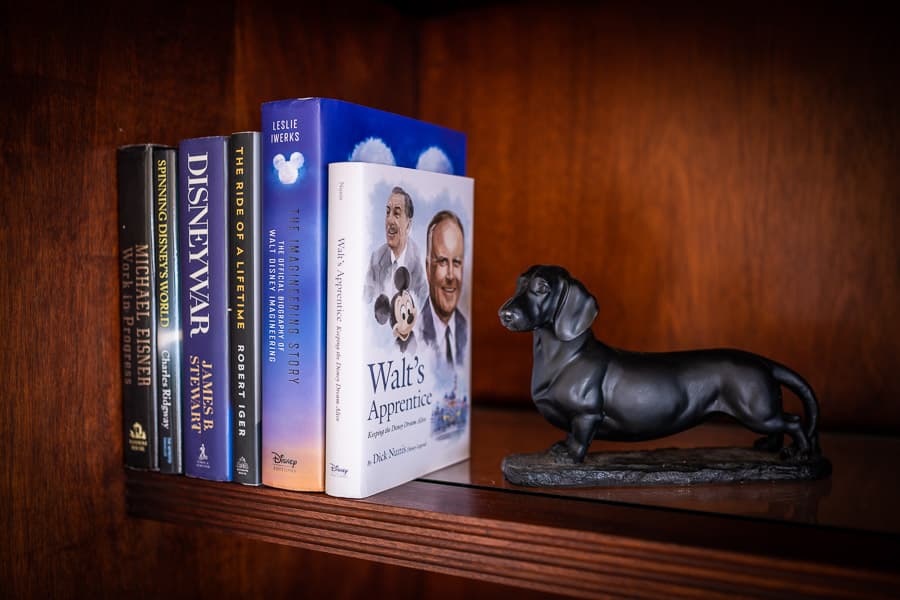
There tons of great books about Walt Disney World, Disneyland, Imagineering, biographies of designers & leaders, and more. This reviews the best of my library and coffee table books with beautiful concept art & archival photos. Our buying guide also offers links for finding inexpensive used copies. ( Updated February 13, 2024 .)
Currently, an Amazon search for “Disney books” yields nearly 100,000 results . That’s a lot of books. My library isn’t quite that large, although sometimes it seems that way! Rather than owning everything, my collection features the best Disneyland and Walt Disney World coffee table books with strong visual elements, many of which were originally sold as souvenir books in the Disney Parks. I also own tons of biographies and non-fiction and cover those highlights, as well.
Many of these books are out-of-print, so they can only be purchased on the secondary market. Luckily, you can still find many of them on Amazon.com for prices ranging from $.01 to a few dollars. A few are quite expensive, costing a few hundred dollars, but most can now be purchased much cheaper than they were when sold new at Walt Disney World or Disneyland.
When it comes to these books about Walt Disney World, Disneyland, Imagineering, and so forth, we receive a small commission from your purchases, so buying through these links helps support the site. However, neither the price you pay nor our recommendations are impacted by that.
Actually, it’s the opposite. We will warn you against buying too many books–let us be a cautionary tale! Although these books are individually cheap, the cost of collecting them is deceptively expensive, and books can take up a lot of space. We’ve moved four times since I got “serious” about building my Disney book collection, and my library filled more boxes than everything else… combined! I have no regrets, but my back (and Sarah) might disagree with that assessment.
With that, let’s take a look at my Disney theme park library, starting with the newest books for the 100 Years of Wonder Celebration, followed by essential titles for those of you who want to get your collections started out right!
New Books for 2024
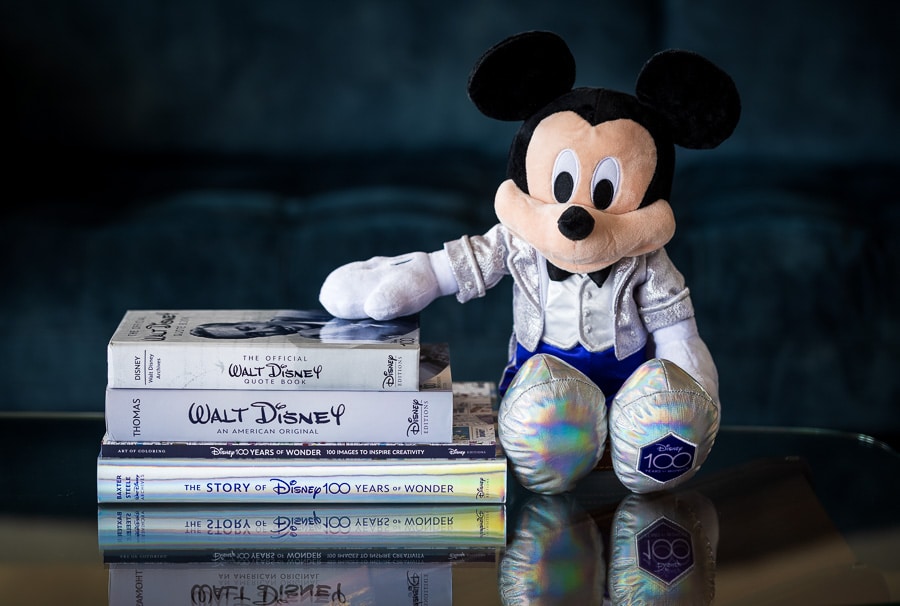
The Story of Disney: 100 Years of Wonder – This coffee table book showcases the company’s history and rich legacy―past, present, and future―with text plus concept art and photographs. It starts, fittingly, with Walt Disney’s childhood through to the early years of the companies that he and his brother, Roy, founded. From there, it grows broader in scope and scale, branching out just like the Walt Disney Company itself.
The book is generally well-done, but it’s also superficial and bland. To some extent, that’s to be expected; it’s a surface-level retelling of the story aimed mostly at those who aren’t superfans with libraries stocked full of other titles. My favorite part is how Bob Chapek was cut from the story at the eleventh hour before publication, and only includes one passing quote from the former CEO.
The Official Walt Disney Quote Book – This collection of quotations from the co-founder of The Walt Disney Company ranges from the well-known to the obscure, with everything from nuggets of homespun wisdom to specifics about his vision for running the theme parks and making movies. Much of this is well-documented. What I found most fascinating were the chapters about non-business topics: health, wellness, money, education, love, enlightenment, education, family–all of these and more each have dedicated sections in the book.
Walt Disney: An American Original: Commemorative Edition – This is the best biography about Walt Disney reissued for Disney100 and expanded via essays and introductions by four excellent authors of other Disney books. The endnotes are what justifies paying a premium for this newer edition, as those add ~25 pages of additional context and depth to certain passages of the biography. In the end, this is the version to buy if you want a new hardcover version that looks good on the shelf (the cover is certainly nice).
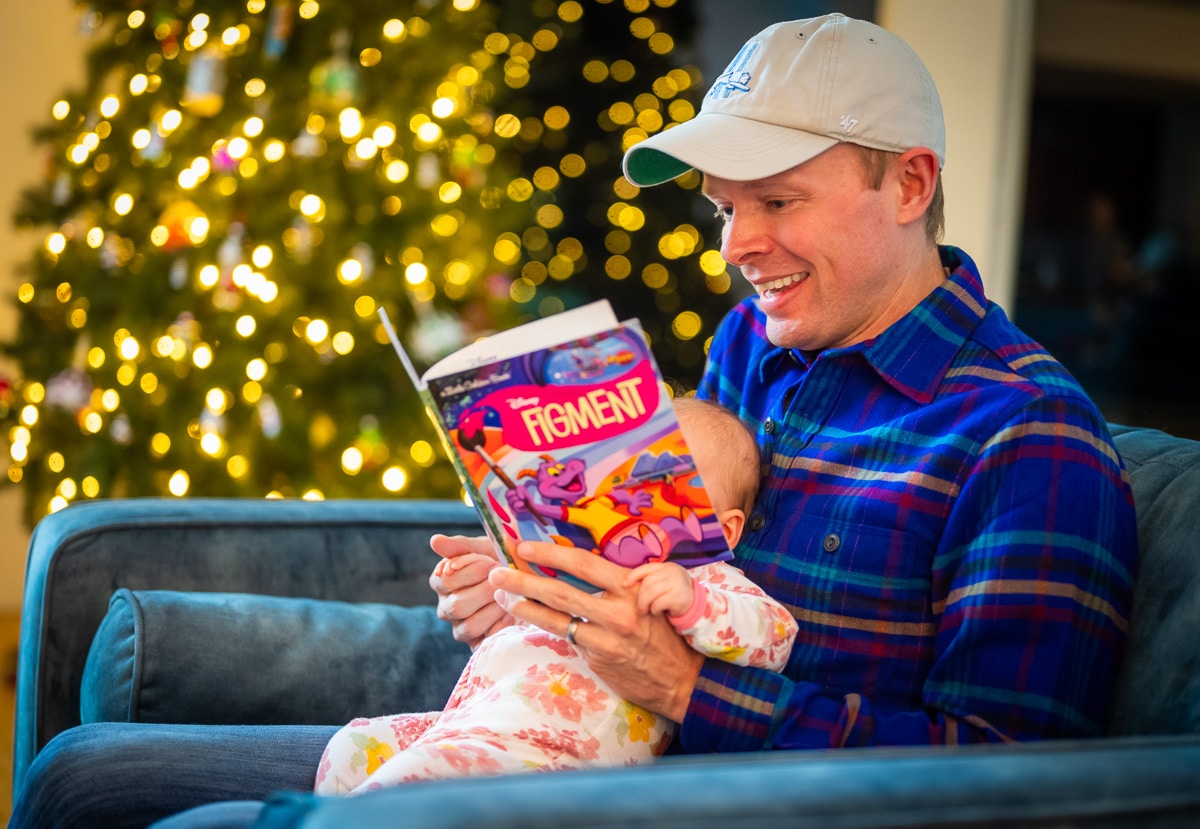
Figment Little Golden Book – We’ve already bought two copies: one for Megatron, one for the Bricker Figment Archives. This features lyrics from the beloved Disney song “One Little Spark” and is about the purple dragon from Walt Disney World’s EPCOT. This adorable Little Golden Book is about creativity and imagination, and is perfect for children ages 2 to 5, plus Disney Parks fans and Little Golden Book collectors of all ages.
Some of you may recognize its author, Jason Grandt, as also being the author of the fan-favorite Orange Bird Little Golden Book and the Magic Kingdom Storybook before that. Even before both of those books, he became a household name in the Walt Disney World fan community as a frequent fixture at D23 presentations and on social media, sharing sketches , history and more.
Figment Little Golden Book is filled with page after page of gorgeous artwork that reimagines the original Journey Into Imagination in a whimsical and stunning style. It’s at once old and new–absolutely beautiful, page after page. The artwork mixed with a singsong story is everything I needed from this book and more. The cherry on top is the many nods to other past EPCOT Center attractions, and even Easter Eggs from Magic Kingdom’s past. The Figment Little Golden Book is truly something special. (On a related note, there’s a newish Disney100 box set of previous Disney Little Golden Books .)
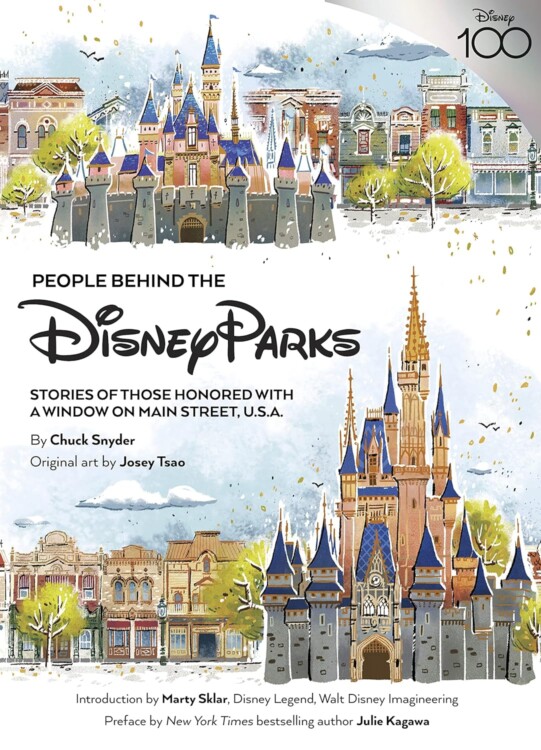
People Behind the Disney Parks: Stories of Those Honored with a Window on Main Street, U.S.A. – This book has been delayed many times over the course of the last several years, basically becoming the TRON Lightcycle Run of books. But it was well worth the wait! This book should be a must-own, instant-buy for anyone who is a fan of the people who brought Walt Disney World, Disneyland, and the other parks to life.
It features 280+ biographies of people with windows on Main Street, and behind-the-scenes info on the creation of the ‘opening acts’ of the castle parks. This hefty, 352 page tome is a gift that Disney collectors, theme park fans, and anyone curious in creative career paths through the arts, sciences, and research development will appreciate for decades to come. (As you can see from the cover, People Behind the Disney Parks has a forward by the late Marty Sklar–presumably the last title for which we’ll see a forward by that Disney Legend.)
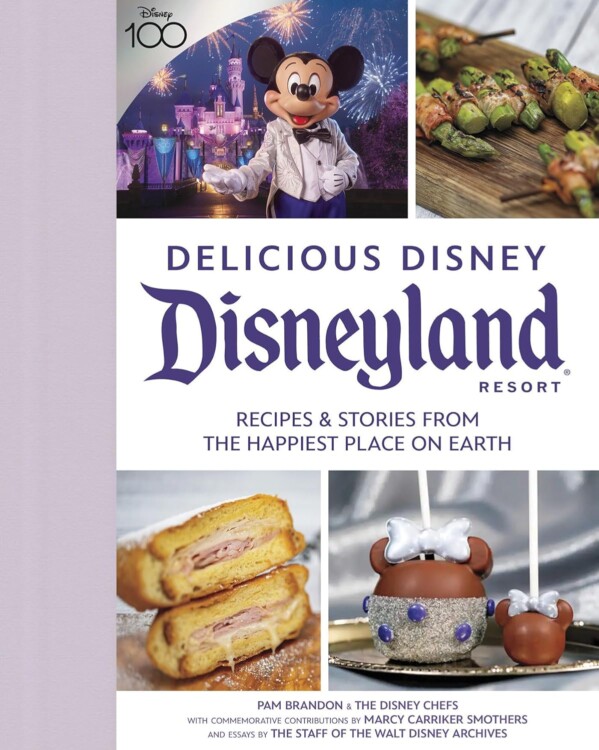
Delicious Disney Disneyland: Recipes & Stories from The Happiest Place on Earth – The past ‘Delicious Disney’ titles have pleasantly surprised, offering a nice mix of history and recipes with unique content (food!) that is incredibly significant to our sentimentality for the parks, but doesn’t typically garner coverage in coffee table or even souvenir books. Suffice to say, I’m a fan.
This cookbook-meets-culinary-history coffee table book enchants with mouth-watering food photos, gorgeous Walt Disney Imagineering concept artwork, nostalgic restaurant menus, and a little Disney magic. Delicious Disneyland includes an assortment of appetizers, main courses, sides, desserts, and joyful libations, coming from fine-dining and quick-service establishments across the resort. Each has been tested by home chefs to help you bring your cherished vacation memories to life…and inspire new ones for years to come.
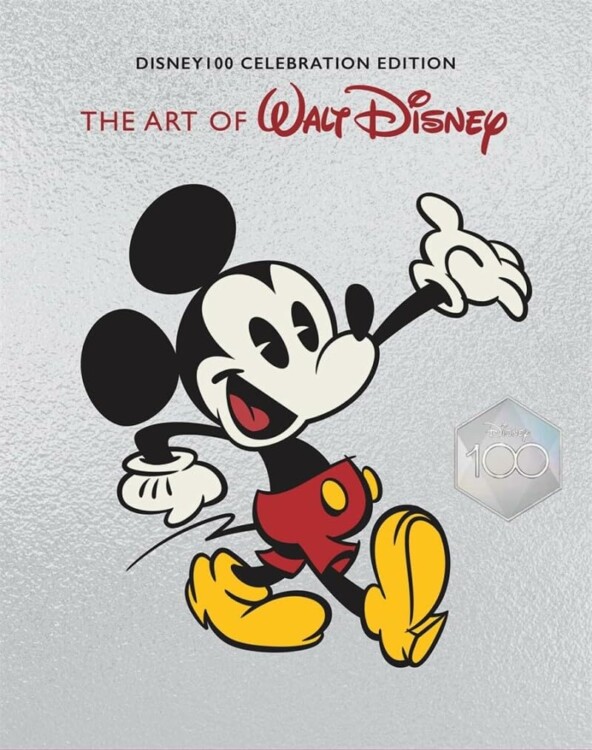
The Art of Walt Disney: From Mickey Mouse to the Magic Kingdoms and Beyond – I want to be very clear: we have NOT ordered this, and I wouldn’t recommend that you do so, either. Yet. This is a release of an (excellent) older book and past editions can be found for ~$10. The Disney100 version originally cost $100. It has since come down to $50 on Amazon, but we’d like to see it hit the $30-40 range before we bite.
Since it was first published in 1973, The Art of Walt Disney: From Mickey Mouse to the Magic Kingdoms and Beyond has established itself as an indispensable classic of illustrated book publishing, selling hundreds of thousands of copies. Offering a comprehensive history and tribute to the career and legacy of Walt Disney, the book was the first to reveal the wealth of concept art, animation drawings, and archival material that is created in the course of animating films.
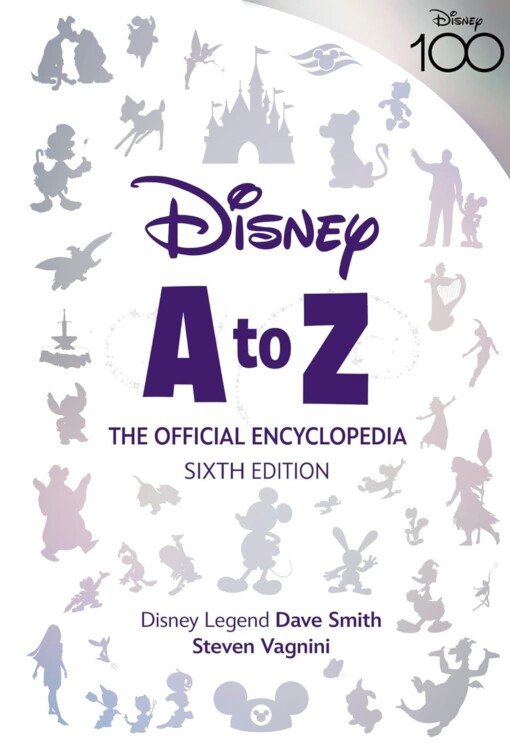
Disney A to Z: The Official Encyclopedia — This is a somewhat similar story in that it’s another re-release for Disney100. But the difference is that there’s a ton of new ground for the latest edition of the encyclopedia to cover due to acquisitions, theme park openings, new movies, and much more.
Originally by the incomparable Disney Legend Dave Smith (now with the also-excellent Steven Vagnini), this covers everything you want to know about the Walt Disney Company. Note that it’s not just about Walt Disney World and Disneyland (although they do feature heavily), but all facets of the company. It’s a must-own resource for all Disney fans.
Now let’s turn to the ‘legacy’ must-own Disney books that weren’t released in 2024 or during Disney100…
More Must-Have Disney Books
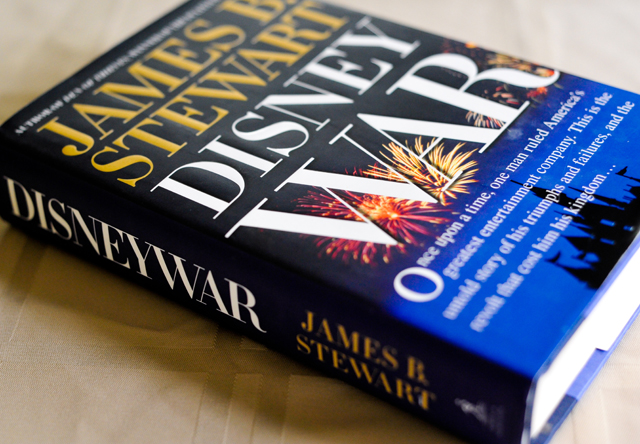
DisneyWar – This sparked my fascination with the workings of the company. It covers the rise and fall of Michael Eisner, culminating in the “civil war” between Eisner and Roy E. Disney. Author James B. Stewart was granted unprecedented access to write a book on the Eisner regime before the “war” began unfolding, so he was there to witness it all. It reads almost as a Shakespearean tragedy, and proves that sometimes the truth is more compelling than fiction. An absolute must-own.
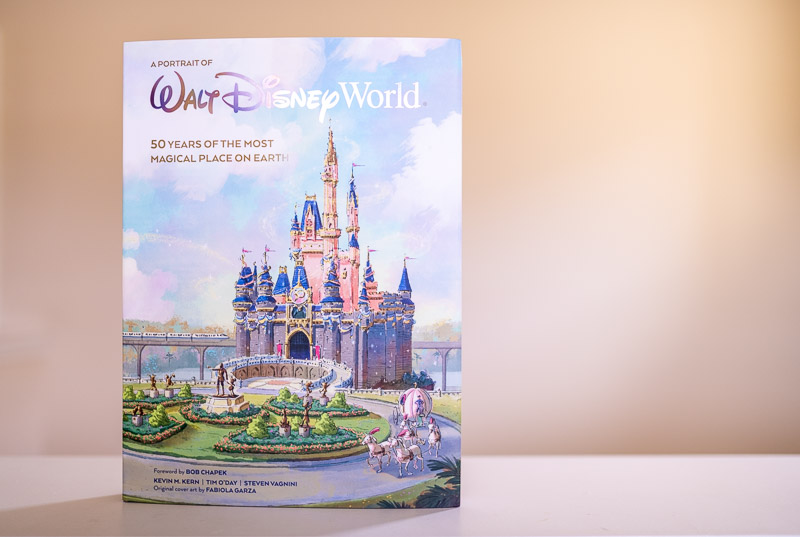
A Portrait of Walt Disney World: 50 Years of The Most Magical Place on Earth – This is the best Walt Disney World-specific coffee table book ever. In style, structure, and quality, this is more like a Disneyland deep-dive than one of the past Walt Disney World souvenir books. From Florida history pre-Disney and the Preview Center to the development and history of the Vacation Kingdom, there is a wealth of knowledge thoughtfully presented here in a way that is engaging, informative, and entertaining. There are also tons of photos and concept art I’ve never seen–a rarity for Walt Disney World books, which often recycle not just information–but images.
It reads like a love letter to Walt Disney World (or many love letters, as the authors have cleverly inserted essays from key figures in Walt Disney World’s history, bringing other interesting voices and perspectives to the mix) that is for fans–by fans. This is one of the best things to come out of Walt Disney World’s 50th Anniversary, and not just in terms of merchandise. You can read our full review if you want , but the bottom line is that this is the best book about Walt Disney World.
The Imagineering Story: The Official Biography of Walt Disney Imagineering – The companion book to the highly acclaimed Disney+ documentary series, The Imagineering Story. This title greatly expands on award-winning filmmaker Leslie Iwerks’ narrative of the fascinating history of Walt Disney Imagineering. If you’ve watched the Imagineering Story on Disney+, that’s likely all you need to know to make this book a must-own. If you haven’t watched the Imagineering Story…well, remedy that immediately!
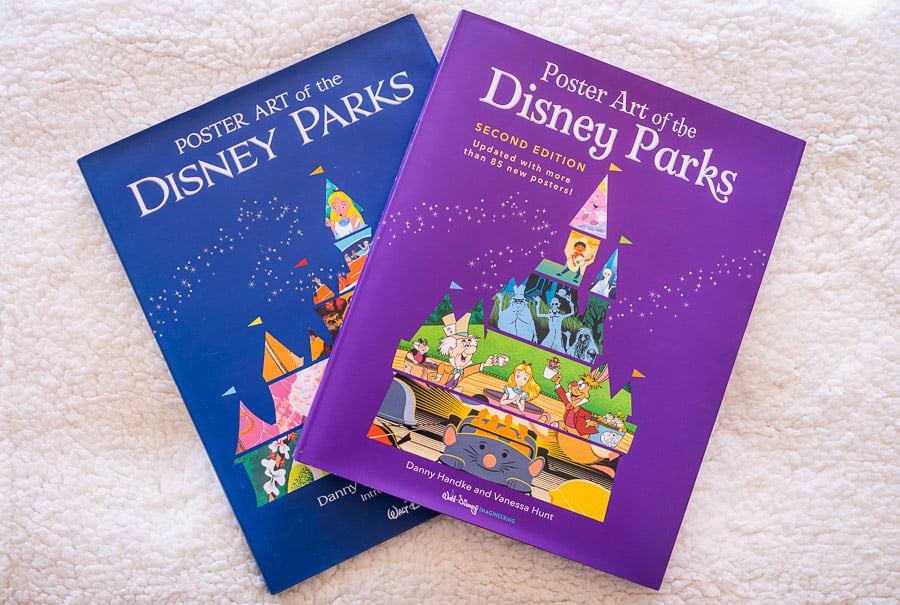
Poster Art of the Disney Parks, Second Edition – This new title is an expanded and updated edition of the beloved book that ranks highly in our library. The second edition renders the first obsolete, as the 85+ new posters and behind-the-scenes development info nearly doubles the book in length. While the first edition is fantastic and can be purchased even cheaper now, we highly recommend springing for the new edition.
It’s worth it for all of the awesome new posters made for EPCOT’s reimagining alone. These were displayed in the Odyssey/EPCOT Experience, and are absolutely stunning. (If, like us, you were unable to score the limited releases on shopDisney, this is a good consolation prize.) In the decade since the original’s release, Shanghai Disneyland has opened and various expansions pretty much everywhere have resulted in a treasure trove of new poster art. Highly recommended!
Maps of the Disney Parks – The companion piece (of sorts) to the ‘Poster Art’ title above featuring park maps along with map-like concept art from the parks. This one has been met with more of a mixed response from fans, with most negative reviews fixated on it not being simply a collection of park maps distributed over the years, but can you imagine how dull and repetitive that would’ve become? I found this to be much more engaging than a bunch of map reproductions, but perhaps that’s just me. (I will say that if you’re only buying one of these books, go for the Poster Art one. It’s the better of the two.)
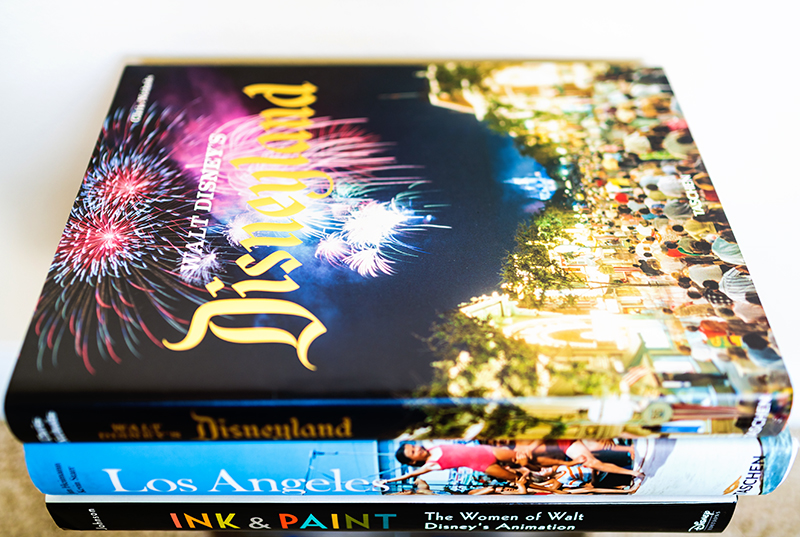
Walt Disney’s Disneyland — This oversized title by TASCHEN, the world’s leading art book publisher, is the most beautiful Disney book to be released in years. Walt Disney’s Disneyland is interesting, stunning, and an absolute must-have for Disneyland fans. Even if you’re a more of a Florida person, there’s a good amount on Walt Disney here, making it a worthwhile option for WDW fans, too. Read my full review of it here .
The Disney Monorail: Imagineering a Highway in the Sky — If you’re a fan of Disney’s monorails ( who isn’t?! ), you’ll love this. There’s a ton of concept art and photos, as the authors take readers on a historical ride the Highway in the Sky. From Walt Disney’s Progress City ambitions to the future of this innovative transportation system.
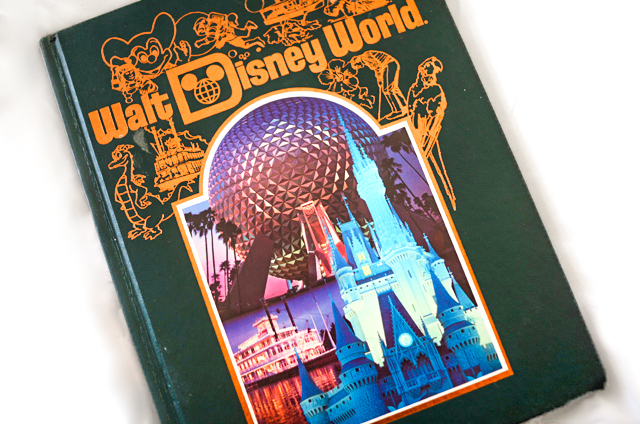
Gardens of the Walt Disney World Resort – Not to be confused by a newer title with a similar name ( Glorious Gardens) , this book is absolutely amazing, and shows just how beautiful Walt Disney World once was with its many gardens and water fixtures. Even if you don’t care about gardening, this book is awesome. I gush over it at length in my full review of it .
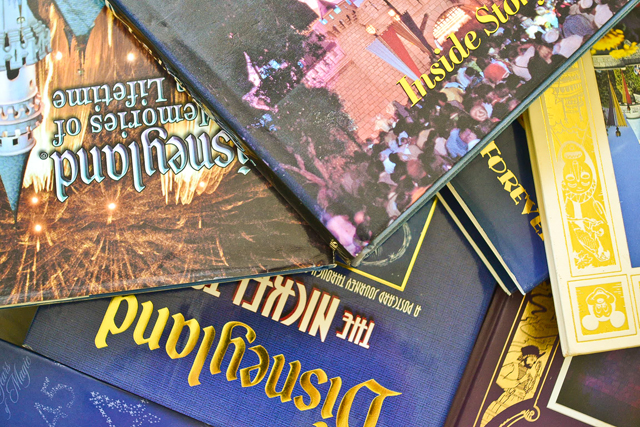
I was skeptical it’d be worth the money, but I’m very glad I bought it. The authors spent over a decade researching and writing this title, and it really shows. This voluminous 392-page title is quite the page turner as the authors inject their humor into it to make the dense history engaging. The value of Nickel Tour will only increase in the coming years as both authors are deceased and the publisher is out of business. It’s very unlikely that any reprints or future editions will be written. Consider this a true investment.
Marc Davis in His Own Words: Imagineering the Disney Theme Parks — This two volume behemoth by Pixar director Pete Docter and Imagineer Christopher Merritt is a passion project about one of the true Walt-era Imagineering heavyweights. Disney Legend Marc Davis is the creative mind behind countless clever gags in iconic attractions, including Country Bear Jamboree!

Ride of a Lifetime: Lessons Learned from 15 Years as CEO of Walt Disney Co — Bob Iger’s memoir from his first run as CEO is shockingly candid and compelling. Iger is clearly a smart and interesting guy, but all of his interviews are played fairly close to the vest and feel meticulously scripted. This is a sharp and fascinating departure from that.
Travels with Figment — The last title by Imagineering Legend Marty Sklar, published posthumously. It’s interesting anecdotes from his globetrotting while developing Disney theme parks around the world. Plus, it has Figment right in the title!
Travels with Walt Disney — “ There’s always a Disney connection. ” That’s what we find ourselves saying whenever we travel, no matter where we go. This is for good reason, as Walt Disney was a world traveler, and this book chronicles his adventures and how they influenced his movies and parks. Lots of original photos, and it’s unique to have a profile of Walt’s life through the lens of travel.
Holiday Magic at the Disney Parks: Celebrations Around the World — A stunning look at (mostly) Halloween and Christmas in the Florida, California, Tokyo, Paris, Hong Kong, and Shanghai Disney theme parks. It is packed with photos and details about what guests see in the parks, but it’s the backstage and behind the scenes insight that make this a special title. Learning about the colossal warehouses and year-round work that goes into the festivities will give you a newfound appreciation for Christmas at Walt Disney World and beyond!
Walt Disney World
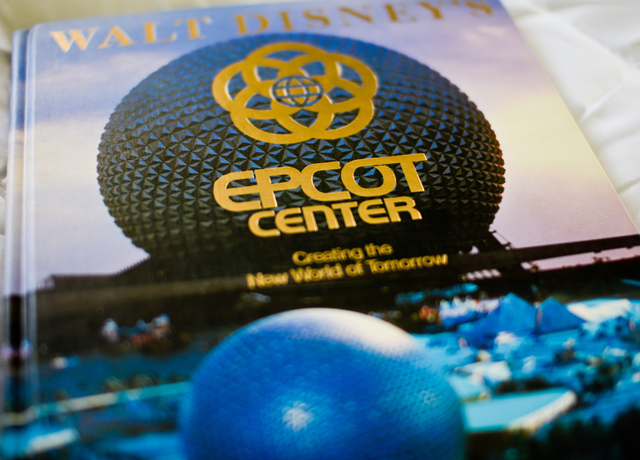
The biggest difference between the larger books is when they were produced, either pre-opening or post-opening of EPCOT Center; they also have different titles (EPCOT v. EPCOT Center in the names). The pre-opening versions contain more photos of models, whereas the post-opening version contain photos of actual pavilions. The 240 page version is obviously the better version to get, but it’s difficult to determine which version you’re getting until it arrives in the mail.
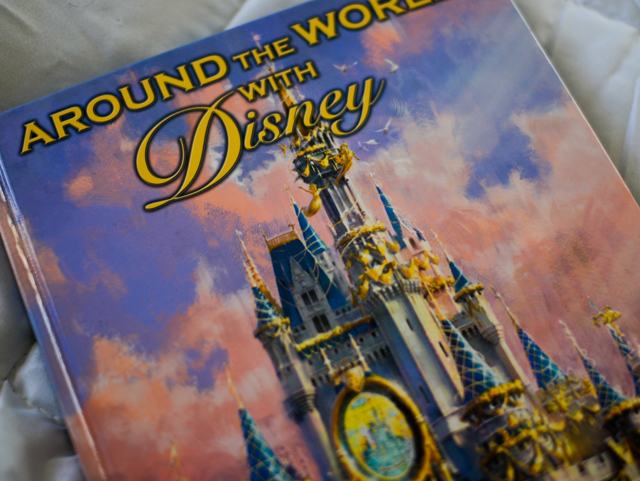
Disneyland Hotel – The Early Years – As soon as you open this book, you can tell it was a passion-project. It’s such a niche title, but it is so incredibly well-researched and presented that I think it could be of interest to most Disney theme park fans. Kudos to Mr. Ballard for creating this title!
Disneyland Hotel 1954-1959 – This is Donald Ballard’s follow-up title to The Early Years , and it offers some great insight into the beginnings of the hotel. It is hyper-focused and really interesting for those interested in the early years of Disneyland.
3D Disneyland: Like You’ve Never Seen It Before — This is a really unique, seemingly gimmicky title that just flat-out works. It offers a rare collection of 3D photographs of Disneyland captured from its opening week in July 1955 through the 25th Anniversary in 1980. The stunning photos have an immersive, ViewMaster-like quality.
Imagineering, Details & Design
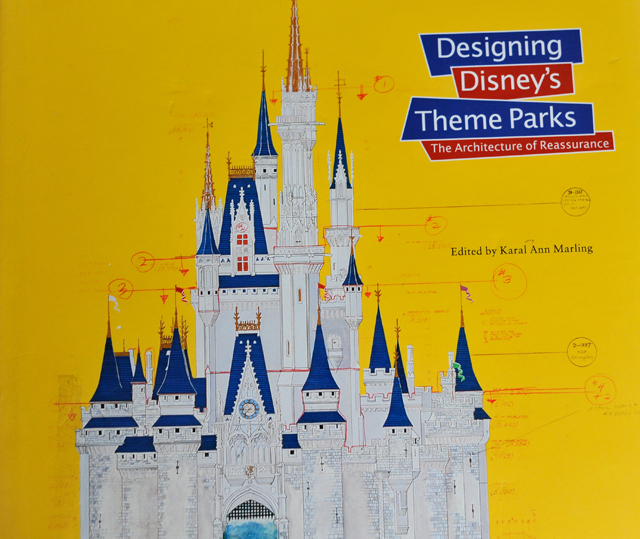
These are books that might cover Disneyland, Walt Disney World, Disneyland Paris, Tokyo Disney Resort, and/or Hong Kong Disneyland. Basically, books that can’t be specifically placed on only either list above. Plus, some excellent titles on Walt Disney Imagineering.
The Art of Star Wars: Galaxy’s Edge – The newest land at Walt Disney World and Disneyland, and a high-water mark for Imagineering. This provides a thoughtful look at the design influences, both from the Star Wars universe and the real world, and offers hundreds of concept artworks, sketches, blueprints, photographs, and more. That includes a several things that never came to fruition for the land, making it somewhat bittersweet.

One Day at Disney – As the name suggests, it’s one day in the worldwide Disney theme parks, presented as the day unfolds around the world. It’s visually engaging, with contrasting photos presented next to one another. While it’s daytime in one park, it might be nighttime in another. The photos, largely, are beautiful, too. The text only really offers explanatory captions, which is absolutely fine. This book is on the expensive side, but I feel it’s worth the money given the quality and concept.
The Magic of Disneyland and Walt Disney World – I expected very little from this book by Valerie Childs. It was a $.99 purchase, just something to fill out my bookshelf. I was floored when I found a plethora of unique and well-composed photos and a rather nice book. Don’t expect an amazing book, but for the low prices, it’s well-worth purchasing!

The Imagineering Field Guides – Imagineer Alex Wright has done an excellent job with these titles, and they are great take-to-the-park books for guests who want to a bit more background information about the parks or the “why” behind the attractions and lands. If you’re going to Walt Disney World or Disneyland Resort, especially for the first time, these titles are a great in-park companion to give you a greater understanding and appreciation of the parks.
Walt Disney’s Imagineering Legends – Jeff Kurtti authors this title that offers mini-biographies of a number of early Imagineers who all had ties to Walt Disney, in some way, and provides anecdotes, quotes, and some background information about each and how they worked in the grand scheme of the design of the theme parks. Definitely a worth addition to any collection.
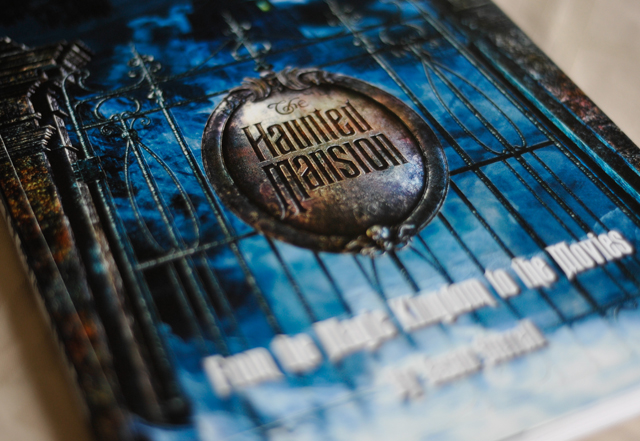
The Disney Mountains: Imagineering At Its Peak – A book featuring text and art of the Disney mountains, this title is somewhat superficial as compared to the Pirates and Haunted Mansion books. To be fair, the former are focused on one attraction each, whereas this was focused on multiple mountains, so it necessarily couldn’t have been as in-depth as those titles. There is a lot of concept art, which is great, but the mountains in this book existed at the time of the publication, so more photos would have been appropriate. Still a great book. If you can find a copy for $25 or less, get it.
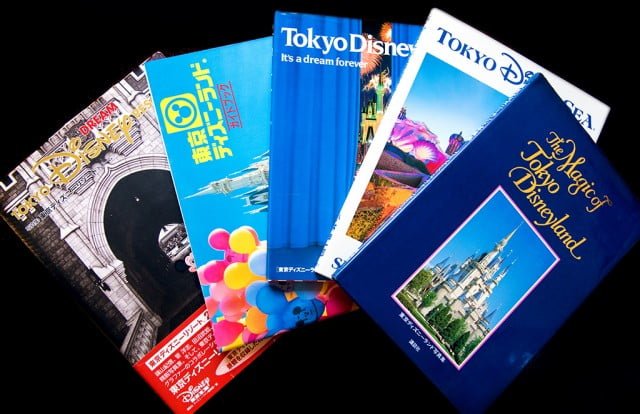
Tokyo Disneyland and DisneySea Books – I’m going to lump all of these books together because they probably don’t interest many of you. All of these books are entirely in Japanese and are overpriced on eBay (about the only place to find them short of going to Japan). The upside? They all feature breathtaking photos of the Tokyo parks, and the photos are the stars of the show, so not reading Japanese makes no difference. I only recommend the 5 books pictured above; there are a lot of other books, but they are all character photos.
Biographies & Misc.

Many other books in my collection are independent titles produced by third party publishers (ones that Disney doesn’t own). With the proliferation of self-publishing and the interest in the Disney theme parks, in general, it’s not pragmatic to list every Disney book I own here. Here are the highlights…
The Animated Man: A Life of Walt Disney – For many Disney fans, Walt Disney is the ultimate hero. Between that and the company’s attempt to market Walt as a caricature of a real person, he is often viewed is infallible, more creative than any other human ever, etc. This book does not do that. It also doesn’t demonize him as other books have tried to do. It presents a balanced view of Walt Disney, both good and bad. The stories aren’t as humorous or enthralling as those in some other books, but it’s very interesting.
Eat Like Walt: The Wonderful World of Disney Food — Thankfully, this is NOT A COOKBOOK. It’s a book about historical stories through the lens of food. With tons of original photos, it feels like taking steps back in time to the early days of Disneyland. It’s an excellent history book and features a ton of striking photos we had never seen before. We highly recommend it—just don’t expect much in the way of recipes!
It’s Kind of a Cute Story – Imagineer Rolly Crump is one of the last Walt Disney-era Imagineers, and this book covers everything from the design and approval process for Disneyland projects to Crump’s relationship with Walt Disney. The best thing about this book is that it was not published by Disney, so instead of trying to sugarcoat Walt Disney’s personality, it presents a more candid take. It is still far from a ‘tell-all’, but you just feel a different tone with it. Another incredibly well done book.
Ink & Paint: The Women of Walt Disney’s Animation — This book is an overdue celebration of the women who played a pivotal role in the early years of Walt Disney’s animation department. The result is a beautiful, informative book that’s shockingly large (at least, its size surprised us). Thoroughly researched and infinitely fascinating, this is a must-have new release.
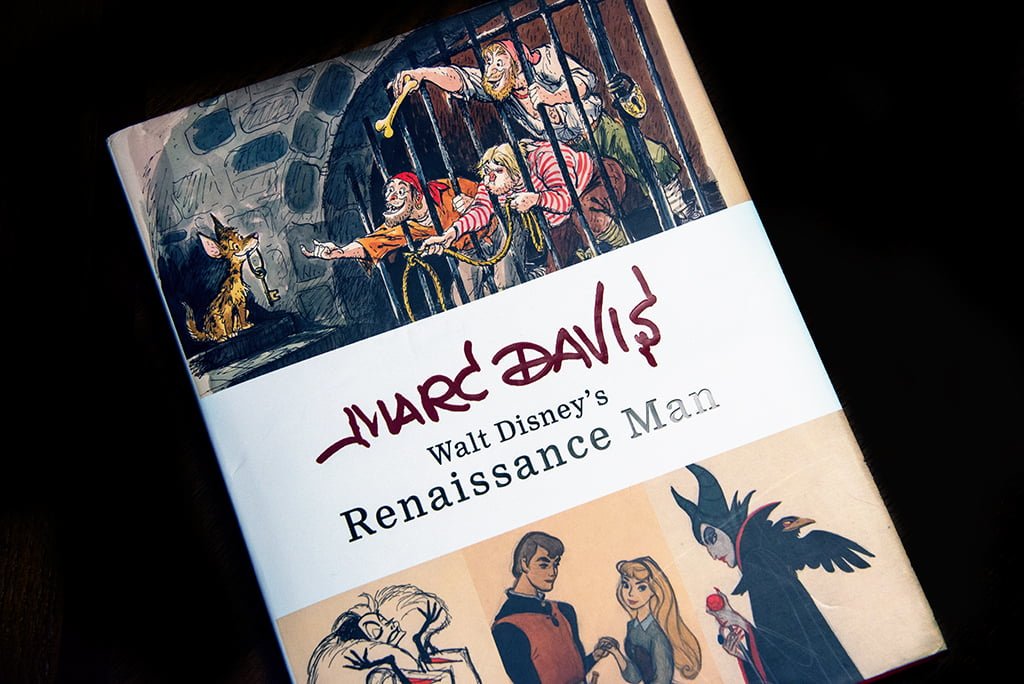
Marc Davis: Walt Disney’s Renaissance Man – Biography of another Disney Legend, this one is sort of hit and miss. The art that was curated for the title is mostly stunning, but there are some notable omissions and the text isn’t all that special. If you’re looking for a coffee table book featuring art from one of the most legendary Imagineers of all-time, I recommend it. Read my full review of this book here .
Dream It! Do It! – Marty Sklar’s autobiography is interesting in that Sklar is the only person who has had a hand in opening every single Disney theme park to date. Sklar also had a lot of relationships with key individuals in Imagineering and elsewhere within Disney, and he covers both the good and bad of that. Despite being published by Disney, this book is surprisingly frank. Read my full review here.
Designing Disney – Legend John Hench is easily one of the greatest Imagineers of all time. This book is a thoughtful examination of how he and others designed the parks. It’s approachable-enough for the Disney newcomer, but still has enough depth to satisfy a die-hard fan. A lot of Hench’s later writings come across as intellectual justifications for why these gut decisions were made. A must own.
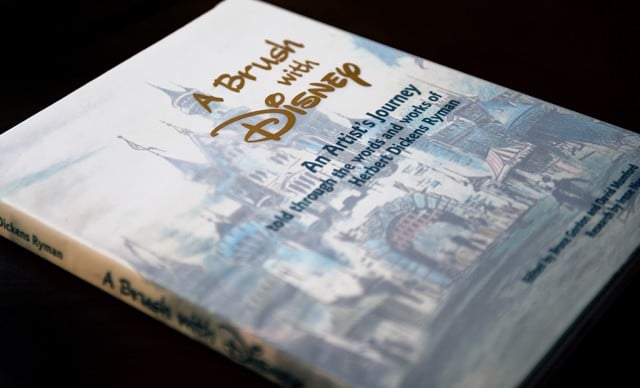
A Brush with Disney – Disney Legend Herb Ryman had an illustrious career with Disney, working side-by-side with Walt Disney and doing concept art for the parks for decades. His Disney work is breathtaking, and this book gives insight (perhaps too much) into his non-Disney work as well. It’s pricey, and probably best for the serious Ryman fan.
Travels with Walt Disney — “There’s always a Disney connection.” That’s what we find ourselves saying whenever we travel, no matter where we go. This is for good reason, as Walt Disney was a world traveler, and this book chronicles his adventures and how they influenced his movies and parks. Lots of original photos, and it’s unique to have a profile of Walt’s life through the lens of travel.
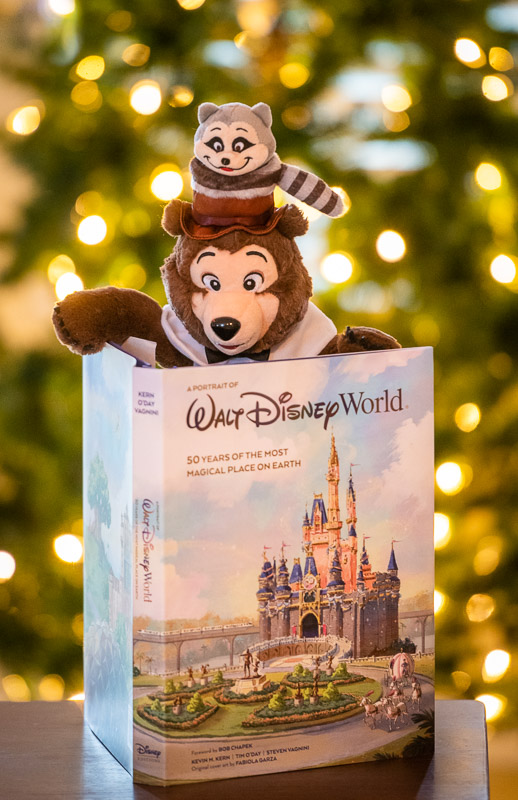
One final note: when buying older Disney souvenir books, make sure the item listing includes a photo. Most of these books do not have ISBN numbers and have similar-sounding names, and are thus prone to being mis-listed by sellers if there is no photo on the item page. I’ve received the incorrect book a couple of times.
I have a lot of other Disney books in my library, but these are the highlights that pertain to the Disney Parks. I have several other souvenir books and miscellaneous biographies, so if you have questions about other titles not listed here, ask!
We hope this helps you fill your bookcase with Disney Parks titles! If you are considering a purchase of any of these (or anything else for that matter) just click the affiliate links here to get to Amazon and navigate to any items you might need. Using these links benefits the site, doesn’t cost you anything, and helps us to keep providing you with useful content!
Your Thoughts…
Which books in this list do you own? Do you have any favorites? Which Disney theme park books do you own that aren’t listed here? Do you agree or disagree with any of our recommendations? Any questions we can help you answer? Hearing your feedback–even when you disagree with us–is both interesting to us and helpful to other readers, so please share your thoughts below in the comments!
Written by Tom Bricker
Hello Tom. Fantastic list, what a collection you’ve made! I wonder if you might know of a book for me?
I find damaged and unwanted vintage books and give them new life as mixed-media journals.
I have plenty of inexpensive vintage Disney storybooks, but a few months ago the recycling bin held a very well-used 1960’s guide to Disneyland. As I wiped away the thick grime, illustrations of 1960’s Disneyland came to life, and I fell in love with them.
“The Art of Disneyland” might be perfect but it’s definitely not something I’d cut up for a journal, LOL.
A photo exists of a 1955 color newspaper supplement of Disneyland but I don’t own the supplement or the copyright of the photo, so that’s probably not going to work either. (Library has only poor-quality b&w pdfs.)
So, can you think of a book or other printed material I can buy or be on the lookout for that has mostly illustrations (as opposed to photos) of Disneyland in the 50’s and 60’s?
Damaged is preferable for my purposes.
This may well be like asking where to find a unicorn, but if anyone would know it would be you. Any suggestions most welcome.
Many thanks.
Thanks for the great list of books. Another title that compliments The Disney War, is Storming the Magic Kingdom. It’s the story of how Michael Eisner snd Frank Wells came to run the company. I’m looking forward to finding a few of yhe books on your list Thanks, Steve B.
This is a great list! For me, Creativity, Inc by Ed Catmull would be a must-add. Though technically not a Disney book (since it’s about the conception, birth and early years of Pixar) it is among the best books I’ve read regarding the incredibly difficult balance between business and creativity. I’ve bought, given away and re-bought this book five times now. My most recent copy was delivered a couple days before you published this post. I can’t recommend it enough for anyone who nerds out on Pixar, but more specifically for anyone who has ever tried to thread the needle when it comes to managing the dissonance between doing something that’s an inherently creative enterprise with trying to run a successful (and profitable) business.
Plus, my 10th grade band nerd self gets irrationally excited every time I see Buzz Lightyear conducting a symphony on the cover
It’s been a good Disney book year for me – started by reading Disney Wars before moving onto Foxx’s “Boundless Realm” and am now working through the two-volume Marc Davis book (which might be my favorite Disney coffee book I’ve ever purchased.) All have been top notch reads.
Tom, do you know if there’s any books out there about the history or design of DCL? I don’t know much at all of the history of DCL and am curious to know more.
A great companion for the Disney Wars is Storming the Magic Kingdom which recounts the financial battle that led to Eisner and Wells being brought in when the company was saved form raiders.
I purchased the The Art of Walt Disney World by Finch about 12 years ago. I saw it in an Antique Store for $250. She offered to reduce the price to $220 because of eBay. I did not buy it. I went home and looked on eBay for the first time. I found one. There were no bids on it. Starting bid was 99 cents. I bid 99 cents. I got it. I also received the paperback book that was published a few years after the original coffee table book. I only paid about $7.00 for both of them. That was the cost including the shipping. This was my first eBay purchase. I love it. The book is still on my coffee table. I have also lucked out and found quite a few books at thrift stores for just a few dollars.
One of my favorites is Disneyland World Of Flowers.
This is fun! Thanks for sharing. I actually own most from the WDW list. Curious…what condition are you willing to purchase on a used book? I tend to only look for “like new”, honestly because I don’t know what to expect on anything less. Is “very good“ acceptable to you as a collector?
It honestly depends on the book and pricing. If it’s not that much more expensive, I’ll go for the best condition. However, with some of the more rare titles that just isn’t possible–or it’s significantly more expensive. I’m primarily concerned about the contents of the books, so something is better than nothing!
I love the new Marc Davis book.
I love the new Marc Davis book. I am glad to see you added to the list .
Steve, thanks for mentioning the 50 anniversary book that’s coming out in September. I just pre-ordered, “Walt Disney World: A Portrait of the First Half Century” by Kevin Kern from Amazon. It sounds amazing and I can’t wait to own it!
Great list! I can’t wait for the WDW 50th anniversary book that’s coming out later this year. My apologies if this has already been mentioned in an older comment but “Disneyland Paris: From Sketch to Reality” is now available as an ebook at a much more reasonable price. I know ebooks aren’t for everyone but worth mentioning. Have you had a chance to look at any of the Disneyland Paris attraction specific books that have come out in the last year or so? So far, one each for Phantom Manor, POTC, and Space Mountain have been released. The text is in both French and English and, if you get lucky and they happen to be in stock, you can find them on shopdisney.uk (which will ship to the US) for a much more reasonable price than if you purchase them on eBay.
Can you suggest any books about the adventure club? Or about the behind the story of a particular attraction. I’ve enjoyed the back story that has come out with the Jungle Cruise and was wondering if there are any other similar type back stories to other attractions. Thank you
Melanie Edens
Do you own, “Eat Like Walt: Disney’s Love of Food and Flavors” by Marcy Carriker Smothers? If you don’t, I think you will enjoy all the recipes and places where Walt liked to eat, both in the parks and restaurants he enjoyed, like the Tam O’Shanter in LA.
Excellent bibliography! We own some Disney books, but now I see we need to add to the collection (full disclosure: my husband and I are both librarians and book collectors/addicts). I also love the cookbooks and usually head to Main Street to shop for new ones after a stop at the Jolly Holiday Bakery. It’s been too long! Like many we had to cancel our trip during the pandemic and can’t wait until we can go again (Arizona misses the Mouse).
Your email address will not be published. Required fields are marked *
Save my name, email, and website in this browser for the next time I comment.
Notify me of follow-up comments by email.
Notify me of new posts by email.

Must Read Books for Fans of Walt Disney
Disney fans aren’t just fans of the parks and the movies. They are also fans of the man himself…Walt Disney. The driving force behind Disneyland and Walt Disney World. Like most Disney fans, I can’t get enough of the stories of his life and legacy. Fortunately there are more than enough books for fans of Walt Disney to keep us all busy!
There are so many books that I couldn’t possible list all of them. But here is a brief look at some of the best for the next time you are in the mood for a fun Disney book .
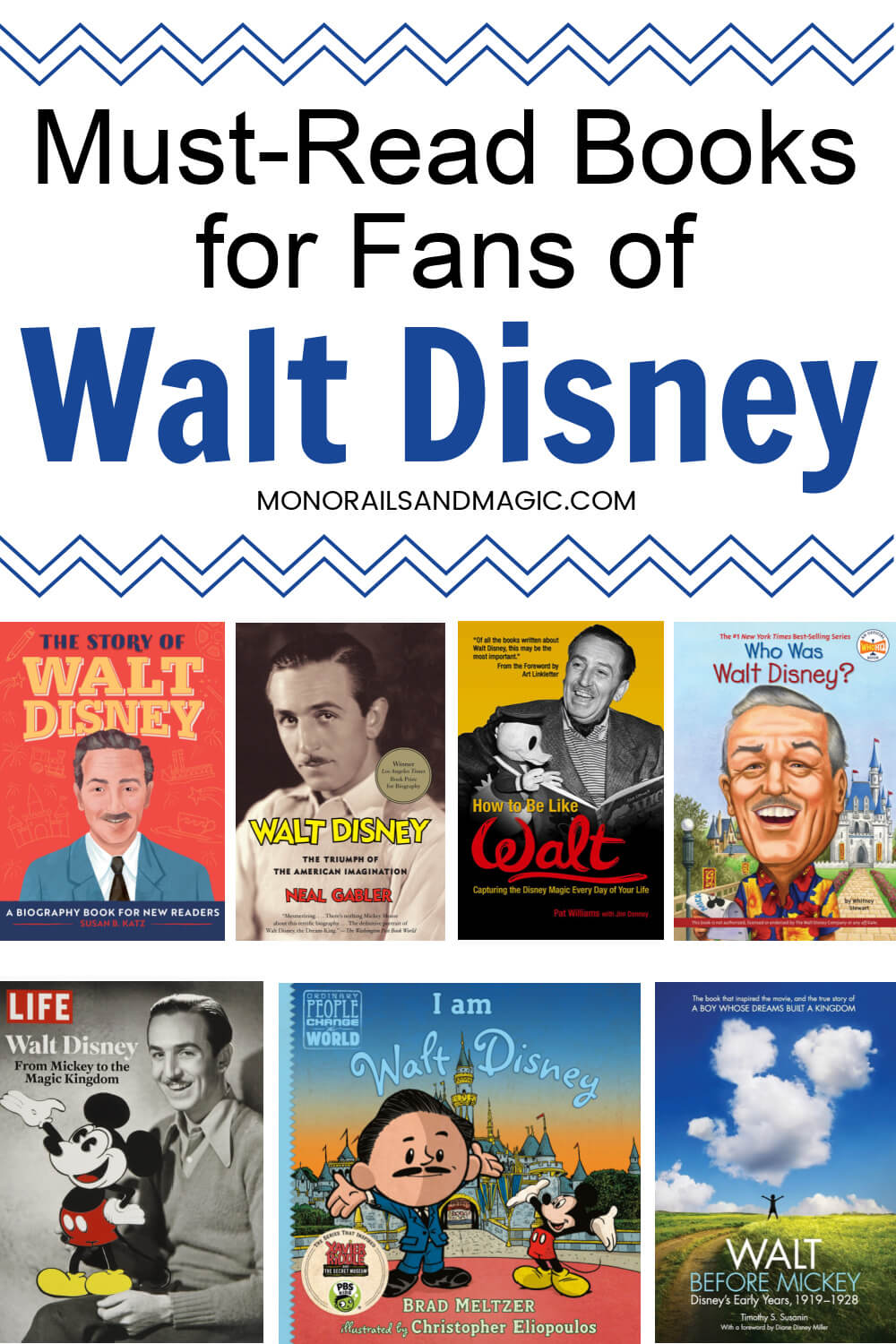
***This post includes affiliate links. Please see my disclosure policy for more information.***
Books for Fans of Walt Disney
Disney fans have so many books to choose from. Books about the parks, the movies, the imagineers, the animators, and more. But these books about the man himself are must-reads for fans of all ages.
Walt Disney Books for Grown Ups
LIFE Walt Disney: From Mickey to the Magic Kingdom by LIFE Special
LIFE Magazine has followed Walt Disney’s career since the very beginning and in this all-new special edition, LIFE revisits both the man and the magic. It is a beautiful tribute to Walt Disney.
Quotable Walt Disney by Dave Smith
Fans of Walt Disney love to quote him. This amazing resource contains over 250 pages filled with Walt Disney quotes, from the well-known to the obscure, on just about every topic.
Walt Disney: The Triumph of the American Imagination by Neal Gabler
This award winning biography is full of facts and details about Walt Disney’s life. Author Neal Gabler shows us how, over the course of two decades, Disney revolutionized the entertainment industry.
Walt Disney: An American Original by Bob Thomas
Originally published in 1976, this biography is a fascinating and inspirational work that captures the spirit of Walt Disney and stands the test of time with its rare collection of photographs.
The Revised Vault of Walt: Unofficial Disney Stories Never Told by Jim Korkis
Filled with stories your probably haven’t heard, former Disney cast member and master storyteller Jim Korkis weaves his home-spun, entertaining tales, from the early years of Walt Disney to the present.
Walt Before Mickey: Disney’s Early Years, 1919-1928 by Timothy Susanin
In this biography, readers get a closer look at Disney’s earliest days as an animator. We learn about his years working in a variety of venues and studios, refining what would become known as the Disney style.
How to Be Like Walt: Capturing the Disney Magic Every Day of Your Life by Pat Williams
If you are looking for a positive, light-hearted look at the life of Walt Disney, be sure to check out this honest but positive look at the man behind the myth.
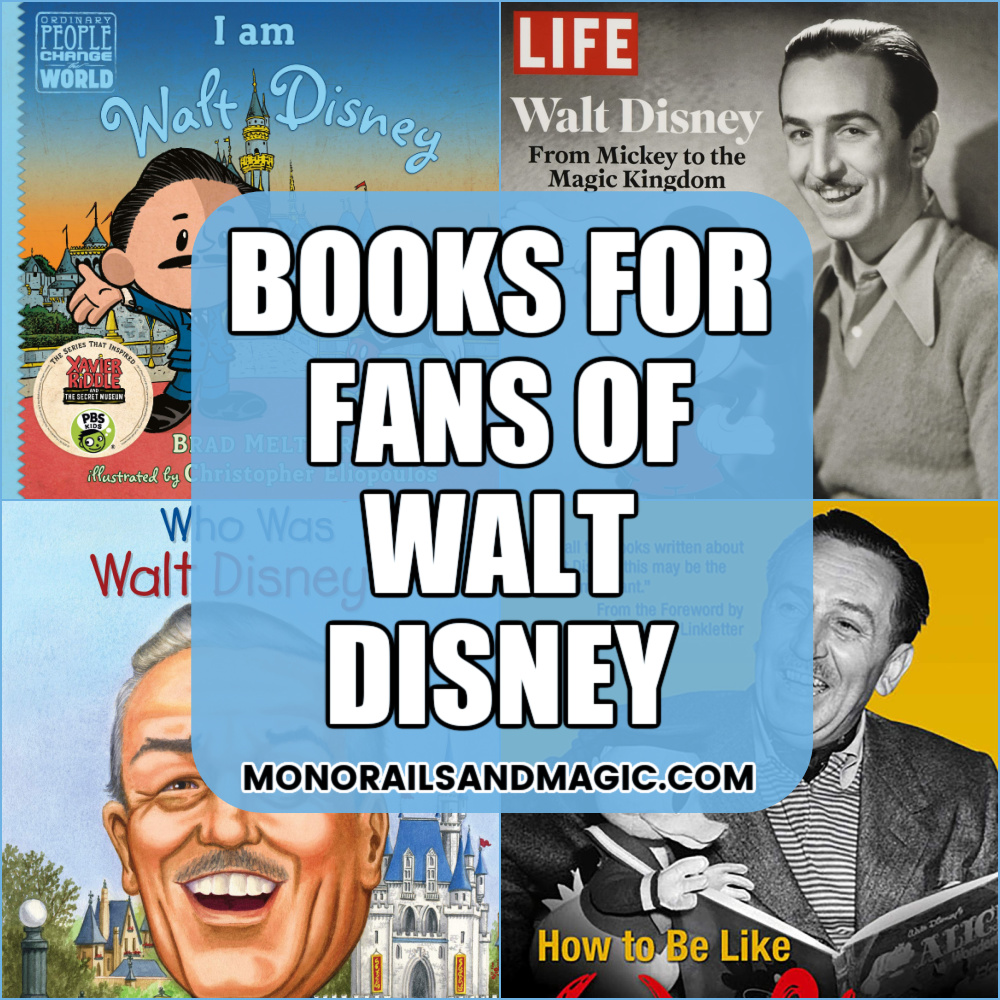
Walt Disney Books for Kids
Who Was Walt Disney? by Whitney Stewart
The “Who Was?” series of books offers easy to read, yet thorough, biographies for children. With black-and-white illustrations throughout, this biography reveals the man behind the magic.
I Am Walt Disney by Brad Meltzer
Young children can take a closer look at the life of Walt Disney in this picture book that focuses on the traits that made him great.
The Story of Walt Disney: A Biography Book for New Readers by Susan B. Katz
This brand new chapter book for children explores how Walt went from being a young boy growing up in the Midwest to a creative genius.
One Comment
I have six of your ten! All good reads.
Leave a Reply Cancel reply
Your email address will not be published. Required fields are marked *
Biography Online

Walt Disney Biography
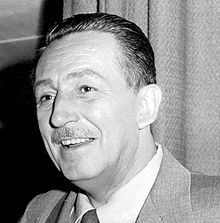
Early Life – Walt Disney
Walt Disney was born on 5 December 1901, in Chicago. His parents were of German/English and Irish descent. As a child, the Disney family moved between Marceline in Missouri, Kansas City and back to Chicago. The young Walt Disney developed an interest in art and took lessons at the Kansas City Institute and later Chicago Art Institute. He became the cartoonist for the school magazine.
When America joined the First World War, Walt dropped out of school and tried to enlist in the army. He was rejected for being underage, but he was later able to join in the Red Cross and in late 1918 was sent to France to drive an ambulance.
In 1919, he moved back to Kansas City where he got a series of jobs, before finding employment in his area of greatest interest – the film industry. It was working for the Kansas City Film Ad company that he gained the opportunity to begin working in the relatively new field of animation. Walt used his talent as a cartoonist to start his first work.
The success of his early cartoons enabled him to set up his own studio called Laugh-O-Gram. However, the popularity of his cartoons was not matched by his ability to run a profitable business. With high labour costs, the firm went bankrupt. After his first failure, he decided to move to Hollywood, California which was home to the growing film industry in America. This ability to overcome adversity was a standard feature of Disney’s career.
“All the adversity I’ve had in my life, all my troubles and obstacles, have strengthened me… You may not realize it when it happens, but a kick in the teeth may be the best thing in the world for you.”
– The Story of Walt Disney (1957)
With his brother, Roy, Walt set up another company and sought to find a distributor for his new film – Alice Comedies – based on the adventures of Alice in Wonderland.
Mickey Mouse
In 1927, the Disney studio was involved in the successful production of ‘Oswald the Lucky Rabbit’, distributed by Universal Pictures. However, with Universal Pictures controlling the rights to ‘Oswald the Lucky Rabbit’, Walt was not able to profit from this success. He rejected an offer from Universal and went back to working on his own.
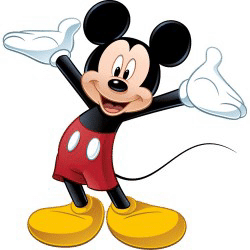
The Mickey Mouse cartoons with soundtracks became very popular and cemented the growing reputation and strength of Disney Productions. The skill of Walt Disney was to give his cartoons believable real-life characteristics. They were skillfully depicted and captured the imagination of the audience through his pioneering use of uplifting stories and moral characteristics.
In 1932, he received his first Academy Award for the Best Short Subject: Cartoons for the three coloured ‘Flowers and Trees’ He also won a special Academy Award for Mickey Mouse.
In 1933, he developed his most successful cartoon of all time ‘The Three Little Pigs’ (1933) with the famous song ‘Whose Afraid of the Big Bad Wolf.”
In 1924, Walt Disney began his most ambitious project to date. He wished to make a full length animated feature film of ‘Snow White and the Seven Dwarfs.’ Many expected it to be a commercial failure. But, using new techniques of filming, the production was met with glowing reviews. It took nearly three years to film – coming out in 1937 after Disney had run out of money. But, the movie’s strong critical reception, made it the most successful film of 1938, earning $8 million on its first release. The film had very high production values but also captured the essence of a fairy tale on film for the first time. Walt Disney would later write that he never produced films for the critic, but the general public. Replying to criticism that his productions were somewhat corny, he replied:
“All right. I’m corny. But I think there’s just about a-hundred-and-forty-million people in this country that are just as corny as I am.” – Walt Disney
Disney always had a great ability to know what the public loved to see.
After the success of Snow White and the Seven Dwarfs, the studio produced several other successful animations, such as ‘Pinocchio’, ‘Peter Pan’, ‘Bambi’ and ‘The Wind in the Willows’. After America’s entry into the Second World War in 1941, this ‘golden age’ of animation faded and the studio struggled as it made unprofitable propaganda films.
Political and religious views
In 1941, Disney also had to deal with a major strike by his writers and animators. This strike left a strong impression on Disney. He would later become a leading member of the anti-Communist organisation ‘Motion Picture Alliance for the Preservation of American Ideals’ (the right-wing organisation was also considered to be anti-semitic.) At one point, he (unsuccessfully) tried to brand his labour union organisers as Communist agitators.
However, in the 1950s, Disney distanced himself from the Motion Picture Alliance for the Preservation of American Ideals. However, by associating with the organisation, he was often associated with the anti-labour and anti-semitic philosophy it expressed. Disney was a Republican, though was not particularly involved in politics. It is often asked whether Walt Disney was anti-semitic.
His biographer, Neal Gabler stated:
“…And though Walt himself, in my estimation, was not anti-semitic, nevertheless, he willingly allied himself with people who were anti-semitic, and that reputation stuck. He was never really able to expunge it throughout his life.”
Walt Disney believed in the benefits of a religious approach to life, though he never went to church and disliked sanctimonious teachers.
“I believe firmly in the efficacy of religion, in its powerful influence on a person’s whole life. It helps immeasurably to meet the storms and stress of life and keep you attuned to the Divine inspiration. Without inspiration, we would perish.”
Ch. 15: Walt Lives!, p. 379
He respected other religions and retained a firm faith in God.
Post-war success
During the war, there was much less demand for cartoon animation. It took until the late 1940s, for Disney to recover some of its lustre and success. Disney finished production of Cinderella and also Peter Pan (which had been shelved during the war) In the 1950s, Walt Disney Productions also began expanding its operations into popular action films. They produced several successful films, such as ‘Treasure Island’ (1950), ‘20,000 Leagues Under the Sea’ (1954) and ‘Pollyanna’ (1960)
In another innovation, the studio created one of the first specifically children’s shows – The Mickey Mouse Club. Walt Disney even returned to the studio to provide the voice. In the 1960s, the Disney Empire continued to successfully expand. In 1964, they produced their most successful ever film ‘Mary Poppins.’
In the late 1940s, Walt Disney began building up plans for a massive Theme Park. Walt Disney wished the Theme Park to be like nothing ever created on earth. In particular, he wanted it to be a magical world for children and surrounded by a train. Disney had a great love of trains since his childhood when he regularly saw trains pass near his home. It was characteristic of Walt Disney that he was willing to take risks in trying something new.
“Courage is the main quality of leadership, in my opinion, no matter where it is exercised. Usually, it implies some risk, especially in new undertakings. Courage to initiate something and to keep it going, pioneering and adventurous spirit to blaze new ways, often, in our land of opportunity.”
– The Disney Way Fieldbook (2000) by Bill Capodagli
After several years in the planning and building, Disneyland opened on July 17, 1955. Disney spoke at the address.
“To all who come to this happy place; welcome. Disneyland is your land. Here age relives fond memories of the past …. and here youth may savor the challenge and promise of the future. Disneyland is dedicated to the ideals, the dreams and the hard facts that have created America … with the hope that it will be a source of joy and inspiration to all the world.”
The success of Disneyland encouraged Walt to consider another park in Orlando, Florida. In 1965, another theme park was planned.
Walt Disney died of lung cancer on December 15, 1966. He had been a chain smoker all his life. An internet myth suggested Walt Disney had his body cryonically frozen, but this is untrue. It seems to have been spread by his employers, looking for one last joke at the expense of their boss.
After his death, his brother Roy returned to lead The Disney Company, but the company missed the direction and genius of Walt Disney. The 1970s were a relatively fallow period for the company, before a renaissance in the 1980s, with a new generation of films, such as ‘Who Framed Roger Rabbit’ (1988) and ‘The Lion King’ (1994)
Citation: Pettinger, Tejvan . “Biography of Walt Disney”, Oxford, UK. www.biographyonline.net , 8th August 2014. Last updated 1st March 2019.
Walt Disney: The Triumph of the American Imagination

Walt Disney: The Triumph of the American Imagination at Amazon
Related Pages
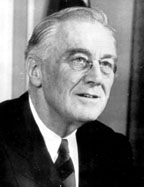
Famous Americans – Great Americans from the Founding Fathers to modern civil rights activists. Including presidents, authors, musicians, entrepreneurs and businesspeople.
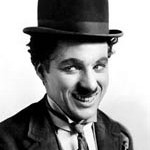
- Top 100 famous people
Related people
- Charlie Chaplin
- Alfred Hitchcock

Walt Disney
- Born December 5 , 1901 · Chicago, Illinois, USA
- Died December 15 , 1966 · Los Angeles, California, USA (complications from lung cancer)
- Birth name Walter Elias Disney
- Height 5′ 10″ (1.78 m)
- Walter Elias Disney was born on December 5, 1901 in Chicago, Illinois, the son of Flora Disney (née Call) and Elias Disney , a Canadian-born farmer and businessperson. He had Irish, German, and English ancestry. Walt moved with his parents to Kansas City at age seven, where he spent the majority of his childhood. At age 16, during World War I, he faked his age to join the American Red Cross. He soon returned home, where he won a scholarship to the Kansas City Art Institute. There, he met a fellow animator, Ub Iwerks . The two soon set up their own company. In the early 1920s, they made a series of animated shorts for the Newman theater chain, entitled "Newman's Laugh-O-Grams". Their company soon went bankrupt, however. The two then went to Hollywood in 1923. They started work on a new series, about a live-action little girl who journeys to a world of animated characters. Entitled the "Alice Comedies", they were distributed by M.J. Winkler (Margaret). Walt was backed up financially only by Winkler and his older brother Roy O. Disney , who remained his business partner for the rest of his life. Hundreds of "Alice Comedies" were produced between 1923 and 1927, before they lost popularity. Walt then started work on a series around a new animated character, Oswald the Lucky Rabbit. This series was successful, but in 1928, Walt discovered that M.J. Winkler and her husband, Charles Mintz , had stolen the rights to the character away from him. They had also stolen all his animators, except for Ub Iwerks . While taking the train home, Walt started doodling on a piece of paper. The result of these doodles was a mouse named Mickey. With only Walt and Ub to animate, and Walt's wife Lillian Disney (Lilly) and Roy's wife Edna Disney to ink in the animation cells, three Mickey Mouse cartoons were quickly produced. The first two didn't sell, so Walt added synchronized sound to the last one, Steamboat Willie (1928) , and it was immediately picked up. With Walt as the voice of Mickey, it premiered to great success. Many more cartoons followed. Walt was now in the big time, but he didn't stop creating new ideas. In 1929, he created the 'Silly Symphonies', a cartoon series that didn't have a continuous character. They were another success. One of them, Flowers and Trees (1932) , was the first cartoon to be produced in color and the first cartoon to win an Oscar; another, Three Little Pigs (1933) , was so popular it was often billed above the feature films it accompanied. The Silly Symphonies stopped coming out in 1939, but Mickey and friends, (including Minnie Mouse, Donald Duck, Goofy, Pluto, and plenty more), were still going strong and still very popular. In 1934, Walt started work on another new idea: a cartoon that ran the length of a feature film. Everyone in Hollywood was calling it "Disney's Folly", but Snow White and the Seven Dwarfs (1937) was anything but, winning critical raves, the adoration of the public, and one big and seven little special Oscars for Walt. Now Walt listed animated features among his ever-growing list of accomplishments. While continuing to produce cartoon shorts, he also started producing more of the animated features. Pinocchio (1940) , Dumbo (1941) , and Bambi (1942) were all successes; not even a flop like Fantasia (1940) and a studio animators' strike in 1941 could stop Disney now. In the mid 1940s, he began producing "packaged features", essentially a group of shorts put together to run feature length, but by 1950 he was back with animated features that stuck to one story, with Cinderella (1950) , Alice in Wonderland (1951) , and Peter Pan (1953) . In 1950, he also started producing live-action films, with Treasure Island (1950) . These began taking on greater importance throughout the 50s and 60s, but Walt continued to produce animated features, including Lady and the Tramp (1955) , Sleeping Beauty (1959) , and One Hundred and One Dalmatians (1961) . In 1955 he opened a theme park in southern California: Disneyland. It was a place where children and their parents could take rides, just explore, and meet the familiar animated characters, all in a clean, safe environment. It was another great success. Walt also became one of the first producers of films to venture into television, with his series The Magical World of Disney (1954) which he began in 1954 to promote his theme park. He also produced The Mickey Mouse Club (1955) and Zorro (1957) . To top it all off, Walt came out with the lavish musical fantasy Mary Poppins (1964) , which mixed live-action with animation. It is considered by many to be his magnum opus. Even after that, Walt continued to forge onward, with plans to build a new theme park and an experimental prototype city in Florida. He did not live to see the culmination of those plans, however; in 1966, he developed lung cancer brought on by his lifelong chain-smoking. He died of a heart attack following cancer surgery on December 15, 1966 at age 65. But not even his death, it seemed, could stop him. Roy carried on plans to build the Florida theme park, and it premiered in 1971 under the name Walt Disney World. His company continues to flourish, still producing animated and live-action films and overseeing the still-growing empire started by one man: Walt Disney, who will never be forgotten. - IMDb Mini Biography By: Tommy Peter
- Spouse Lillian Disney (July 13, 1925 - December 15, 1966) (his death, 2 children)
- Children Diane Disney
- Parents Flora Disney Elias Disney
- Relatives Robert Disney (Aunt or Uncle) Christopher Disney Miller (Grandchild) Tamara Scheer (Grandchild) Walter Elias Disney Miller (Grandchild) Joanna Miller (Grandchild) Ronald Miller (Grandchild) Abigail Disney (Niece or Nephew) Roy P. Disney (Niece or Nephew) Tim Disney (Niece or Nephew) Marjorie Sewell (Niece or Nephew) Roy O. Disney (Sibling) Herbert Disney (Sibling) Ruth Disney (Sibling) Raymond Disney (Sibling) Roy Edward Disney (Niece or Nephew) Victoria Brown (Grandchild) Jennifer Miller-Goff (Grandchild)
- Happy endings on all pictures produced by himself (also posthumous and actual works).
- Main characters using big white gloves (Example: Mickey Mouse, Goofy, Peter Pete, Jiminy Cricket, etc.)
- His moustache
- Animated Films
- Distinctive, deep voice
- Personally disliked Alice in Wonderland (1951) and Peter Pan (1953) because of the lack of "heart" and "warmth" in their main characters. Was very sad about the unfavorable reception of Fantasia (1940) as he was proud of the film. Ironically, the first re-issue of Fantasia (1940) after his death was the first time it turned a profit.
- Shortly after the Japanese attack on Pearl Harbor in 1941, an Army draft notice, addressed to Mr. Donald Duck, was delivered to the Disney studios.
- Reports surfaced that shortly after his death, Disney Company executive board members were shown a short film that Disney had made before his death, where he addressed the board members by name, telling each of them what was expected of them. The film ended with Disney saying, "I'll be seeing you."
- Has a record of 59 Oscar-nominations.
- Before his 35th birthday, his brother Roy encouraged employees to throw the boss a surprise party. Two of the animators thought it would be hilarious to make a short movie of Mickey and Minnie Mouse "consummating their relationship." When Disney saw the animation at the party, he feigned laughter and playfully asked who made the film. As soon as the two animators came forward, he fired them on the spot and left.
- I don't make pictures just to make money. I make money to make more pictures.
- I'd rather entertain and hope that people learn, than teach and hope that people are entertained.
- I'm not interested in pleasing the critics. I'll take my chances pleasing the audiences.
- I hope we'll never lose sight of one thing--that it was all started by a mouse.
- I happen to be an inquisitive guy and when I see things I don't like, I start thinking why do they have to be like this and how can I improve them.
- One Hundred and One Dalmatians (1961) - $5,166 /week
- Swiss Family Robinson (1960) - $3,000 /week
Contribute to this page
- Learn more about contributing
More from this person
- View agent, publicist, legal and company contact details on IMDbPro
More to explore

Recently viewed
Walt Disney: 7 Things You Didn't Know About the Man and the Magic
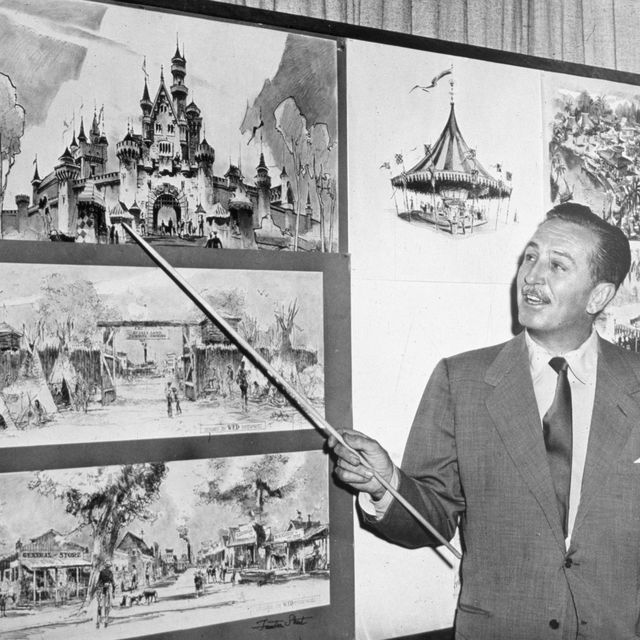
Here are seven facts you may not have known about both the man and the studio he created.
Mickey was almost named Mortimer
On a train ride following a less than fruitful business meeting in 1928, Disney, then only 27 years old, sketched a mouse. This mouse would eventually become the official mascot of a multinational corporation worth tens of billions of dollars, but Walt, of course, didn’t know this at the time. He called the sketch “Mortimer Mouse” and showed it to his wife, Lily. After deeming the name Mortimer much too pompous, Lily suggested giving the mouse a cuter name, such as Mickey. Thankfully, Walt agreed with her, and a star was born.
Disney was anti facial hair with one exception
It took almost 60 years, but, as of this year, employees at Walt Disney’s two U.S. theme parks can finally show up at work with a stylish beard or goatee (but only if they are “neat, polished, and professional,” according to the official memo). However, at Disneyland in the 50s and 60s, even guests with facial hair, not to mention longhaired hippies, were turned away, as they were told they unfortunately failed to meet the standards of Disneyland’s dress code. Even Jim McGuinn, the future frontman of The Byrds, was once denied admittance for sporting a provocative Beatle cut. The company eventually relented on this policy, though, and allowed all hirsute patrons to enjoy “The Happiest Place on Earth.” Now, the peculiar double standard: Think of any picture of Walt Disney that you have ever seen. What exists in almost all of them? A mustache.
The final words ever written by Disney were “Kurt Russell”
In 1966, as Disney was suffering from lung cancer and nearing the end of his life, he scrawled the name “ Kurt Russell ” on a piece of paper and died soon after. At the time, Russell was a child actor for the studio and had just signed a lengthy contract. To this day, no one knows what Disney meant or intended, including Russell himself.
Disney still has a home at Disneyland
During the construction of Disneyland in the 1950s, Disney moved into a one-bedroom apartment above the theme park’s Fire Station on Main Street in order to work and watch his dream come to life. The apartment still exists and has been left largely untouched. During his stay there, Disney lit a lamp in the window to alert the staff of his presence. This lamp is now permanently ablaze in his honor.
Don’t be surprised if you experience Disney déjà vu
When you first watched Disney’s Robin Hood , did you wonder if you had seen it all before? If so, there’s no need to worry. In 1915, an animation technique called rotoscoping was invented. This technique involves drawing over film footage of live actors, which allows animators to capture realistic human movement. It also lets animators recycle animated movements for use on characters in different films. So, the next time you watch Disney’s Robin Hood , just remember that large parts of it were, thanks to the studio’s use of rotoscoping, gathered from Snow White and the Seven Dwarfs , The Jungle Book , and The Aristocats .
Mickey and Minnie Mouse actually got married
Wayne Allwine and Russi Taylor are not well-known names, even among Disney aficionados, but their animated personas are seared into most people’s minds. In 1991, Allwine, who was the voice of Mickey Mouse for 32 years, married Taylor, the voice of Minnie Mouse, and the couple remained happily married until Allwine’s death in 2009.
Nobody, including Walt Disney, is perfect
While Disney was an innovative and successful man, he was also the subject of many controversies, most of which involved rumors that he was anti-Semitic and racist. These rumors were, and still are, hard to dispel. In the 1930s, Disney attended meetings of a pro-Nazi organization, the German American Bund. He also hosted a known Nazi propagandist and filmmaker, Leni Riefenstahl, and gave her a tour of Disney Studios. To make matters worse, Disney was also accused of perpetuating black stereotypes in his films. But, for all of his critics, Disney also had scores of supporters who claimed he was far from being either anti-Semitic or racist. The debate on Disney’s alleged discrimination and racism continues to this day.
Movies & TV
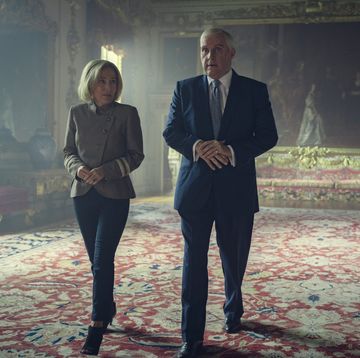
Real Espionage Helped Inspire ‘The Sympathizer’
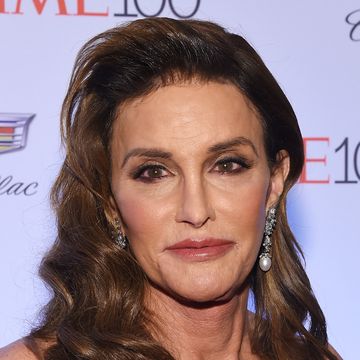
Caitlyn Jenner

The Real Royal Scheme Depicted in ‘Mary & George’

Taylor Tomlinson

Best Timothee Chalamet Movies
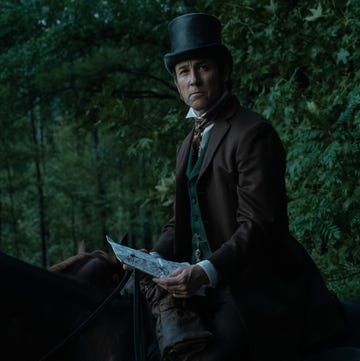
The Manhunt for John Wilkes Booth

The 2024 Oscar Winners and Nominees

Christopher Nolan
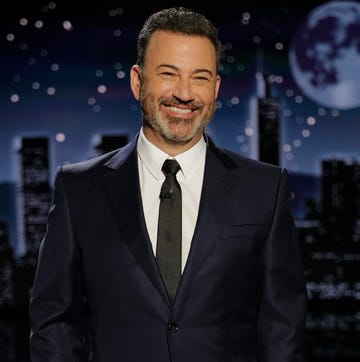
Jimmy Kimmel

Ava DuVernay

Martin Scorsese
- Locations and Hours
- UCLA Library
- Research Guides
Walt Disney
- Books: Searching
- Books: General Disney Histories and Studies
- Dissertations This link opens in a new window
- Newspapers This link opens in a new window
- Animals and Nature
- Animators and Creative Artists
- Business and Industry
- Class and Labor
- Family and Age
- Gender and Sexuality
- Imagineering and Theme Parks
- Race and Ethnicity
- Television and Streaming
- Theater (DTP)
- Special Collections and Archives
- Selected Physical Media at UCLA
- Selected Streaming Media
- Avalon - Audio Streaming at UCLA This link opens in a new window
- About Home Video (Disney+) This link opens in a new window
- Dissertations
- "Resurrecting Disney: Tracing Walt Disney‘s ever-present spirit in feature animated films of the Michael Eisner era (1984-2004)" / by Sara Gómez Alonso Dissertation, 2014. Tracing the always present spirit of Walt Disney in the animated films of the Michael Eisner era (1984-2004) try to define and analyze the characteristics, both with respect to the creative process and in the definition of contingut, integrated into the classic originals of Disney by, then, demonstrating that these will be recovered and implemented again after the death of Walt Disney -with their adaptations- by donating a place to a second age of animation.
- Walt Disney in the American grain / by William Irvin McReynolds Dissertation--Ph. D;. University of Minnesota 1971.
- The Secret Life of Walt Disney / Twenty Twenty Television for Channel 4 ; executive producer, Claudia Milne ; producers, Duncan Coates, Joseph Bullman ; director, Joseph Bullman. Editor, Tony Robinson; photography, Scott Marshall, Simon Bedford. Broadcast on Channel 4 in Great Britain. Record date: October 31, 1994. A look at the dark side of Walt Disney.
- Walt Disney / American Experience Films presents ; story by Sarah Colt & Tom Jennings ; telescript by Mark Zwonitzer ; produced and directed by Sarah Colt Walt Disney was uniquely adept at art as well as commerce, a master filmmaker who harnessed the power of technology and storytelling. This new film examines Disney's complex life and enduring legacy. Features rare archival footage from the Disney vaults, scenes from some of his greatest films, interviews with biographers and animators, and the designers who helped turn his dream of Disneyland into reality.
Selected Media: American Experience - Walt Disney (2015)
Walt Disney's Early Days (Dir. Sarah Colt, 2015)
UCLA students, staff, and faculty access through Kanopy . Log into the campus VPN or proxy server to view video.
Walt Disney's Legacy (Dir. Sarah Colt, 2015)
Selected Media: Walt Before Mickey (2015)
Walt Before Mickey (dir. Khoa Le, 2015)
- << Previous: Theater (DTP)
- Next: Special Collections and Archives >>
- Last Updated: Apr 16, 2024 10:40 AM
- URL: https://guides.library.ucla.edu/disney

Walt Disney, Biography
Walt’s optimism came from his unique ability to see the entire picture. His views and visions, came from the fond memory of yesteryear, and persistence for the future. Walt loved history. As a result of this, he didn’t give technology to us piece by piece, he connected it to his ongoing mission of making life more enjoyable, and fun. Walt was our bridge from the past to the future.
During his 43-year Hollywood career, which spanned the development of the motion picture industry as a modern American art, Walter Elias Disney established himself and his innovations as a genuine part of Americana.
Walt Disney in his office © Disney
A pioneer and innovator, and the possessor of one of the most fertile and unique imaginations the world has ever known. Walt Disney could take the dreams of America, and make them come true. He was a creator, a imaginative, and aesthetic person. Even thirty years after his death, we still continue to grasp his ideas, and his creations, remembering him for everything he’s done for us.
Later, after Walt’s birth, the Disney family moved to Marceline, Missouri. Walt lived out most of his childhood here. Walt had a very early interest in drawing, and art. When he was seven years old, he sold small sketches, and drawings to nearby neighbors. Instead of doing his school work Walt doodled pictures of animals, and nature. His knack for creating enduring art forms took shape when he talked his sister, Ruth, into helping him paint the side of the family’s house with tar.Walter Elias Disney was born on December 5, 1901 in Chicago Illinois, to his father, Elias Disney, an Irish-Canadian, and his mother, Flora Call Disney, who was of German-American descent. Walt was one of five children, four boys and a girl.
Close to the Disney family farm, there were Santa Fe Railroad tracks that crossed the countryside. Often Walt would put his ear against the tracks, to listen for approaching trains. Walt’s uncle, Mike Martin, was a train engineer who worked the route between Fort Madison, Iowa, and Marceline. Walt later worked a summer job with the railroad, selling newspapers, popcorn, and sodas to travelers.
During his life Walt would often try to recapture the freedom he felt when aboard those trains, by building his own miniature train set. Then building a 1/8-scale backyard railroad, the Carolwood Pacific or Lilly Bell.
Besides his other interests, Walt attended McKinley High School in Chicago. There, Disney divided his attention between drawing and photography, and contributing to the school paper. At night he attended the Academy of Fine Arts, to better his drawing abilities.
Walt discovered his first movie house on Marceline’s Main Street. There he saw a dramatic black-and-white recreation of the crucifixion and resurrection of Christ.
During these “carefree years” of country living young Walt began to love, and appreciate nature and wildlife, and family and community, which were a large part of agrarian living. Though his father could be quite stern, and often there was little money, Walt was encouraged by his mother, and older brother, Roy.
Even after the Disney family moved to Kansas City, Walt continued to develop and flourish in his talent for artistic drawing. Besides drawing, Walt had picked up a knack for acting and performing. At school he began to entertain his friends by imitating his silent screen hero, Charlie Chaplin. At his teachers invitation, Walt would tell his classmates stories, while illustrating on the chalk board. Later on, against his fathers permission, Walt would sneak out of the house at night to perform comical skits at local theaters.
During the fall of 1918, Disney attempted to enlist for military service. Rejected because he was under age, only sixteen years old at the time. Instead, Walt joined the Red Cross and was sent overseas to France, where he spent a year driving an ambulance and chauffeuring Red Cross officials. His ambulance was covered from stem to stern, not with stock camouflage, but with Disney cartoons.
Once he returned from France, he wanted to pursue a career in commercial art, which soon lead to his experiments in animation. He began producing short animated films for local businesses, in Kansas City. By the time Walt had started to create The Alice Comedies , which was about a real girl and her adventures in an animated world, Walt ran out of money, and his company Laugh-O-Grams went bankrupted. Instead of giving up, Walt packed his suitcase and with his unfinished print of The Alice Comedies in hand, headed for Hollywood to start a new business. He was not yet twenty-two.
The early flop of The Alice Comedies inoculated Walt against fear of failure; he had risked it all three or four times in his life. Walt’s brother, Roy O. Disney, was already in California, with an immense amount of sympathy and encouragement, and $250. Pooling their resources, they borrowed an additional $500, and set up shop in their uncle’s garage. Soon, they received an order from New York for the first Alice in Cartoonland(The Alice Comedies) featurette, and the brothers expanded their production operation to the rear of a Hollywood real estate office. It was Walt’s enthusiasm and faith in himself, and others, that took him straight to the top of Hollywood society.
Although, Walt wasn’t the typical Hollywood mogul. Instead of socializing with the “who’s who” of the Hollywood entertainment industry, he would stay home and have dinner with his wife, Lillian, and his daughters, Diane and Sharon. In fact, socializing was a bit boring to Walt Disney. Usually he would dominate a conversation, and hold listeners spellbound as he described his latest dreams or ventures. The people that where close to Walt were those who lived with him, and his ideas, or both.
On July 13, 1925, Walt married one of his first employees, Lillian Bounds, in Lewiston, Idaho. Later on they would be blessed with two daughters, Diane and Sharon . Three years after Walt and Lilly wed, Walt created a new animated character, Mickey Mouse.
Walt with many plush Mickey Mouse Dolls © Disney
His talents were first used in a silent cartoon entitled Plane Crazy . However, before the cartoon could be released, sound was introduced upon the motion picture industry. Thus, Mickey Mouse made his screen debut in Steamboat Willie, the world’s first synchronized sound cartoon, which premiered at the Colony Theater in New York on November 18, 1928. On December 21, 1937, Snow White and the Seven Dwarfs , the first full-length animated musical feature, premiered at the Carthay Theater in Los Angeles. The film produced at the unheard cost of $1,499,000 during the depths of the Depression, the film is still considered one of the great feats and imperishable monuments of the motion picture industry. During the next five years, Walt Disney Studios completed other full-length animated classics such as Pinocchio, Fantasia, Dumbo, and Bambi. Walt’s drive to perfect the art of animation was endless. Technicolor was introduced to animation during the production of his Silly Symphonies Cartoon Features. Walt Disney held the patent for Technicolor for two years, allowing him to make the only color cartoons. In 1932, the production entitled Flowers and Trees won Walt the first of his studio’s Academy Awards. In 1937, he released The Old Mill , the first short subject to utilize the multi-plane camera technique.
Walt rarely showed emotion, though he did have a temper that would blow over as it blew up. At home, he was affectionate and understanding. He gave love by being interested, involved, and always there for his family and friends. Walt’s daughter, Diane Disney Miller, once said:
Probably the most painful time of Walt’s private life, was the accidental death of his mother in 1938. After the great success of Snow White and the Seven Dwarfs, Walt and Roy bought their parents, Elias and Flora Disney, a home close to the studios. Less than a month later Flora died of asphyxiation caused by a faulty furnace in the new home. The terrible guilt of this haunted Walt for the rest of his life.
In 1940, construction was completed on the Burbank Studio, and Disney’s staff swelled to more than 1,000 artists, animators, story men, and technicians. Although, because of World War II 94 percent of the Disney facilities were engaged in special government work, including the production of training and propaganda films for the armed services, as well as health films which are still shown through-out the world by the U.S. State Department. The remainder of his efforts were devoted to the production of comedy short subjects, deemed highly essential to civilian and military morale.
Disney’s 1945 feature, the musical The Three Caballeros , combined live action with the cartoon animation, a process he used successfully in such other features as Song of the South and the highly acclaimed Mary Poppins . In all, more than 100 features were produced by his studio.
Walt’s inquisitive mind and keen sense for education through entertainment resulted in the award-winning True-Life Adventure series. Through such films as The Living Desert, The Vanishing Prairie, The African Lion, and White Wilderness, Disney brought fascinating insights into the world of wild animals and taught the importance of conserving our nation’s outdoor heritage.
Walt Disney on his trips through Disneyland © Disney
Walt Disney’s dream of a clean, and organized amusement park, came true, as Disneyland Park opened in 1955. As a fabulous $17-million magic kingdom, soon had increased its investment tenfold, and by the beginning of its second quarter-century, had entertained more than 200 million people, including presidents, kings and queens, and royalty from all over the globe.
Photographs on this page, © Disney

- $ 0.00 0 items
The 14 Best Books About Disney

Words cannot describe the indelible mark Disney has made on the world. From animation to theme parks, merchandise to multimedia, Disney is everywhere. But, perhaps the most effective, Disney has managed to triumph over our hearts.
Whether you’re looking for stories and history about Walt Disney himself or searching for insider info from a Disney cast member, we put together a list of the top 14 books about Disney that’ll keep your Disney fix alive and well for quite some time.
1. Who Was Walt Disney? by Whitney Stewart
It has been said, “There will never be another Walt Disney.” But, if you’ve ever hoped of keeping his legacy alive, Who Was Walt Disney is an essential kick starter. Geared toward young readers, this truncated yet comprehensive mini-biography reveals the rags-to-riches tale of the man behind the magic.
2. Walt Disney: The Triumph of an American Imagination by Neal Gabler
One of the most insightful books on the man, the myth, the legend…Walt Disney. Winner of the Los Angeles Times Book Prize for Biography, Neal Gabler’s magnum opus provides an in-depth glimpse into the life of America’s most beloved visionary. Take a journey through Uncle Walt’s imagination, stockpiled with dreams, disasters, achievements, and clandestine secrets.
3. The Nine Old Men: Lessons, Techniques, and Inspiration from Disney’s Great Animators by Andreas Deja
Do you love animation? Now you can learn from the best of the best. Walt Disney’s core animators, known as his “Nine Old Men,” created some of Disney’s most renowned works, altering the course of animation history forever. This clever cavalcade also helped define and refine the twelve basic principles of animation. Under their doctrine, follow Disney icon Andreas Deja as he presents lessons in drawing, story structure, technique, execution, and more. Each lesson will further broaden your creative perspective and expand your approach to character animation.
4. Ink & Paint: The Women of Walt Disney’s Animation by Mindy Johnson
Walt Disney transformed cartoons into masterworks. However, it would have never been made possible had it not been for the help of several gifted women. Focusing solely on talent, Disney summoned female artists to further develop his skill of storytelling. He invited and encouraged women to join the animation club for the first time in history. Featuring a multitude of private collections and accounts, as well as never-before-seen photography and artwork, this jubilant tribute redefines the history of animation, giving life to the integral artists whose contributions and history have laid dormant for far too long.
5. Walt Disney’s Disneyland by Chris Nichols
Once upon a time, Walt Disney dreamed of creating the ultimate entertainment epicenter. It would take countless artists, architects, and engineers to turn this dream into a reality. No one understands this better than award-winning writer Chris Nichols, author of Disneyland. Humbly providing a triumphant pictorial history, Nichols shares an endless score of documentation, private archives, and expertise to expose the enchanting tale of the happiest place on Earth.
6. Walt Disney Imagineering: A Behind the Dreams Look at Making the Magic Real by the Imagineers
7. walt disney imagineering: a behind the dreams look at making more magic real by the imagineers.
Each of these books is an attraction in and of themselves. Assembled with the same tender love and care as the parks themselves, these fully illustrated textual celebrations of imagination and technical knowhow provide readers with a lavish array of architectural drawings, character designs, models, and original artwork. If you love the parks, these are the books are for you!
8. One Little Spark!: Mickey’s Ten Commandments and The Road to Imagineering by Martin Sklar
Marty Sklar, former president of Walt Disney Imagineering, set out to create the Mouse Manifesto, Mickey’s Ten Commandments. This compilation of principles and philosophies would later be used as the ultimate code of standards for the creative organization. This book affords readers with insights and advice from Sklar, along with a myriad of Imagineers from around the world. If you ever wanted to spend a day in the life of a Disney Imagineer, now is your chance!
9. It’s Kind of a Cute Story by Rolly Crump
Full of panache, overflowing with whimsy and bursting with over 200 photos, It’s Kind of a Cute Story paints a vivid exploration of Rolly Crumps’ illustrious career as an Imagineer. Highlighting several accomplishments, including designing a plethora of Disney’s most famous attractions (The Haunted Mansion, Enchanted Tiki Room and Adventureland Bazaar), this colorful autobiography invites you to step into a cheerful narrative and take an unforgettable ride with a living legend.
10. The Haunted Mansion: Imagineering a Disney Classic by Jason Surrell
There is only one ride in all of Disney history that possesses the mystical powers to assemble such a devoted and spooktacular fandom: The Haunted Mansion. Laden with rare conceptual sketches and comprehensive architectural drawings, Jason Surrell captivates readers with ghoulish delight, as he sends you on a backstage tour, from inspiration to reality.
11. DisneyWar by James B. Stewart
Backstabbing and backtalk take center stage as DisneyWar showcases the heroic victories and catastrophic failures of Michael Eisner, Disney Chairman, and CEO. Warning: This book contains several seedy scandals that almost set America’s most powerful media and entertainment company ablaze.
12. The Ride of a Lifetime: Lessons Learned from 15 Years as CEO of the Walt Disney Company by Robert Iger
Indisputably one of the world’s most noteworthy CEOs, this memoir reveals valuable lessons in leadership, while delighting Disney fans and novices alike. This #1 New York Times Bestseller shines an introspective light on Iger’s guiding principles (optimism, courage, decisiveness, fairness), all of which can be attributed to his success.
13. Cleaning the Kingdom: Insider Tales of Keeping Walt’s Dream Spotless by Ken Pellman
If you’ve ever been to Disneyland you’ve probably noticed how everything is clean and pristine! Here is a little insider info for you…it takes more than just pixie dust to get the job done. Teeming with heartwarming triumphs and heartbreaking tragedies, this affectionate memoir follows the real eyes and ears of The Happiest Place On Earth and the lives of those who live to keep the magic alive for their guests: the world-famous Disneyland Custodial Team.
14. From Dreamer to Dreamfinder: A Life and Lessons Learned in 40 Years Behind a Name Tag by Ron Schneider
Filled with stories of pain and glory, former Disney cast member, Ron Schneider, gives you a behind-the-scenes tour through 40 years in the entertainment field with Disney, Universal, and Six Flags Magic Mountain. This intimate autobiography is chock-full of love, laughs, and the inside scoop on how the magic is made.
Product Categories Filter

- Search forums
- Disney Trip Planning Forums
- The College Board
Best Walt Disney biography?
- Thread starter BabyPiglet
- Start date May 1, 2009
DIS Veteran
- May 1, 2009
I'm looking for a good biography of Walt Disney to buy. Any suggestions?

splashmountain86
Mouseketeer.
-Rockettower Plaza-
Earning my ears.
splashmountain86 said: If you are looking for a very thorough biography, Neal Gabler's "Walt Disney: The Triumph of the American Imagination" should be PERFECT! It is quite long (880 pages ), but it is a very very very good account of Walt's life. I highly recommend it! Click to expand...
I should mention that I started the Gabler book but found it very dry. It was the first time that a writer has been given full access to the archives so it has details other books do not - however, the Disney family has come forward and expressed their dislike of the book because of incorrect information regarding the family life.
Do you have a favourite biography, Brenna?
- May 2, 2009
I read a biography that is endorsed by Disney. An American Original Walt Disney . I picked up this book at the end of my program in World of Disney. I couldn't put it down. I wrote a paper over the book and loved every minute of it. The book is 360 pages, so it is not a long read. I highly recommend this book!
Disney Girl
I agree, the biography by Bob Thomas is very good. He was the Disney family's personal biographer.
- May 5, 2009
Check out "How to be like Walt," I'm about a quarter through and I'm really enjoying it!
tortugapirate
- May 9, 2009
jusTine87 said: Check out "How to be like Walt," I'm about a quarter through and I'm really enjoying it! Click to expand...
Share this page
Dis news & updates.
- We Are Learning to Make Totchos from Woody's Lunch Box
- First Look: Loungefly Mickey & Friends Picnic Basket Mini Backpack
- Your Pro-Level Drawing Lesson for Moana, Belle & Pocahontas
- Let's Make Disney Cruise Line's Palo Chocolate Souffle
- Calling All Disney Pros: Test Your Disney Dog Knowledge Now!
New DISboards Threads
- Today at 2:26 AM
- Community Board
- Today at 12:47 AM
- Disney Cruise Line Forum
- Yesterday at 11:19 PM
- DVC-Mousecellaneous
- Yesterday at 9:09 PM
- Disney Addicted
- Yesterday at 8:29 PM
- Canadian Trip Planning & Community Board
- captain america 2003
- Disney Trip Reports

- Walt Disney World News
- Walt Disney World Articles
- Disney Cruise Line News
- Disneyland News
- General Disney News
Latest posts
- Latest: goopysolelady
- 1 minute ago
- Latest: schumigirl
- Latest: theluckyrabbit
- 4 minutes ago
- Latest: A Squared
- 21 minutes ago
- Latest: DodgerGirl
- 22 minutes ago
Biography of Walt Disney, Animator and Film Producer
Love of drawing, laugh-o-gram films, mickey mouse, sound and color, feature-length cartoons, union strikes, world war ii, more movies, plans for disneyland, disneyland opens, plans for walt disney world, florida.
Walt Disney (born Walter Elias Disney; December 5, 1901–December 15, 1966) was a cartoonist and entrepreneur who developed a multibillion-dollar family entertainment empire. Disney was the renowned creator of Mickey Mouse, the first sound cartoon, the first Technicolor cartoon, and the first feature-length cartoon. In addition to winning 22 Academy Awards in his lifetime, Disney also created the first major theme park: Disneyland in Anaheim, California.
Fast Facts: Walt Disney
- Known For: Disney was a pioneering animator and film producer who won 22 Academy Awards and built one of the largest media empires in the world.
- Born: December 5, 1901 in Chicago, Illinois
- Parents: Elias and Flora Disney
- Died: December 15, 1966 in Burbank, California
- Awards and Honors: 22 Academy Awards, Cecil B. DeMille Award, Hollywood Walk of Fame, Presidential Medal of Freedom, Congressional Gold Medal
- Spouse: Lillian Bounds (m. 1925-1966)
- Children: Diane, Sharon
Walt Disney was born the fourth son of Elias Disney and Flora Disney (née Call) in Chicago, Illinois, on December 5, 1901. By 1903, Elias, a handyman and carpenter, had grown weary of crime in Chicago; thus, he moved his family to a 45-acre farm he purchased in Marceline, Missouri. Elias was a stern man who administered “corrective” beatings to his five children; Flora soothed the children with nightly readings of fairy tales.
After the two eldest sons grew up and left home, Walt Disney and his older brother Roy worked on the farm with their father. In his free time, Disney made up games and sketched the farm animals. In 1909, Elias sold the farm and purchased an established newspaper route in Kansas City, where he moved his remaining family.
It was in Kansas City that Disney developed a love for an amusement park called Electric Park, which featured 100,000 electric lights illuminating a roller coaster, a dime museum, penny arcade, swimming pool, and a colorful fountain light show.
Rising at 3:30 a.m. seven days a week, 8-year-old Walt Disney and brother Roy delivered the newspapers, taking quick naps in alleyways before heading to Benton Grammar School. In school, Disney excelled in reading; his favorite authors were Mark Twain and Charles Dickens.
In art class, Disney surprised his teacher with original sketches of flowers with human hands and faces. After stepping on a nail on his newspaper route, Disney had to spend two weeks in bed recuperating. He spent his time reading and drawing newspaper-style cartoons.
Elias sold the newspaper route in 1917 and bought a partnership in the O-Zell Jelly factory in Chicago, moving Flora and Walt with him (Roy had enlisted in the U.S. Navy). Sixteen-year-old Walt Disney attended McKinley High School, where he became the school newspaper’s junior art editor. To pay for evening art classes at the Chicago Academy of Fine Arts, he washed jars in his father’s jelly factory.
Wanting to join Roy, who was fighting in World War I, Disney tried to join the Army but at age 16 he was too young. Undeterred, he joined the Red Cross’ Ambulance Corps, which took him to France and Germany.
After spending 10 months in Europe, Disney returned to the U.S. In October 1919, he got a job as a commercial artist at the Pressman-Rubin Studio in Kansas City. Disney met and became friends with fellow artist Ub Iwerks at the studio.
When Disney and Iwerks were laid off in January 1920, they formed Iwerks-Disney Commercial Artists. Due to a lack of clients, however, the duo only survived for about a month. After getting jobs at the Kansas City Film Ad Company as cartoonists, Disney and Iwerks began making commercials for movie theaters.
Disney borrowed a camera from the studio and began experimenting with stop-action animation in his garage. He shot footage of his animal drawings using different techniques until the pictures actually “moved” in fast and slow motion. His cartoons (which he called Laugh-O-Grams) eventually became superior to the ones he was working on at the studio; he even figured out a way to merge live action with animation. Disney suggested to his boss that they make cartoons, but his boss flatly turned down the idea, content with making commercials.
In 1922, Disney quit the Kansas City Film Ad Company and opened a studio in Kansas City called Laugh-O-Gram Films. He hired a few employees, including Iwerks, and sold a series of fairy tale cartoons to Pictorial Films in Tennessee.
Disney and his staff began work on six cartoons, each one a seven-minute fairy tale that combined live action and animation. Unfortunately, Pictorial Films went bankrupt in July 1923; as a result, so did Laugh-O-Gram Films.
Next, Disney decided he would try his luck at working in a Hollywood studio as a director and joined his brother Roy in Los Angeles, where Roy was recovering from tuberculosis.
Having no luck getting a job at any of the studios, Disney sent a letter to Margaret J. Winkler, a New York cartoon distributor, to see if she had any interest in distributing his Laugh-O-Grams. After Winkler viewed the cartoons, she and Disney signed a contract.
On October 16, 1923, Disney and Roy rented a room at the back of a real estate office in Hollywood. Roy took on the role of accountant and cameraman of the live action; a little girl was hired to act in the cartoons; two women were hired to ink and paint the celluloid, and Disney wrote the stories and drew and filmed the animation.
By February 1924, Disney had hired his first animator, Rollin Hamilton, and moved into a small storefront with a window bearing the sign “Disney Bros. Studio.” Disney’s "Alice in Cartoonland" reached theaters in June 1924.
In early 1925, Disney moved his growing staff to a one-story, stucco building and renamed his business “Walt Disney Studio.” Disney hired Lillian Bounds, an ink artist, and began dating her. On July 13, 1925, the couple married in her hometown of Spalding, Idaho. Disney was 24; Lillian was 26.
Meanwhile, Margaret Winkler also married, and her new husband, Charles Mintz, took over her cartoon distribution business. In 1927, Mintz asked Disney to rival the popular “Felix the Cat” series. Mintz suggested the name “Oswald the Lucky Rabbit” and Disney created the character and made the series.
In 1928, when costs became increasingly high, Disney and Lillian took a train trip to New York to renegotiate the contract for the popular Oswald series. Mintz countered with even less money than he was currently paying, informing Disney that he owned the rights to Oswald the Lucky Rabbit, and that he had lured most of Disney’s animators to come work for him.
Shocked, shaken, and saddened, Disney boarded the train for the long ride back. In a depressed state, he sketched a character and named him Mortimer Mouse. Lillian suggested the name Mickey Mouse instead.
Back in Los Angeles, Disney copyrighted Mickey Mouse and, along with Iwerks, created new cartoons with Mickey Mouse as the star. Without a distributor, though, Disney could not sell the silent Mickey Mouse cartoons.
In 1928, sound became the latest in film technology. Disney pursued several New York film companies to record his cartoons with this new novelty. He struck a deal with Pat Powers of Cinephone. Disney provided the voice of Mickey Mouse and Powers added sound effects and music.
Powers became the distributor of the cartoons and on November 18, 1928, "Steamboat Willie" opened at the Colon Theater in New York. It was Disney’s (and the world’s) first cartoon with sound. "Steamboat Willie" received rave reviews and audiences everywhere adored Mickey Mouse.
In 1929, Disney began making “Silly Symphonies,” a series of cartoons that included dancing skeletons, the Three Little Pigs, and characters other than Mickey Mouse, including Donald Duck, Goofy, and Pluto.
In 1931, a new film-coloring technique known as Technicolor became the latest in film technology. Until then, everything had been filmed in black and white. To hold off the competition, Disney paid to hold the rights to Technicolor for two years. He filmed a Silly Symphony titled "Flowers and Trees" in Technicolor, showing colorful nature with human faces, and the film won the Academy Award for Best Cartoon of 1932.
On December 18, 1933, Lillian gave birth to Diane Marie Disney, and on December 21, 1936, Lillian and Walt Disney adopted Sharon Mae Disney.
Disney decided to add dramatic storytelling to his cartoons, but making a feature-length cartoon had everyone (including Roy and Lillian) saying it would never work; they believed audiences just wouldn’t sit that long through a dramatic cartoon.
Despite the naysayers, Disney, ever the experimenter, went to work on the feature-length fairy tale "Snow White and the Seven Dwarfs." Production of the cartoon cost $1.4 million (a massive sum in 1937) and was soon dubbed “Disney’s Folly.”
When it premiered in theaters on December 21, 1937, though, "Snow White and the Seven Dwarfs" was a box office sensation. Despite the Great Depression, it earned $416 million.
A notable achievement in cinema, the movie won Disney an Honorary Academy Award. The citation read, "For 'Snow White and the Seven Dwarfs,' recognized as a significant screen innovation which has charmed millions and pioneered a great new entertainment field."
After the success of "Snow White," Disney constructed his state-of-the-art Burbank Studio, deemed a worker’s paradise for a staff of about 1,000 workers. The studio, with animation buildings, sound stages, and recording rooms, produced "Pinocchio" (1940), "Fantasia" (1940), "Dumbo" (1941), and "Bambi" (1942).
Unfortunately, these feature-length cartoons lost money worldwide due to the start of World War II. Along with the cost of the new studio, Disney found himself in debt. He offered 600,000 shares of common stock, sold at five dollars apiece. The stock offerings sold out quickly and erased the debt.
Between 1940 and 1941, movie studios began unionizing; it wasn’t long before Disney’s workers wanted to unionize as well. While his workers demanded better pay and working conditions, Disney believed that his company had been infiltrated by communists.
After numerous and heated meetings, strikes, and lengthy negotiations, Disney finally became unionized. However, the whole process left Disney feeling disillusioned and discouraged.
With the union question finally settled, Disney was able to turn his attention back to his cartoons; this time for the U.S. government. The United States had joined World War II after the bombing of Pearl Harbor and it was sending millions of young men overseas to fight.
The U.S. government wanted Disney to produce training films using his popular characters ; Disney obliged, creating more than 400,000 feet of film (about 68 hours).
After the war, Disney returned to his own agenda and made "Song of the South" (1946), a movie that was 30 percent animation and 70 percent live action. "Zip-A-Dee-Doo-Dah" was named the best movie song of 1946 by the Academy of Motion Picture Arts & Sciences, while James Baskett, who played the character of Uncle Remus in the movie, won an Oscar.
In 1947, Disney decided to make a documentary about Alaskan seals titled "Seal Island" (1948). It won an Academy Award for best two-reel documentary. Disney then assigned his top talent to make "Cinderella" (1950), "Alice in Wonderland" (1951), and "Peter Pan" (1953).
After building a train to ride his two daughters around his new home in Holmby Hills, California, Disney began formulating a dream in 1948 to build Mickey Mouse Amusement Park across the street from his studio. He visited fairs, carnivals, and parks around the world to study the choreography of people and attractions.
Disney borrowed on his life insurance policy and created WED Enterprises to organize his amusement park idea, which he was now referring to as Disneyland. Disney and Herb Ryman drew out the plans for the park in one weekend. The plan included an entrance gate to "Main Street" that would lead to Cinderella’s Castle and off to different lands of interest, including Frontier Land, Fantasy Land, Tomorrow Land, and Adventure Land.
The park would be clean and innovative, a place where parents and children could have fun together on rides and attractions; they would be entertained by Disney characters in the “happiest place on earth.”
Roy visited New York to seek a contract with a television network. Roy and Leonard Goldman reached an agreement where ABC would give Disney a $500,000 investment in Disneyland in exchange for a weekly Disney television series.
ABC became a 35 percent owner of Disneyland and guaranteed loans up to $4.5 million. In July 1953, Disney commissioned the Stanford Research Institute to find a location for his (and the world’s) first major theme park. Anaheim, California, was selected since it could easily be reached by freeway from Los Angeles.
Previous movie profits were not enough to cover the cost of building Disneyland, which took about a year to build at a cost of $17 million. Roy made numerous visits to the Bank of America's headquarters to secure more funding.
On July 13, 1955, Disney sent out 6,000 exclusive guest invitations, including to Hollywood movie stars, to enjoy the opening of Disneyland. ABC sent cameramen to film the opening. However, many tickets were counterfeited and 28,000 people showed up.
Rides broke down, food stands ran out of food, a heat wave caused freshly poured asphalt to capture shoes, and a gas leak caused temporary closings in a few themed areas.
Despite the newspapers referring to this cartoon-ish day as "Black Sunday," guests from all over the world loved it and the park became a major success. Ninety days later, the one-millionth guest passed through the park's turnstile.
In 1964, Disney’s "Mary Poppins" premiered; the film was nominated for 13 Academy Awards. With this success, Disney sent Roy and a few other Disney executives to Florida in 1965 to purchase land for another theme park.
In October 1966, Disney gave a press conference to describe his plans for building an Experimental Prototype Community of Tomorrow (EPCOT) in Florida. The new park would be five times the size of Disneyland, and it would include shopping, entertainment venues, and hotels.
The new Disney World development would not be completed, however, until five years after Disney’s death. The new Magic Kingdom (which included Main Street USA; Cinderella's Castle leading to Adventureland, Frontierland, Fantasyland, and Tomorrowland) opened on October 1, 1971, along with Disney's Contemporary Resort, Disney's Polynesian Resort, and Disney's Fort Wilderness Resort & Campground. EPCOT, Walt Disney’s second theme park vision, which featured a future world of innovation and a showcase of other countries, opened in 1982.
In 1966, doctors informed Disney that he had lung cancer. After having a lung removed and several chemotherapy sessions, Disney collapsed in his home and was admitted to St. Joseph’s Hospital on December 15, 1966. He died at 9:35 a.m. from an acute circulatory collapse and was buried at Forest Lawn Memorial Park in Glendale, California.
Disney left behind one of the largest media empires in the world. Since his death, the Walt Disney Company has only grown; today, it employs more than 200,000 people and generates billions in revenue each year. For his artistic achievements, Disney amassed 22 Oscars and numerous other honors. In 1960, he was given two stars on the Hollywood Walk of Fame (one for his film and one for his television work).
- David, Erica, and Bill Robinson. "Disney." Random House, 2015.
- "The Disneyland Story." Walt Disney Productions, 1985.
- The History of Warner Bros. Animation
- The Top 50 Cartoon Characters of All Time
- The History of Hollywood's Major Movie Studios
- The Life of Bela Lugosi: Hollywood's Most Famous Dracula
- Biography of Cesar Romero, Batman's Original Joker
- The Most Important Movies of the 1950s
- What Is a Movie Palace?
- Biography of Roddy McDowall, Planet of the Apes Star
- What's the Deal with Walley World?
- Biography of Jack Palance, Action Movie Star and Onscreen Villain
- The Animated Movies of 2014
- Biography of Moe Howard, Leader of the Three Stooges
- Katharine Hepburn Biography: Classic Hollywood's Independent Star
- Review of Idina Menzel's "Let It Go"
- 8 Classic Historical Epic Movies
- The 15 Most Important Movies of the 1960s
Gear-obsessed editors choose every product we review. We may earn commission if you buy from a link. Why Trust Us?
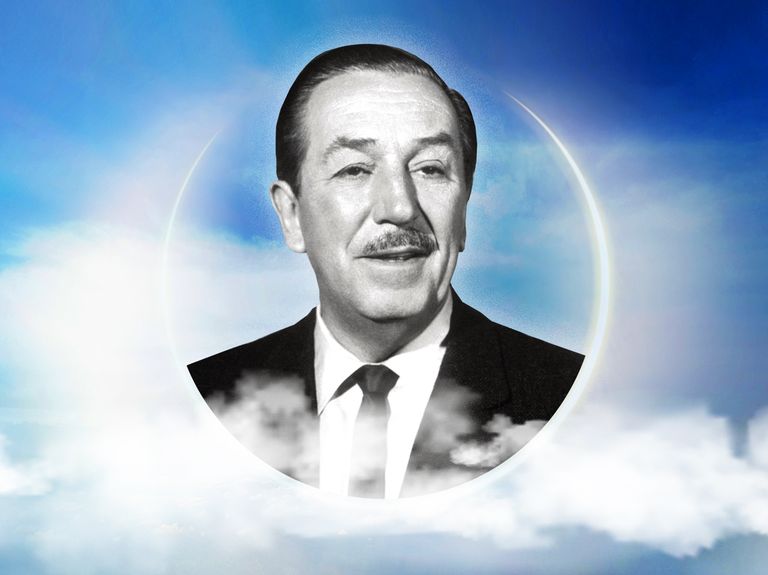
The Truth About Walt Disney’s Frozen Head and His Quest to Live Forever
He imagined the world of tomorrow. Fifty-seven years after his death, could he come back to life in the future he envisioned?
Sixty years ago this month, on April 22, 1964, the New York World’s Fair opened in Flushing Meadows–Corona Park in Queens, New York. The Fair had the theme of “Peace Through Understanding,” and was dedicated to “Man’s Achievement on a Shrinking Globe in an Expanding Universe,” as symbolized by the 140-foot-tall stainless-steel globe, known as the “Unisphere,” that towered over a massive reflecting pool.
The 1964 World’s Fair wasn’t the first one held in Flushing Meadows; the Unisphere was built on the same ground once occupied by the similarly spherical “Perisphere,” which was constructed for the 1939 World’s Fair. To kick off the 1964 Fair, President Lyndon B. Johnson delivered opening remarks that evoked the ‘39 edition, which imagined the 1960s of the future:
“The last time New York had a World’s Fair, we also tried to predict the future. A daring exhibit proclaimed that in the 1960s, it would really be possible to cross the country in less than 24 hours, flying as high as 10,000 feet; that an astounding 38 million cars would cross our highways. There was no mention of outer space, or atomic power, or wonder drugs that could destroy disease.”
But Johnson’s reflections on human progress weren’t all positive. “No one prophesied that half the world would be devastated by war, or that millions of helpless would be slaughtered,” the President noted, just months after he approved the controversial National Security Action Memorandum 288 escalating the U.S.’s involvement in the Vietnam War. “No one foresaw power that was capable of destroying man, or a cold war which could bring conflict to every continent.”
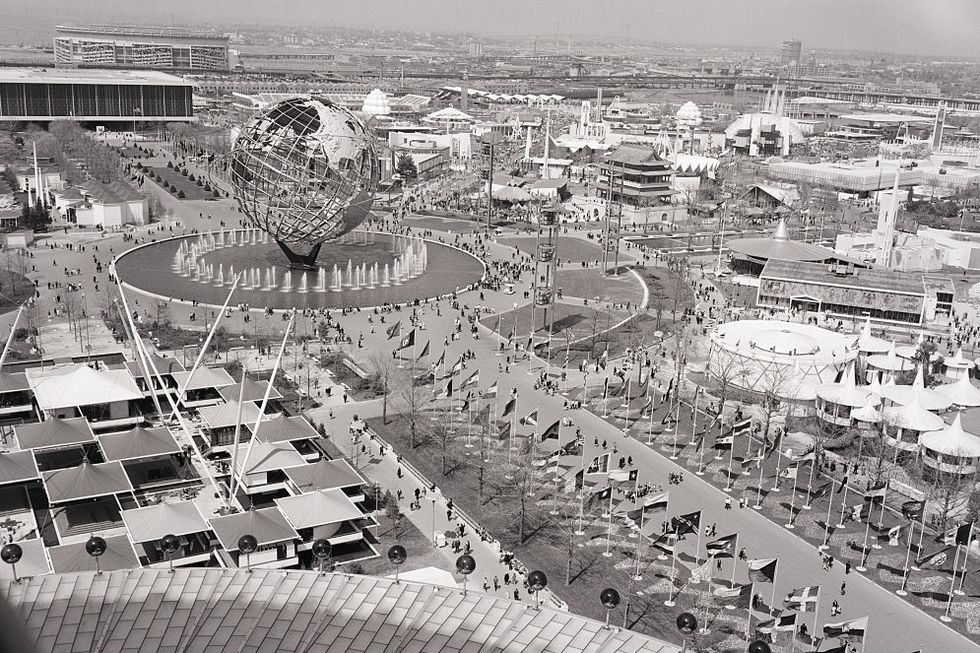
Johnson’s presence at the 1964 World’s Fair underscored the somber reality facing America at the time. After all, an assassin’s bullet killed the intended speaker, his predecessor, John F. Kennedy , thrusting him—a representative of Washington D.C.’s “old guard”—into the role intended for JFK, a symbol of the “New Frontier.”
So, who could Fair attendees turn to for hopeful visions of “Peace Through Understanding,” and “Man’s Achievement on a Shrinking Globe”? Only one man: Walt Disney .
Disney, who had been a weekly presence in American homes for the last decade through his television show, Walt Disney’s Disneyland— later titled Walt Disney Presents —created four attractions for the ‘64 World’s Fair. These exhibits were a hit, drawing 135,000 visitors per day during the first season alone, according to The Walt Disney Family Museum .
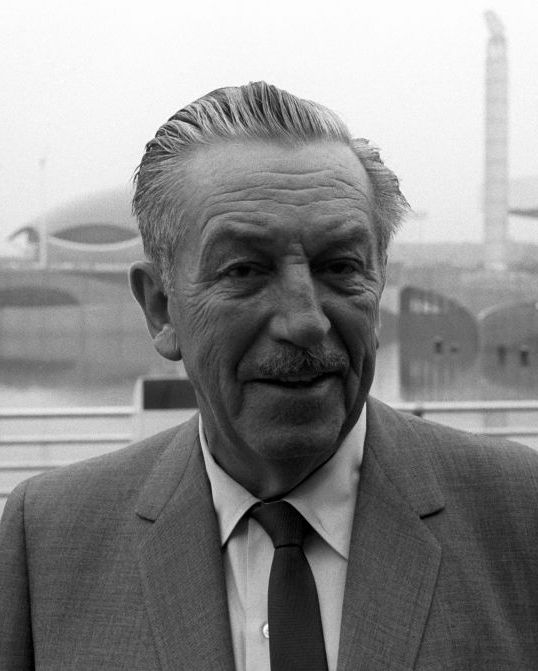
Disney’s attractions included “Great Moments with Mr. Lincoln” at the Illinois Pavilion, an animatronic replica of another President who represented hope, and who was also assassinated ; “Ford’s Magic Skyway” for the Ford Motor Company, where guests rode in Ford vehicles past animatronic dinosaurs; and the now-iconic “it’s a small world,” which Disney’s Imagineers built in collaboration with Pepsi-Cola as a tribute to UNICEF.
But it was the “Carousel of Progress,” located in General Electric’s “Progressland” pavilion, that most epitomized Walt Disney’s vision of the future. The rotating animatronic show guided audiences through the history of human innovation and provided a comforting escape with its optimistic theme song by the Sherman Brothers , promising, “There’s a great, big, beautiful tomorrow/Shining at the end of every day.”
In the aftermath of a national tragedy, Walt Disney became a beacon of optimism for fairgoers, and for Americans. His presence fostered a belief in a “great big beautiful tomorrow.”
Perhaps it’s that enduring optimism that fuels the persistent conspiracy that Disney, who died in 1966, might still be among us, secretly preserved in hopes of one day being revived.
The “Final” Years of Walt Disney
In 1964, besides contributing to the World’s Fair, Disney also released his most acclaimed live-action film yet: Mary Poppins . Just a few years earlier, during a screening of To Kill a Mockingbird , Disney had reportedly lamented , “That’s the kind of film I’d like to make, but I can’t.” Now, his tender musical adaptation of P.L. Travers ’ novel had achieved the same milestone as Universal’s adaptation of Harper Lee ’s seminal work: a nomination for Best Picture at the Academy Awards.
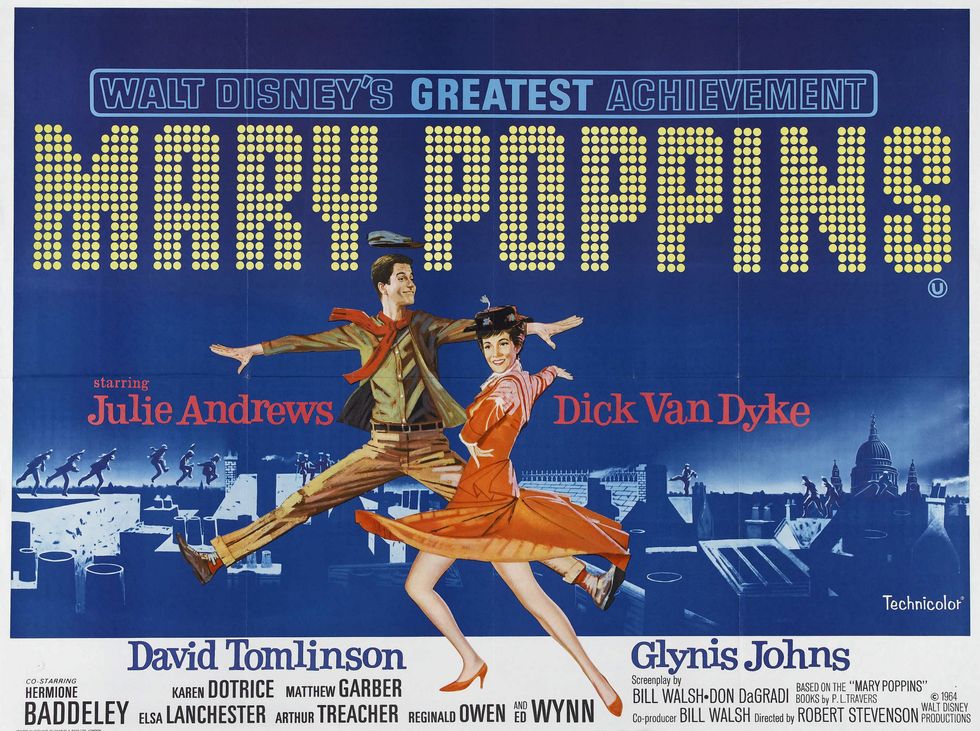
With his status finally solidified in the entertainment industry, Disney turned his sights to the future—not of his film studio, but of humanity. Intent on using his renowned imagination to forge a brighter tomorrow, Disney envisioned a utopia designed to last forever. In 1964, the future looked bright for Walt Disney.
In less than three years, he would be dead.
On December 15, 1966, Walt Disney died as a result of complications from lung cancer. As Biography notes , “a private funeral was held the next day, and on December 17, his body was cremated and interred at Forest Lawn Memorial Park in Glendale, California.”
Some conspiracy theorists, however, believe that Disney’s remains aren’t actually at Forest Lawn. They’ll tell you, according to Biography , that Disney’s body is instead “suspended in a frozen state and buried deep beneath the Pirates of the Caribbean ride at Disneyland in Anaheim, California, awaiting the day when medical technology would be advanced enough to reanimate the animator.”
Why Do People Believe Walt Disney Is Frozen?
The rumored cryonic freezing of Walt Disney has no clear origin point that Biography could confirm . But its first documented mention is in a 1969 Ici Paris article, reportedly as a prank concocted by “disgruntled animators” who once worked for Disney “seeking to have a laugh at their late taskmasker employer’s expense.” Their motive was seemingly revenge for Disney’s strict oversight, an aftermath of a labor uprising in the late 1930s that is chronicled in depth in The Disney Revolt: The Great Labor War of Animation’s Golden Age .
Initially, whispers suggested Disney’s entire body was preserved in a secret facility, but soon the tale focused on the animator’s head alone, frozen beneath iconic Disneyland attractions like Pirates of the Caribbean, the Matterhorn, the Partners statue at the center of the park, and even the Magic Kingdom castle. Over time, it seems every corner of Disneyland has been rumored to shelter its founder’s frozen head.
The notion of Walt Disney’s icy remains hiding within park attractions might stem from the actual secrets of Disneyland. There is indeed a hidden space at the top of the Matterhorn, but it’s home to a basketball court for bored Disney staff, not a frozen former CEO. And while early versions of Pirates of the Caribbean did feature real skeletons from UCLA’s medical school, according to SFGate , none belonged to Disney himself.
The grim idea that only Walt Disney’s head was placed in cryostasis might have caught on due to its eerie, sci-fi feel, with modern cryonics offering both full-body and head-only preservation options. That singular detail adds a creepy wrinkle to the conspiracy, evoking images more akin to the 1962 horror flick The Brain That Wouldn’t Die than the reality of a Hollywood mogul’s legacy.
Nevertheless, the tale of Walt Disney’s “frozen head” persisted, specifically resurfacing in two biographies released years after his death: Leonard Mosely’s 1986 Disney’s World and Marc Eliot’s 1993 Walt Disney: Hollywood’s Dark Prince , which further embedded the legend into popular culture.
Eliot’s controversial biography, which was criticized by Disney’s family and historians alike for its speculative content, included unfounded allegations against Disney, including claims that he was an FBI informant (which evidence suggests he was not ), and that he refused to have flags at half mast at Disneyland when JFK died (which photographic evidence disproves ). Nevertheless, Hollywood’s Dark Prince fed into a desire to find the dark side of a man often propped up as the symbol of Americana, pushing both the cryonics rumor and the assertions of Disney’s rampant antisemitism (also notably debunked ) into the mainstream.
Disney’s family has firmly denied the rumor that he was cryogenically frozen, and as Biography points out, it has been “further discredited by those pointing to the existence of signed legal documents that indicate Disney was in fact cremated and that his remains are interred in a marked plot (for which his estate paid $40,000) at Forest Lawn, the exact location of which is a matter of public record.” Plus, the first instance of a person being cryopreserved after his death, James Bedford , didn’t occur until nearly a month after Disney’s cremation, debunking the timeline of the rumor that Disney was frozen.
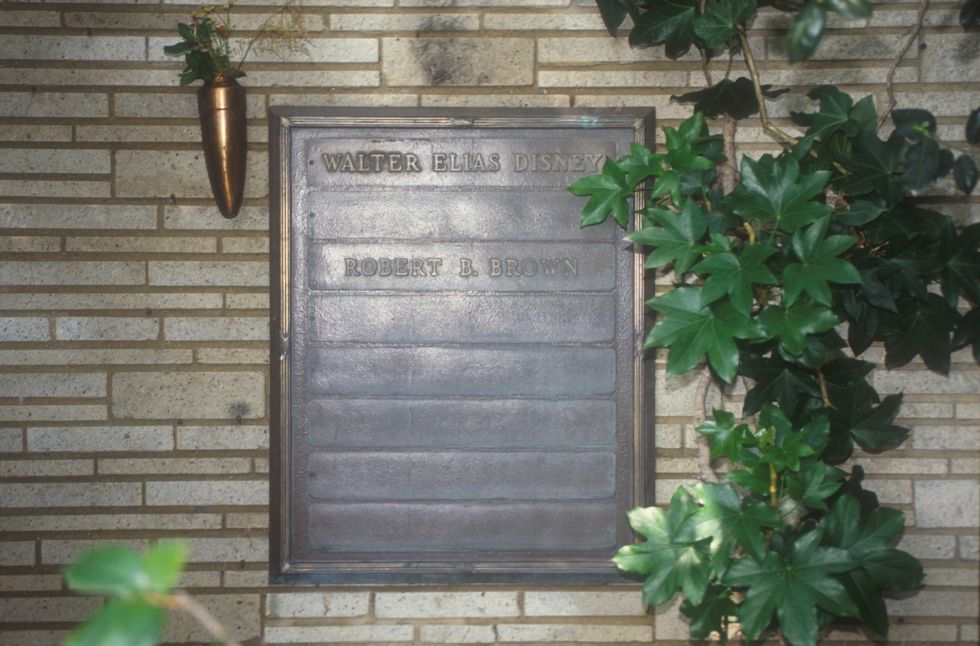
Diane Disney, Walt’s daughter, wrote in a 1972 biography about her famous father that she “doubted her father had even heard of cryonics.”
Nonetheless, even skeptics who reject the frozen head story might concede that Walt Disney, a famously forward-thinking futurist, could have been aware of cryonics. The concept gained attention in 1964, the same year Disney shifted his focus from film to envisioning his utopian future.
The Futurist Who Inspired Walt Disney
If you were browsing the “New Releases” shelf at a bookstore in 1964, you might stumble upon an intriguing non-fiction book in between copies of Ernest Hemingway’s A Moveable Feast and the Warren Commission’s The Warren Report : Robert Ettinger’s The Prospect of Immortality .
“Most of us now living have a chance for personal, physical immortality,” Ettinger claims in the very first sentence. All you need to do, Ettinger says, is join one “established fact” with one “reasonable assumption.”
The fact: “At very low temperatures it is possible, right now, to preserve dead people with essentially no deterioration, indefinitely.”
The assumption: “If civilization endures, medical science should eventually be able to repair almost any damage to the human body, including freezing damage and senile debility or other cause of death.”
Six decades later, while we haven’t mastered the art of repairing all human body damage, our cryopreservation methods have advanced significantly, particularly with the introduction of vitrification by Greg Fahy and William F. Rall in the 1980s. And recent scientific advancements suggest that what we currently understand as death might be more reversible than previously thought.
Some excerpts from Ettinger’s book resonate with the futuristic optimism of Walt Disney’s Tomorrowland. For example, Ettinger writes,“If civilization endures ... if the Golden Age materializes, the future will reveal a wonderful world indeed, a vista to excite the mind and thrill the heart.” However, even if Disney had encountered Ettinger’s work, his imagination had already been sparked by another piece of literature before he died.
In May 1960, Horizon magazine published “Out of a Fair, a City,” an article in which architect Victor Gruen envisioned transforming the 1964 World’s Fair site into a domed city to test solutions for societal challenges. According to Imagineer Marty Sklar’s 1999 book, Remembering Walt , Gruen’s philosophy (further elaborated in Gruen’s 1964 work, “The Heart of our Cities: The Urban Crisis, Diagnosis and Cure,”) was a significant influence on Disney during his final years—so much that he began an ambitious plan to build a community in Florida that would “never cease to be a living blueprint of the future.”
Disney, utilizing land his corporation discreetly bought in Florida, set out to build an “Experimental Prototype Community of Tomorrow” adjacent to his planned East Coast theme park. The community aimed to eliminate traffic jams, offer abundant green spaces, and showcase efficient public transportation with the use of a monorail system.
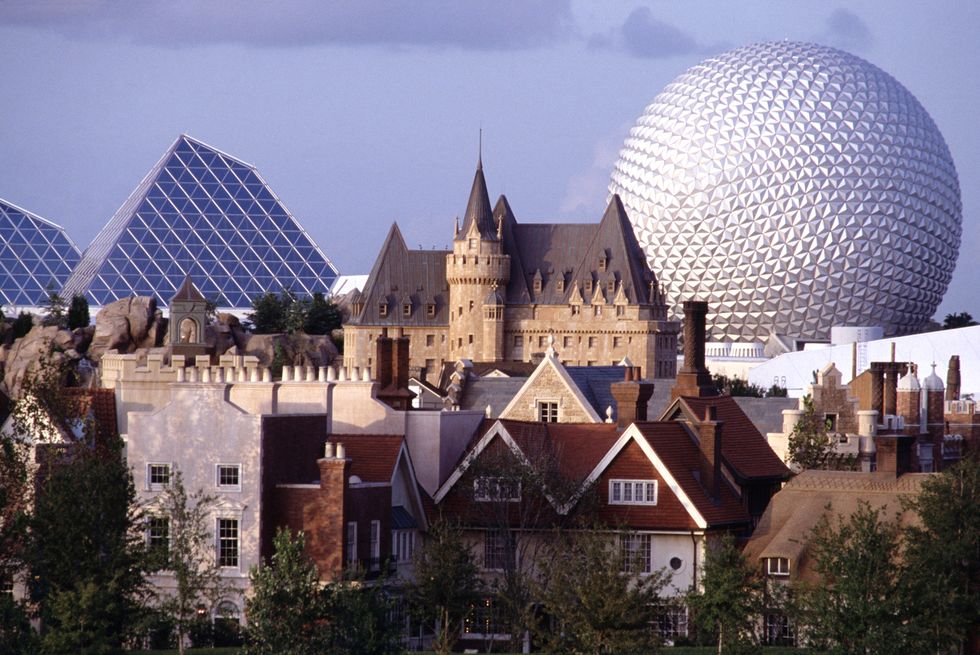
After Walt Disney’s death, the Florida land earmarked for his future city was transformed into EPCOT, the second theme park at Walt Disney World Resort. EPCOT features a “Future World” section with educational attractions and a World Showcase with international pavilions, operating as a “perpetual World’s Fair.”
Why People Want To Believe Walt Disney Is Frozen
In his last years, Walt Disney was introspective, focusing not on the “prospect of immortality,” but on a different sentiment. While the 1964 song “Great Big Beautiful Tomorrow” planted the seed in millions of young minds, it was another tune by the Sherman Brothers from the same year that resonated deeply with Disney as he reflected on his life. Richard Sherman recalls :
“On Fridays, after work, Walt Disney would often invite us into his office and we’d talk about things that were going on at the Studio. After a while, he’d wander to the north window, look out into the distance and just say, 'Play it.' And Dick would wander over to the piano and play 'Feed the Birds' for him. One time just as Dick was almost finished, under his breath, I heard Walt say, 'Yep. That’s what it’s all about.'”
There is little left of the 1964 New York World’s Fair in Flushing Meadows—Corona Park. The spot where the “Carousel of Progress” once played in GE’s Progressland is now an athletic field. The Vatican pavilion has been replaced by a stone bench. The Unisphere, however, still remains, towering over a park whose occupants have little memory, or even awareness, of the “Great Big Beautiful Tomorrow” promised at the park 60 years ago.

For the Baby Boomers who experienced Disney’s contributions to the 1964 World’s Fair, the event offered hope and a last optimistic vision of the future from “Uncle Walt.” And while today, these visitors can encounter preserved pieces of the Fair at the Queens Museum and experience “it’s a small world” at Disney parks worldwide, they can’t turn that athletic field back into Progressland. And they can’t bring back the man who made it possible.
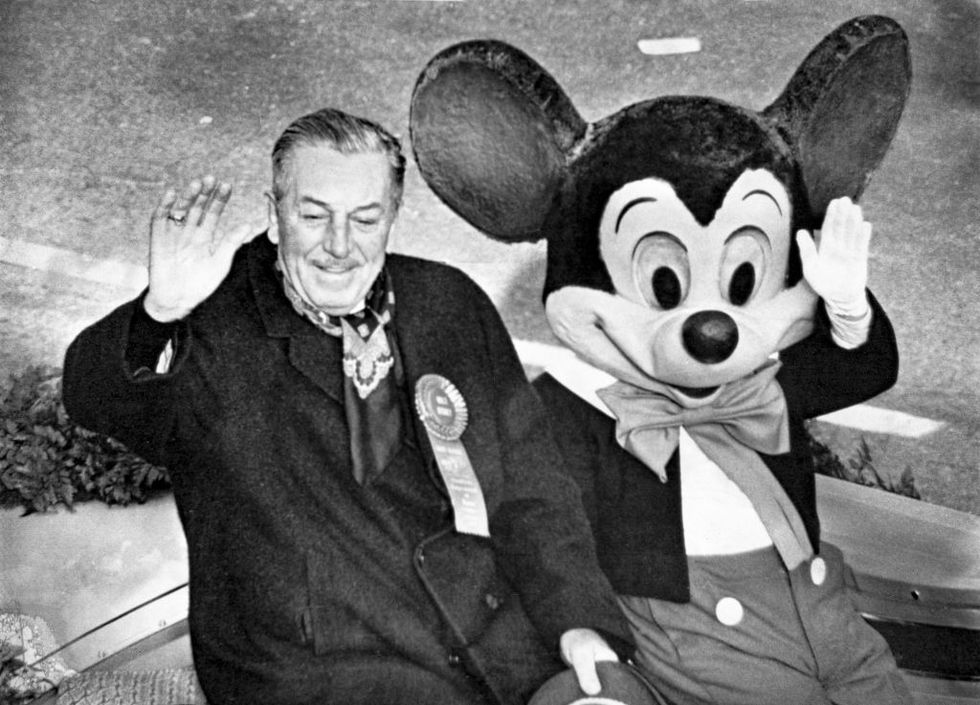
Walt Disney’s legacy extends far beyond his films and theme parks. He symbolizes something greater than a sprawling entertainment empire. As biographer Neal Gabler put it in the final pages of Walt Disney: The Triumph of the American Imagination , “he demonstrated how one could assert one’s will on the world at the very time when everything seemed to be growing beyond control and beyond comprehension.”
For conspiracy theorists who want to believe Walt Disney is a frozen head, waiting for revival, perhaps it’s because they want to believe he asserted his will over the one thing no one has been able to do before. That maybe, “if the Golden Age materializes,” Walt Disney could even come back to life. And with him would come, once again, the promise of a “Great Big Beautiful Tomorrow.” A promise he made in Queens 60 years ago.
Michael Natale is the news editor for Best Products , covering a wide range of topics like gifting, lifestyle, pop culture, and more. He has covered pop culture and commerce professionally for over a decade. His past journalistic writing can be found on sites such as Yahoo! and Comic Book Resources , his podcast appearances can be found wherever you get your podcasts, and his fiction can’t be found anywhere, because it’s not particularly good.

.css-cuqpxl:before{padding-right:0.3125rem;content:'//';display:inline;} Pop Mech Pro .css-xtujxj:before{padding-left:0.3125rem;content:'//';display:inline;}

A New Hypersonic Missile Will Give the F-35 Fangs

The Navy’s New Drone Could Turn into a Ship-Killer

The CIA’s Secret Plan to Turn Psychics Into Spies

Is This the Real Iceberg That Sank the Titanic?

A Barrage of Missiles Met Resistance Over Israel

The Navy's New Frigates Are Behind Schedule

Stand-by Power: Eco Flow’s Smart Home Panel 2
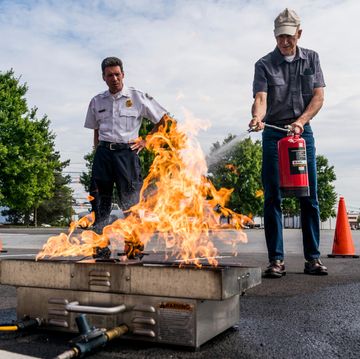
The Right Way to Use a Fire Extinguisher

The Universe Could Be Eternal, This Theory Says

The Pentagon Created a New Underwater Predator

The U.S. Has Built an Unstoppable Microwave Weapon

IMAGES
VIDEO
COMMENTS
Walt Disney: The Triumph of the American Imagination by Neal Gabler. Walt Disney was a true visionary whose desire for escape, iron determination, and obsessive perfectionism transformed animation from a novelty to an art form, first with Mickey Mouse and then with his feature films - most notably Snow White, Fantasia, and Bambi.
The book Walt Disney: Magician of the Movies was released in 1966 from Grosset and Dunlap as part of its "Pioneer Books" series of children's biographies. It was the first children's ...
Walt Disney: The Triumph of the American Imagination by Neal Gabler (Affiliate Link). Description: At over 900 pages and with accolades including Winner of the Los Angeles Times Book Prize for Biography and USA Today Biography of the Year, this is the definitive biography of Walt Disney.But be warned—if you're looking for a book that glosses over some of the less magical aspects of Walt ...
Walt Disney (born December 5, 1901, Chicago, Illinois, U.S.—died December 15, 1966, Los Angeles, California) was an American motion-picture and television producer and showman, famous as a pioneer of animated cartoon films and as the creator of such cartoon characters as Mickey Mouse and Donald Duck.He also planned and built Disneyland, a huge amusement park that opened near Los Angeles in ...
Walter Elias "Walt" Disney co-founded Walt Disney Productions with his brother Roy, which became one of the best-known motion-picture production companies in the world. Disney was an innovative ...
The Disney Story: Chronicling the Man, the Mouse, and the Parks. With a decade-by-decade look into Walt and the parks, The Disney Story: Chronicling the Man, the Mouse, and the Parks tells all ...
Walt Disney: An American Original by Bob Thomas was originally published in 1976 but remains in print due to its balance and accuracy of information, making it one of the best biographies about Walt Disney. This reprinted commemorative edition tells the life story of Walt Disney and includes rare photographs to complement the text.
His fourth book, Walt Disney: The Triumph of the American Imagination, a New York Times best-seller, was named the biography of the year by USA Today and won Mr. Gabler his second Los Angeles Times Book Prize. It was also the runner-up for the prestigious Kraszna-Krausz Book Award in England.
Women of Walt Disney Imagineering: 12 Careers, 12 Theme Parks, Countless Stories by Ginger Zee. This is a collection of stories from twelve women who worked in Imagineering for decades. They discuss the problems familiar to women in a male-dominated workplace and what it was like to work for Disney in a period of rapid expansion.
Early life Disney's childhood home. Disney was born on December 5, 1901, at 1249 Tripp Avenue, in Chicago's Hermosa neighborhood. He was the fourth son of Elias Disney—born in the Province of Canada, to Irish parents—and Flora (née Call), an American of German and English descent. Aside from Walt, Elias and Flora's sons were Herbert, Raymond and Roy; and the couple had a fifth ...
If you are looking for an interesting biography of Walt Disney, you may want to read Walt Before Mickey Disney's Early Years, 1919-1928 by Timothy S. Susanin. Most Disney biographies start with the production of Steamboat Willie in 1928. This book covers Walt's life from this early period, as well as his early experiments with animation.
Walt Disney was a true visionary whose desire for escape, iron determination and obsessive perfectionism transformed animation from a novelty to an art form, first with Mickey Mouse and then with his feature films-most notably Snow White, Fantasia, and Bambi. In his superb biography, Neal Gabler shows us how, over the course of two decades ...
Walt Disney: An American Original: Commemorative Edition - This is the best biography about Walt Disney reissued for Disney100 and expanded via essays and introductions by four excellent authors of other Disney books. The endnotes are what justifies paying a premium for this newer edition, as those add ~25 pages of additional context and ...
LIFE Walt Disney: From Mickey to the Magic Kingdom by LIFE Special. LIFE Magazine has followed Walt Disney's career since the very beginning and in this all-new special edition, LIFE revisits both the man and the magic. It is a beautiful tribute to Walt Disney. Quotable Walt Disney by Dave Smith. Fans of Walt Disney love to quote him.
Walt Disney Biography. Walt Disney (1901 - 1966) was a film producer, media magnate and co-founder of the Walt Disney Company. He was an iconic figure in the Twentieth Century media and entertainment industry, helping to produce many films. With his staff, he created famous cartoon characters, such as Mickey Mouse and Donald Duck; his name ...
Walt Disney. Producer: Snow White and the Seven Dwarfs. Walter Elias Disney was born on December 5, 1901 in Chicago, Illinois, the son of Flora Disney (née Call) and Elias Disney, a Canadian-born farmer and businessperson. He had Irish, German, and English ancestry. Walt moved with his parents to Kansas City at age seven, where he spent the majority of his childhood. At age 16, during World ...
In 1966, as Disney was suffering from lung cancer and nearing the end of his life, he scrawled the name " Kurt Russell " on a piece of paper and died soon after. At the time, Russell was a ...
The Animated Man: A Life of Walt Disney by Michael Barrier. ISBN: 9780520241176. Date: 2007-04-30. In his new biography, noted animation historian Michael Barrier avoids the well-traveled paths of previous biographers, who have tended to portray a blemish-free Disney or to indulge in lurid speculation. Instead, he takes the full measure of the ...
Walt Disney's dream of a clean, and organized amusement park, came true, as Disneyland Park opened in 1955. As a fabulous $17-million magic kingdom, soon had increased its investment tenfold, and by the beginning of its second quarter-century, had entertained more than 200 million people, including presidents, kings and queens, and royalty from all over the globe.
5. Walt Disney's Disneyland by Chris Nichols. Once upon a time, Walt Disney dreamed of creating the ultimate entertainment epicenter. It would take countless artists, architects, and engineers to turn this dream into a reality. No one understands this better than award-winning writer Chris Nichols, author of Disneyland.
Feb 22, 2009. May 1, 2009. #2. If you are looking for a very thorough biography, Neal Gabler's "Walt Disney: The Triumph of the American Imagination" should be PERFECT! It is quite long (880 pages ), but it is a very very very good account of Walt's life. I highly recommend it!
Biography of Walt Disney, Animator and Film Producer. Walt Disney (born Walter Elias Disney; December 5, 1901-December 15, 1966) was a cartoonist and entrepreneur who developed a multibillion-dollar family entertainment empire. Disney was the renowned creator of Mickey Mouse, the first sound cartoon, the first Technicolor cartoon, and the ...
Walt Disney Book: Get Smart about Walt Disney: Biography for Kids (Get Smart Biographies of Famous People | Kids Books Series (Ages 8 to 12 and Early Teens)) ... Best Seller in Children's Art Biographies. Who Was Walt Disney? Part of: Who Was? (222 books) | by Whitney Stewart, Who HQ, et al. | Apr 16, 2009. 4.7 out of 5 stars. 3,918. Paperback.
Diane Disney, Walt's daughter, wrote in a 1972 biography about her famous father that she "doubted her father had even heard of cryonics.". Nonetheless, even skeptics who reject the frozen ...